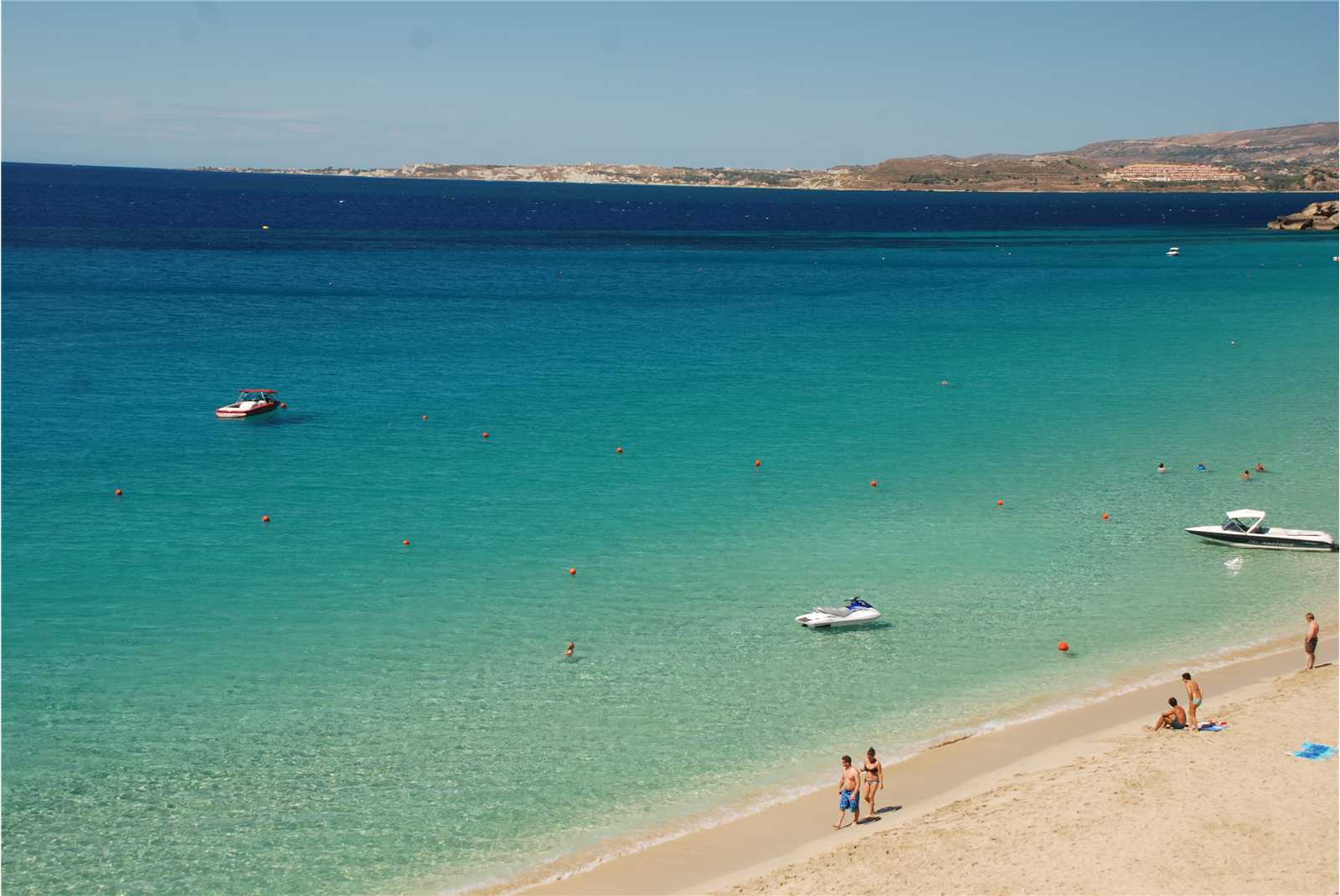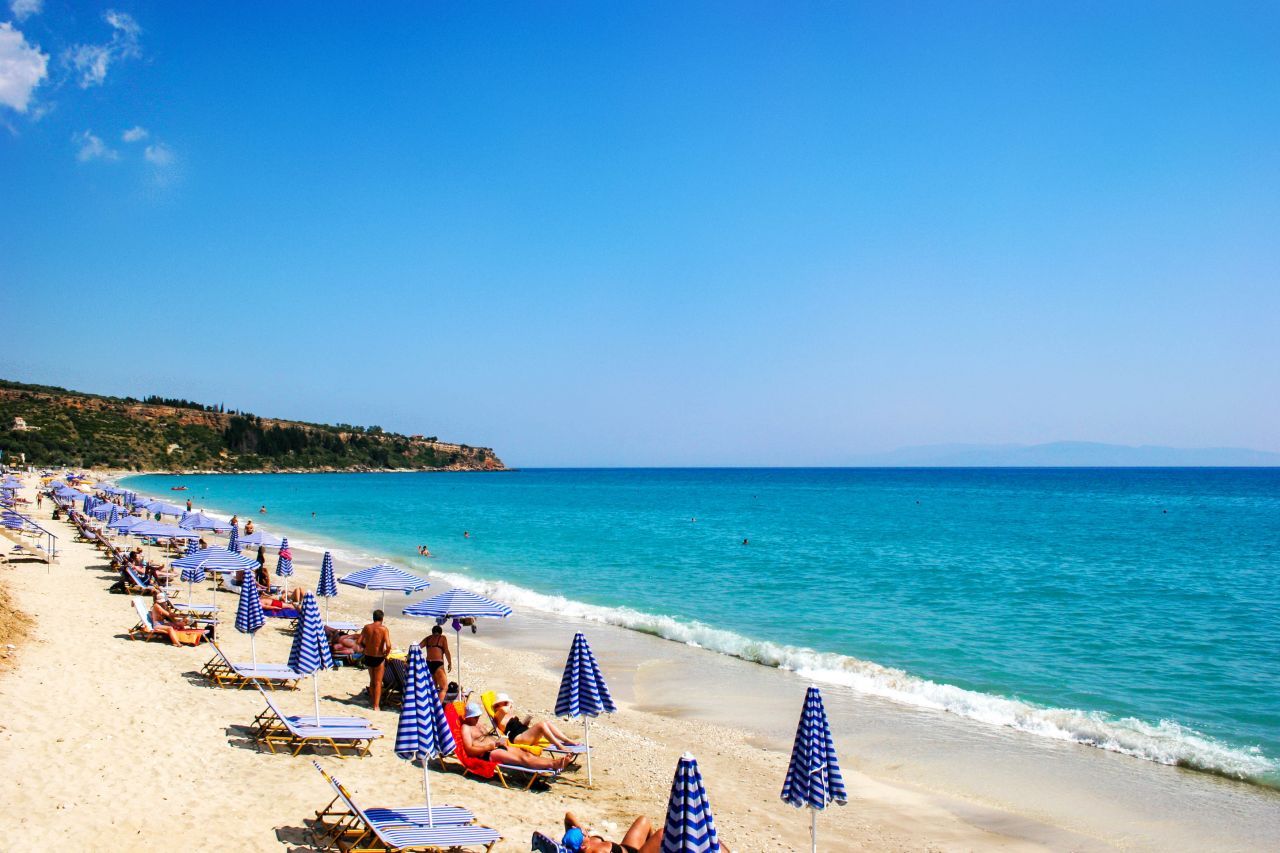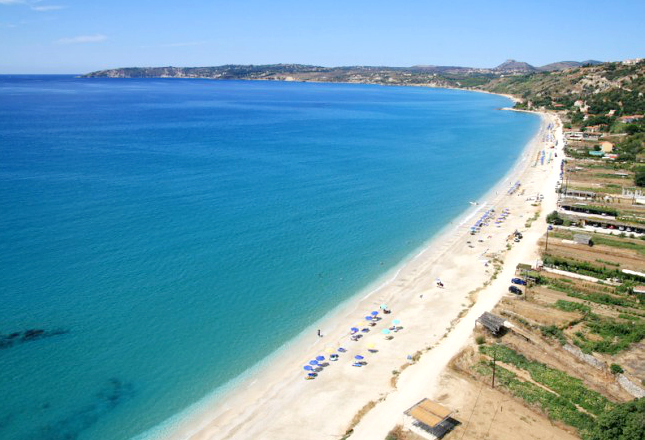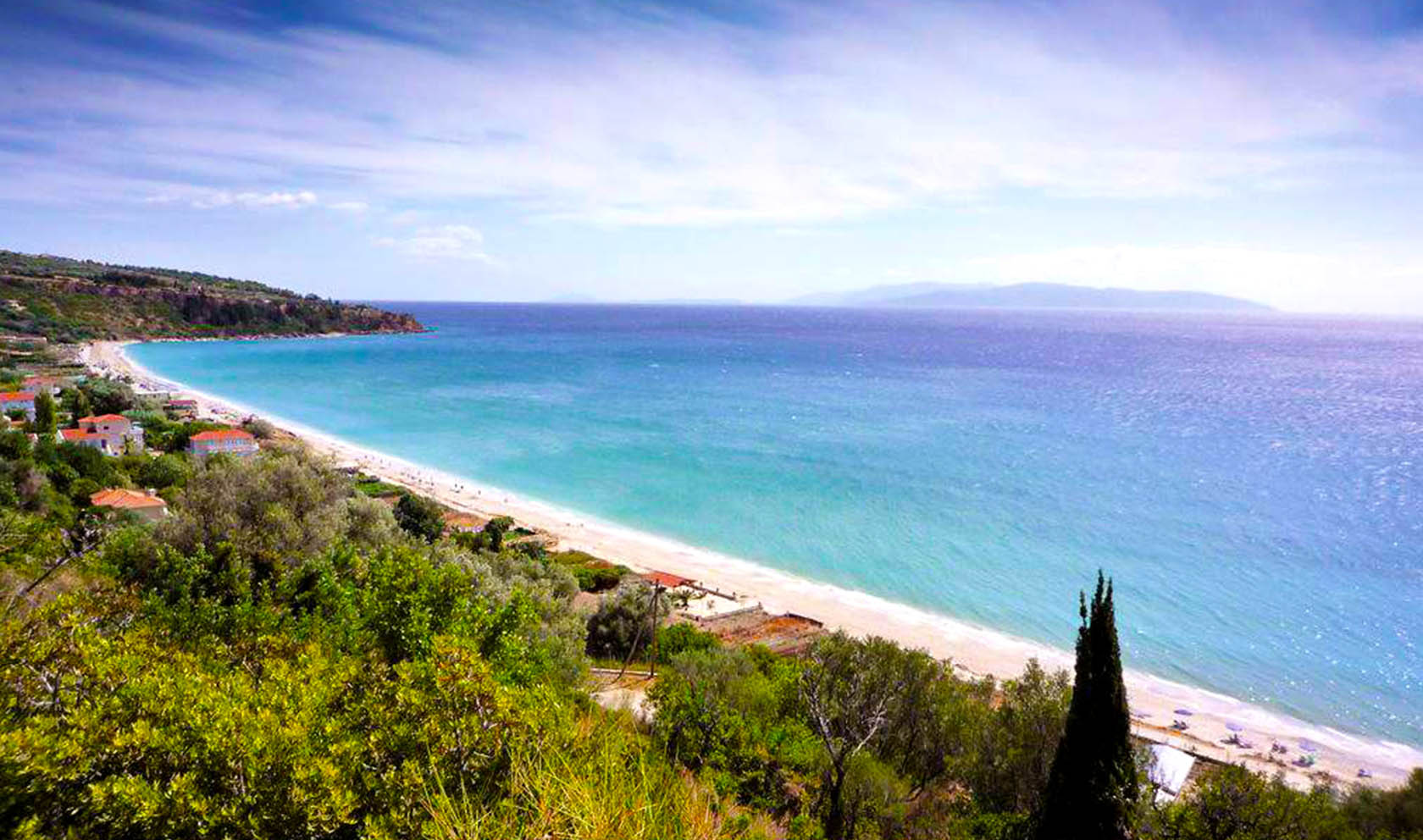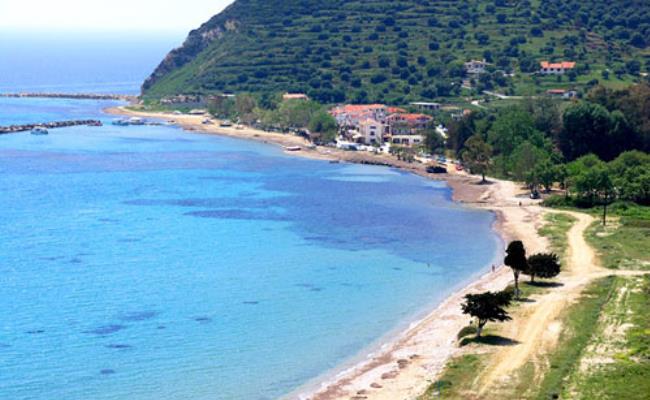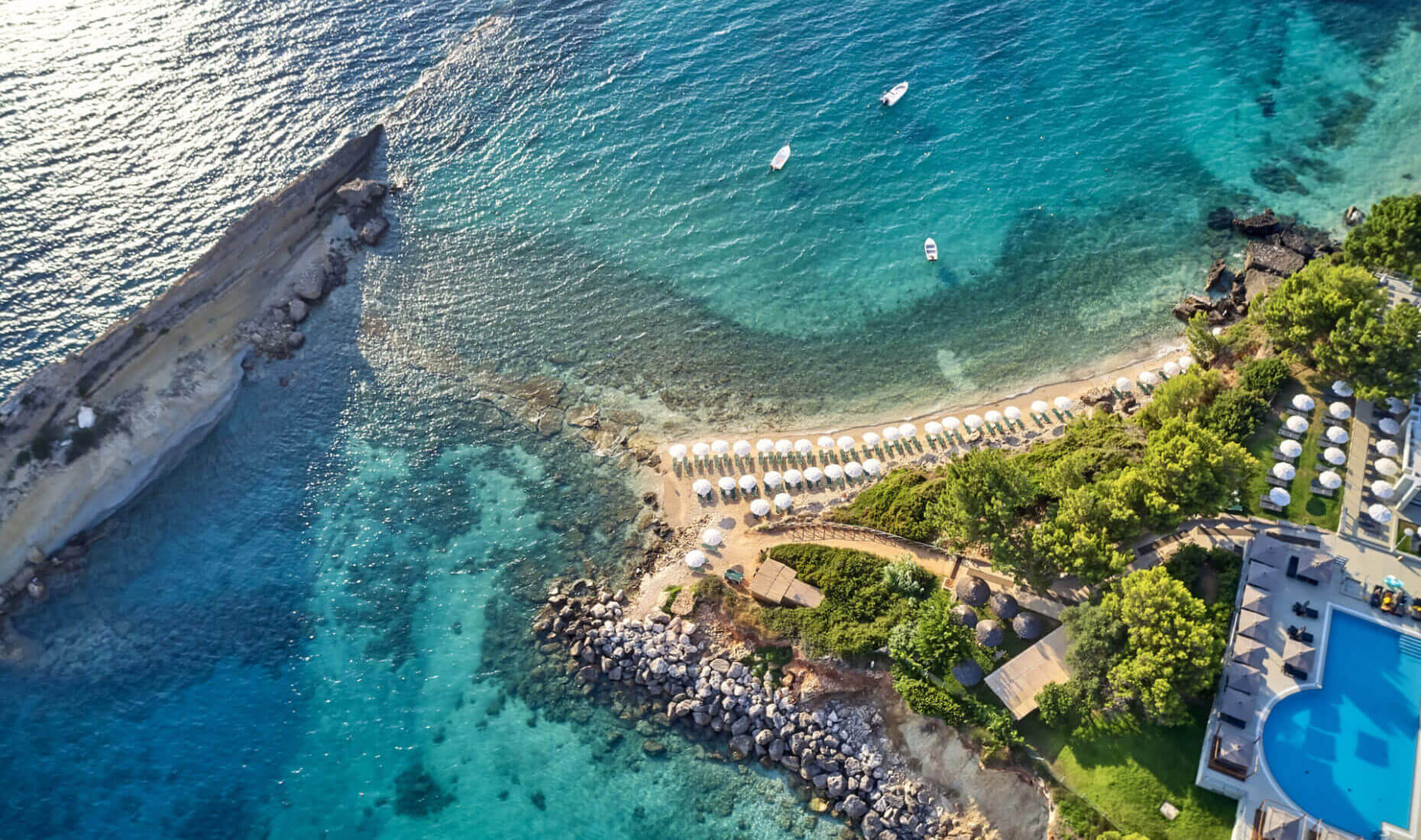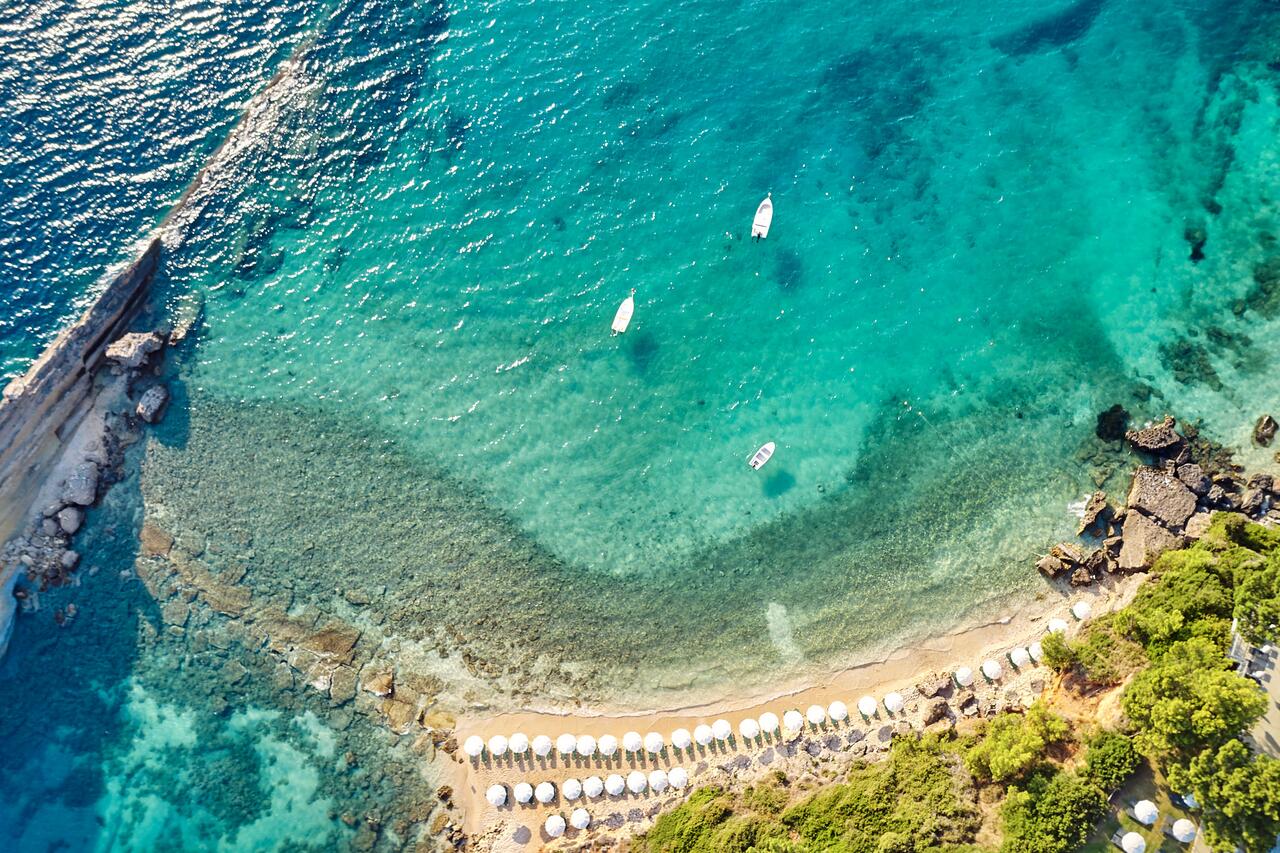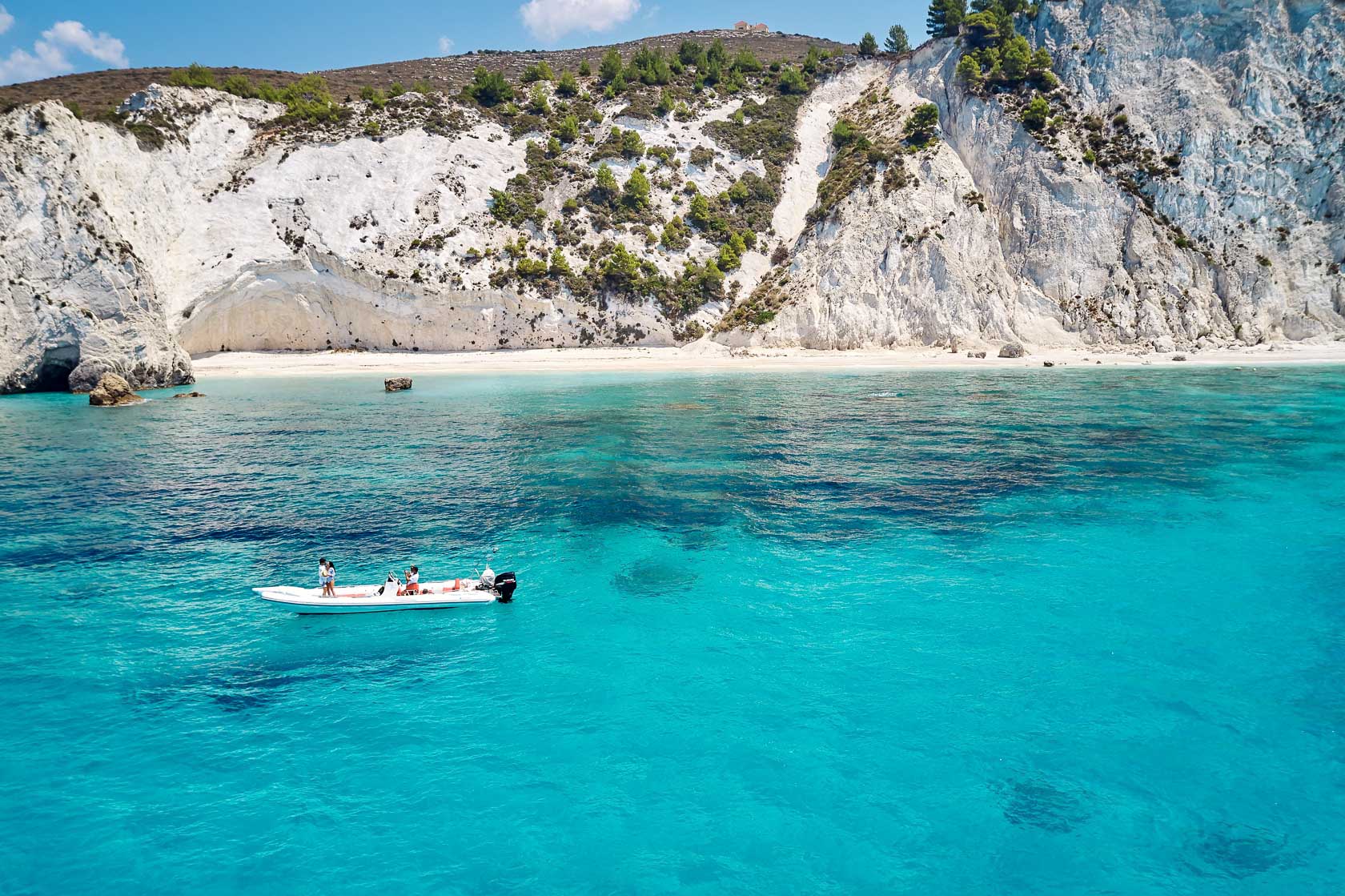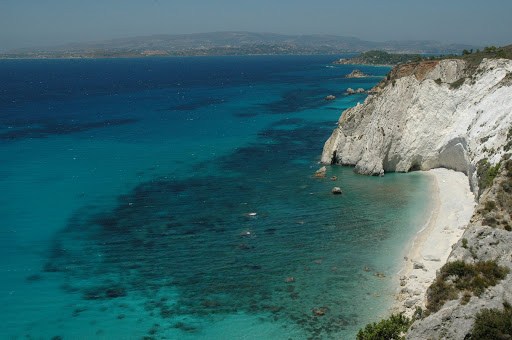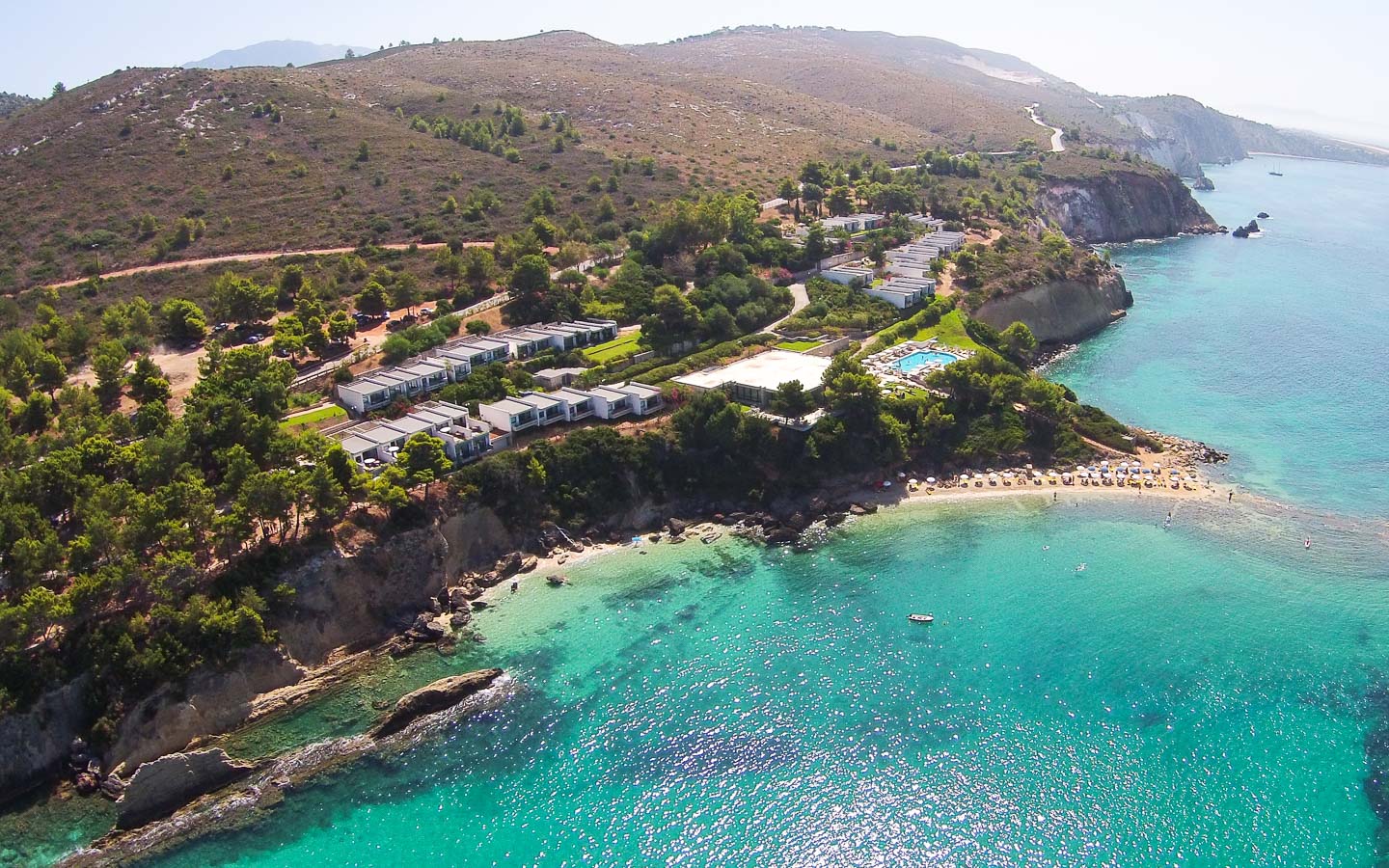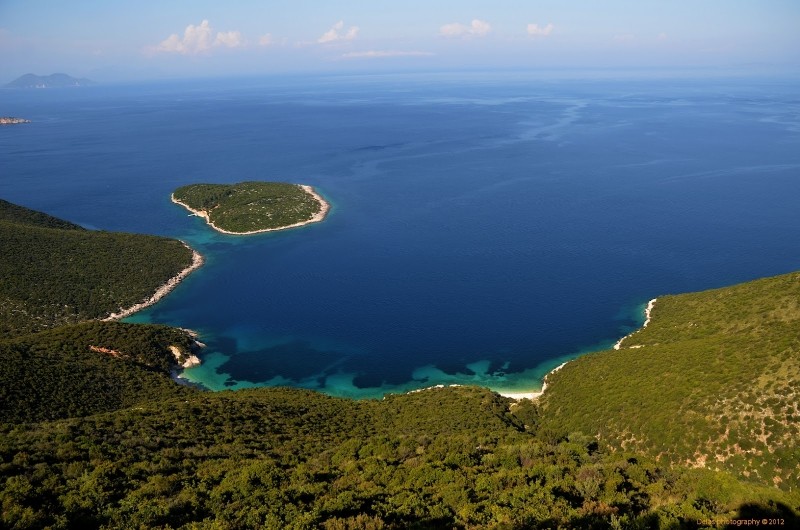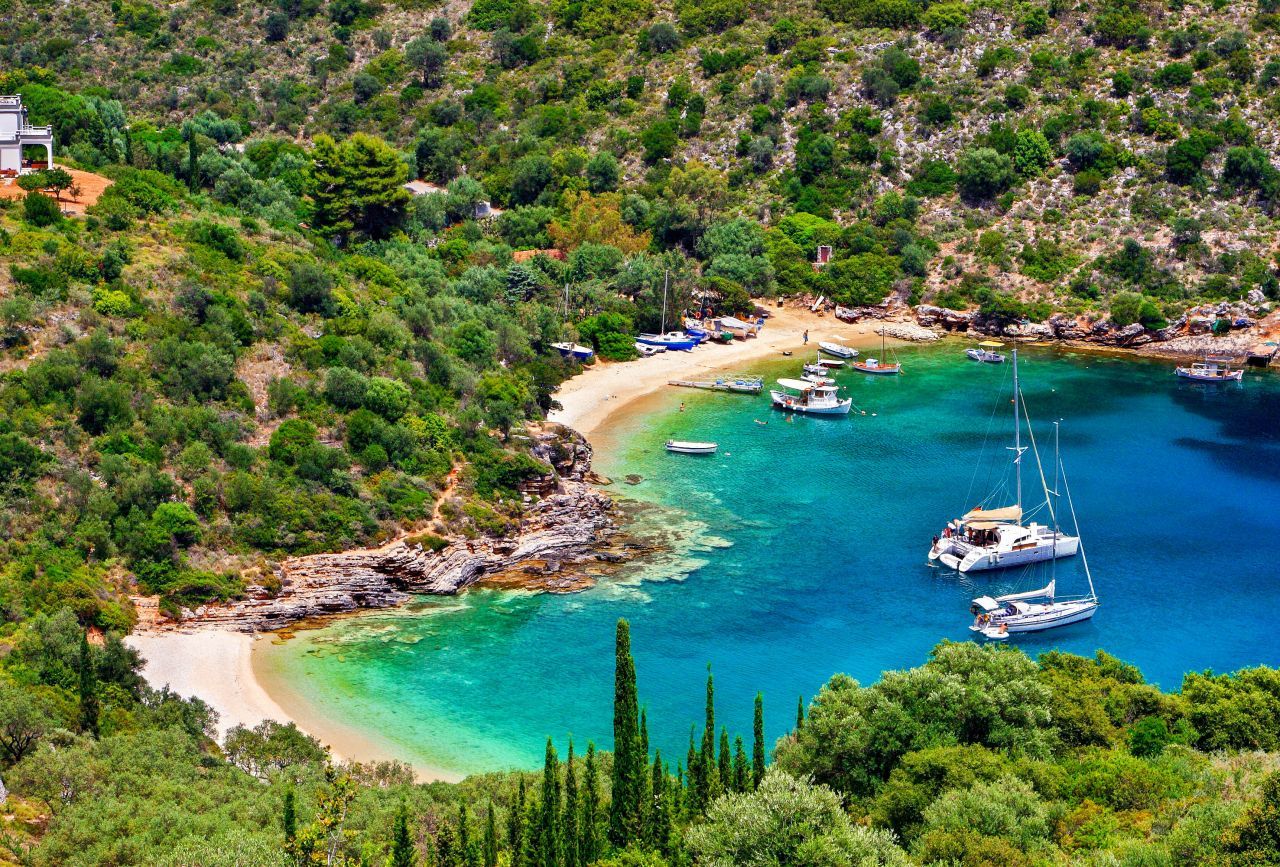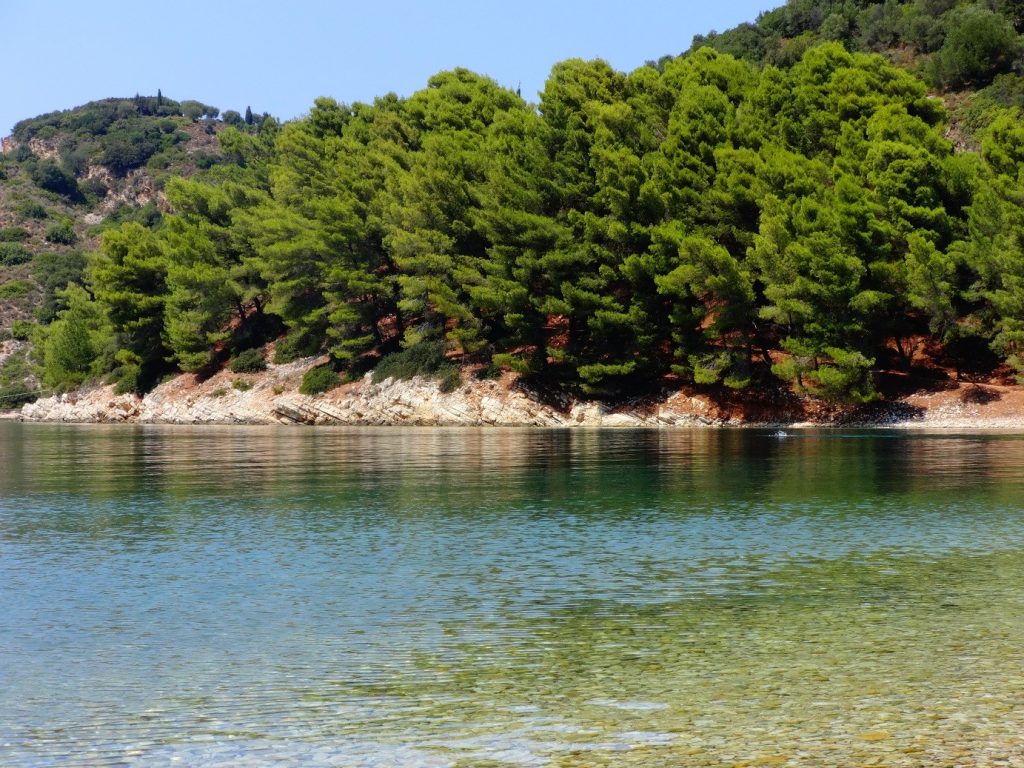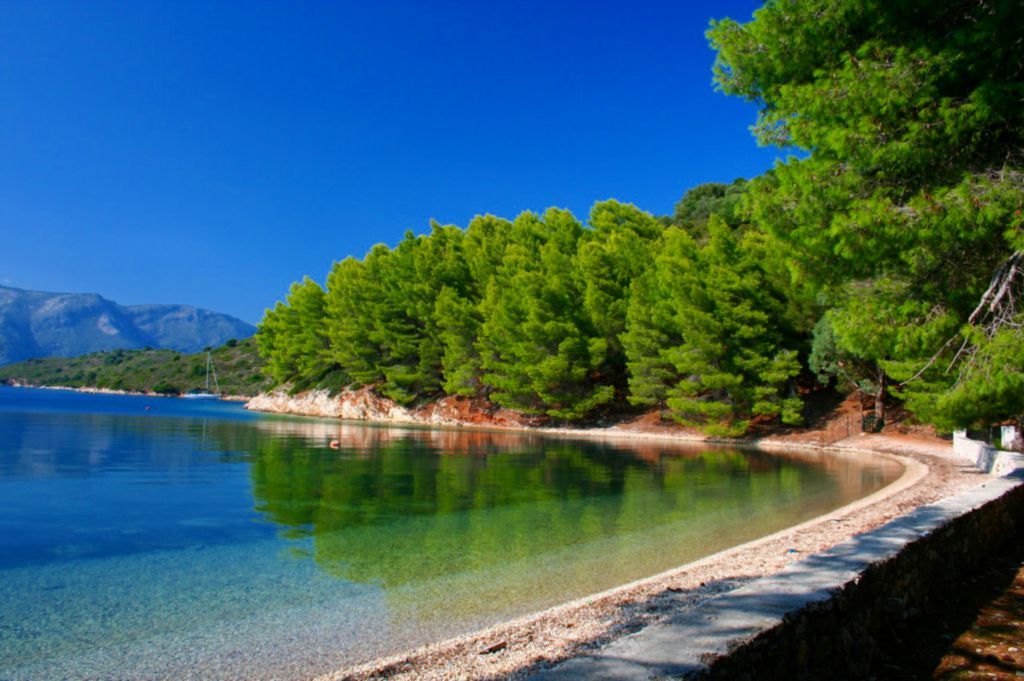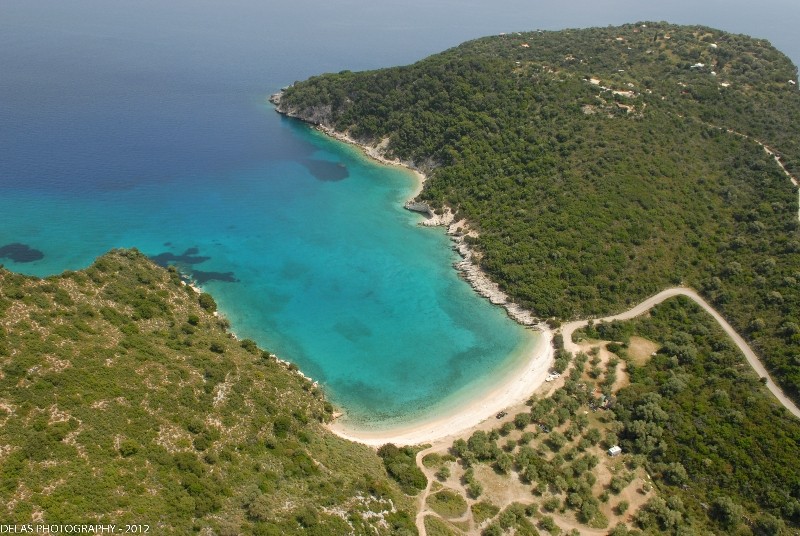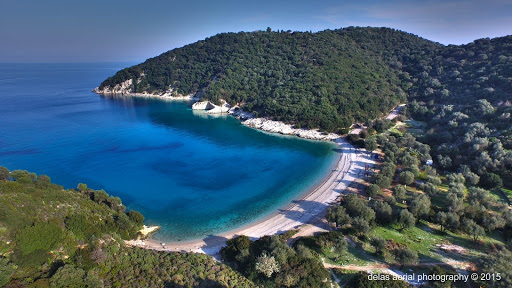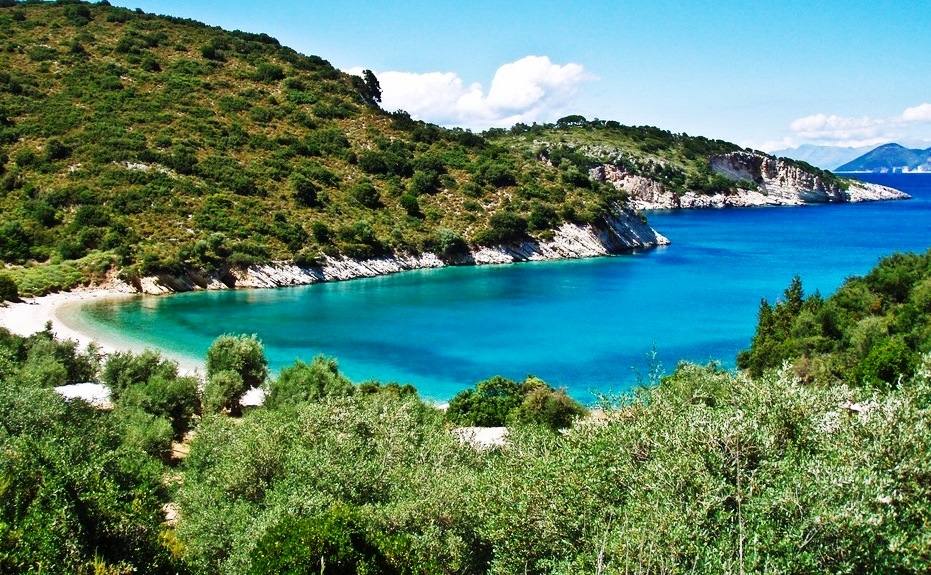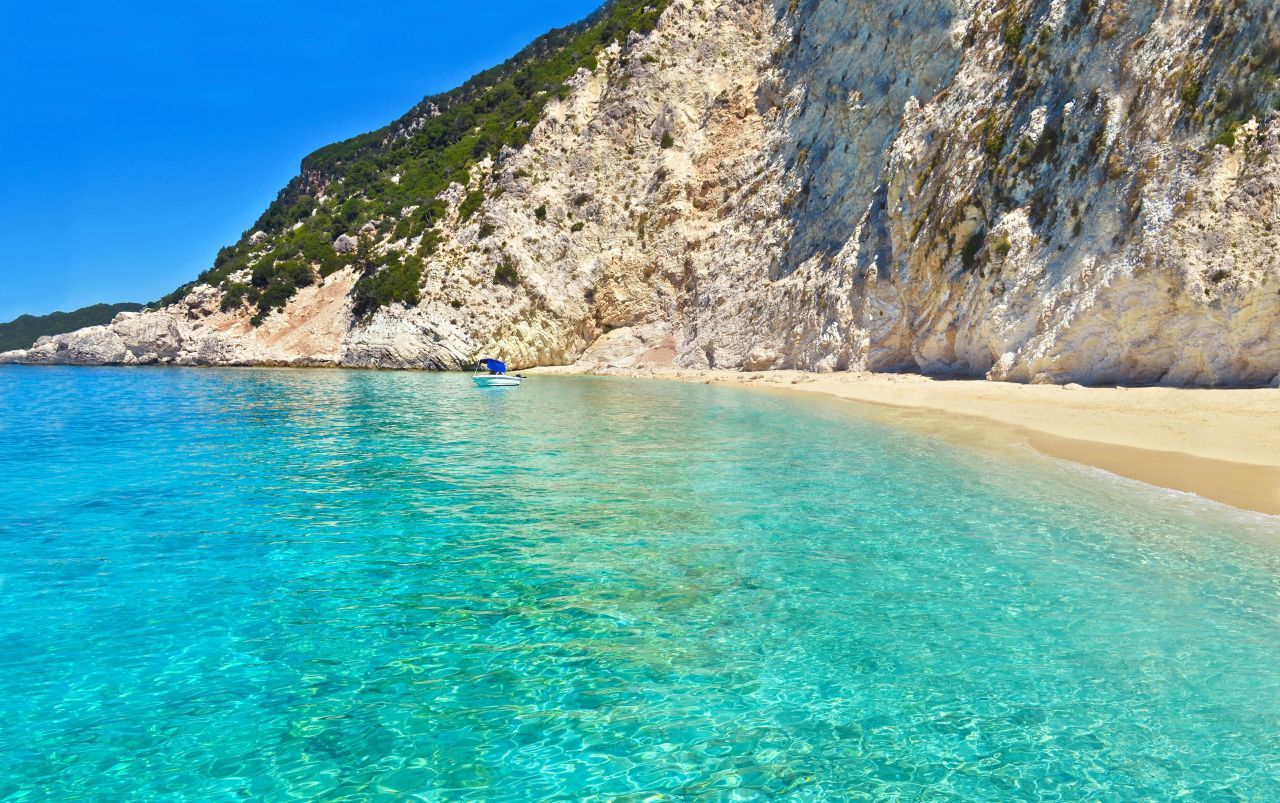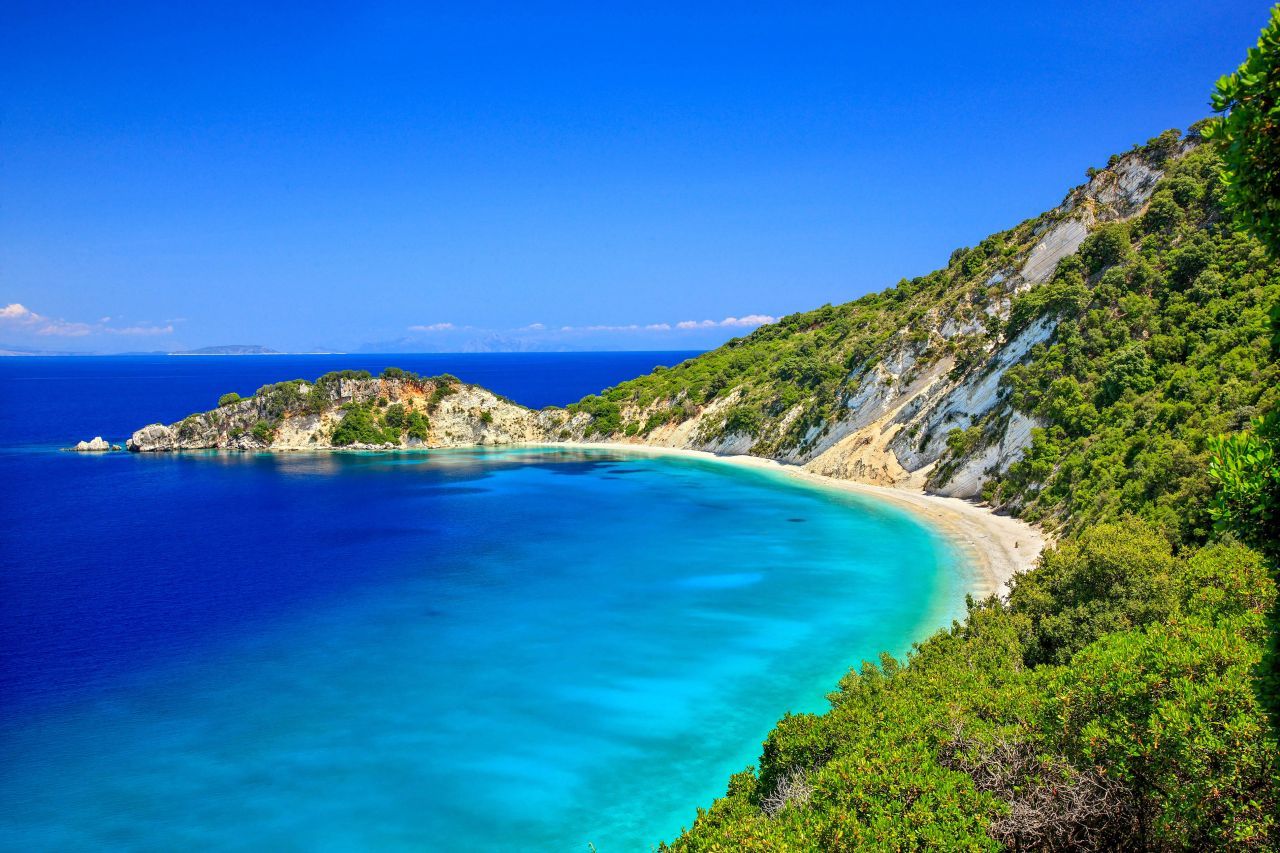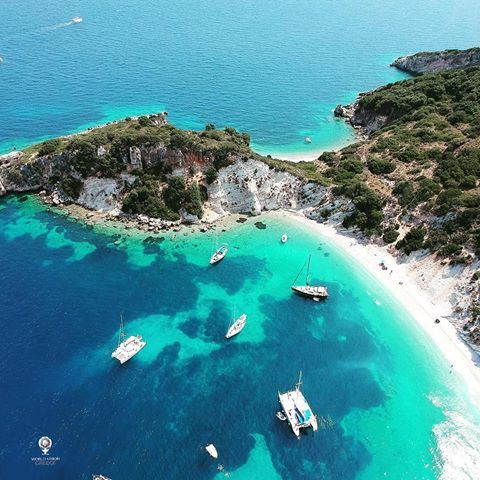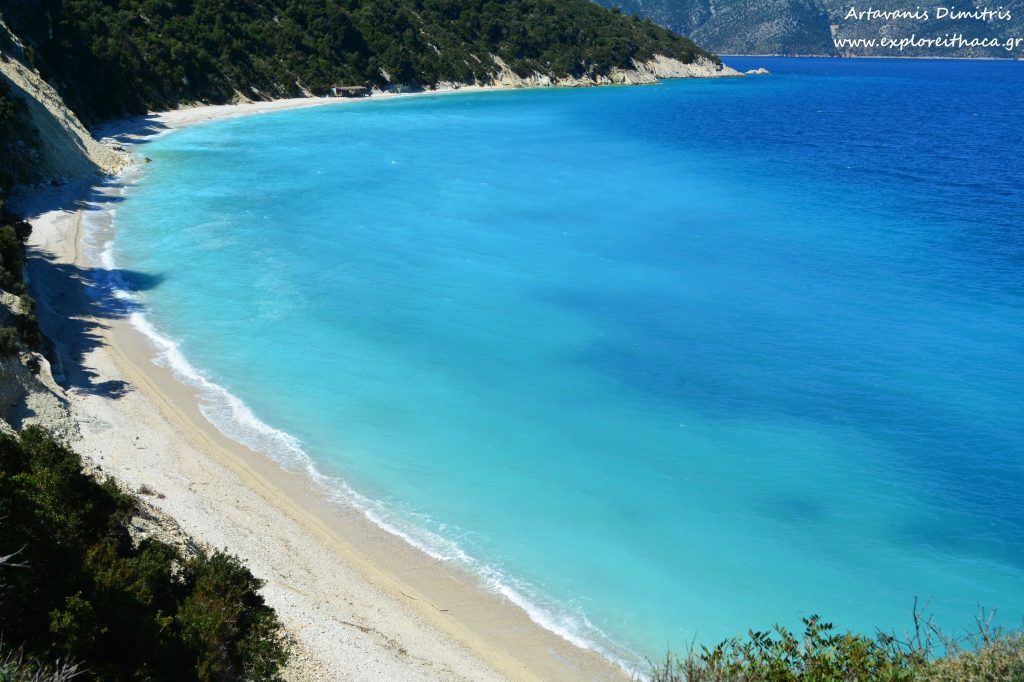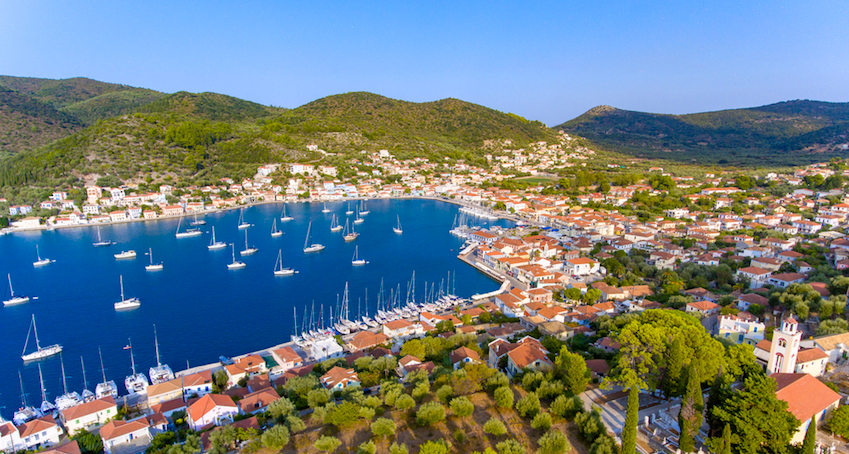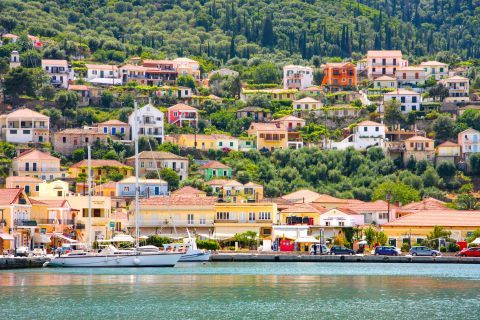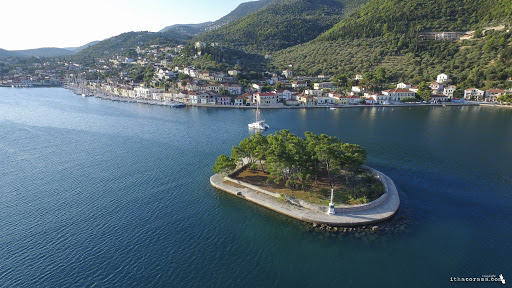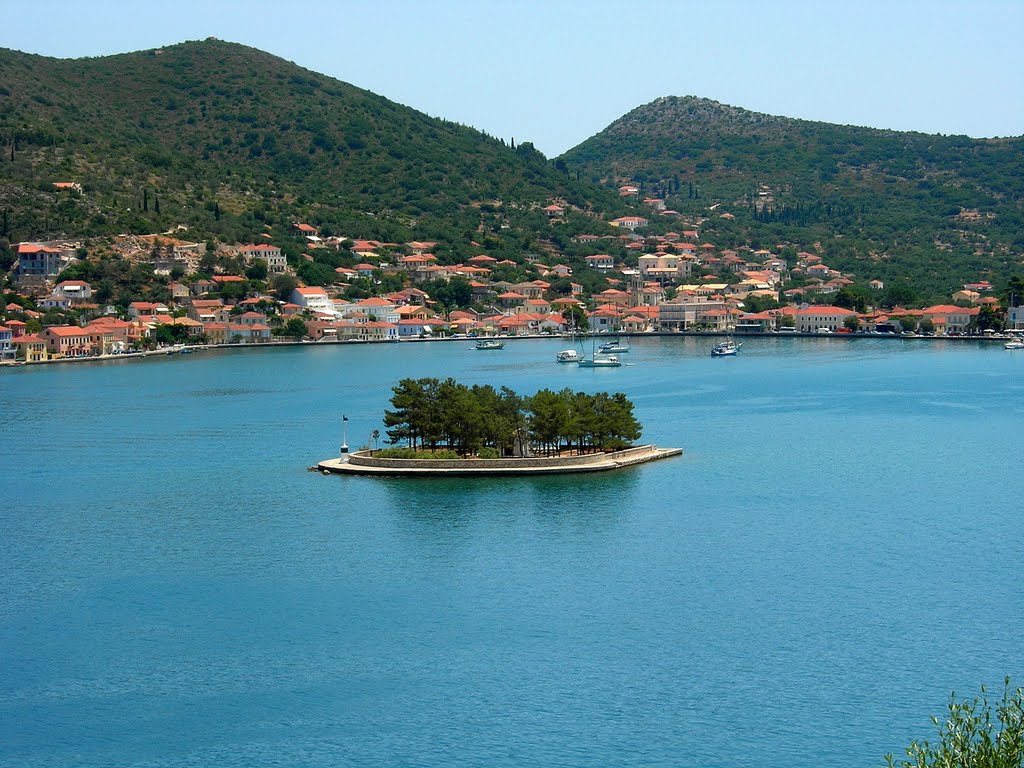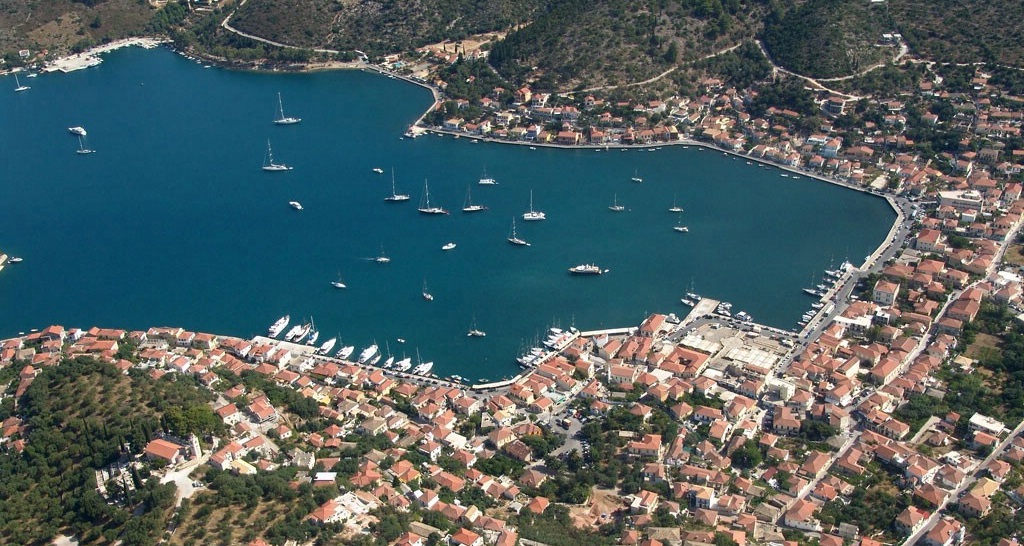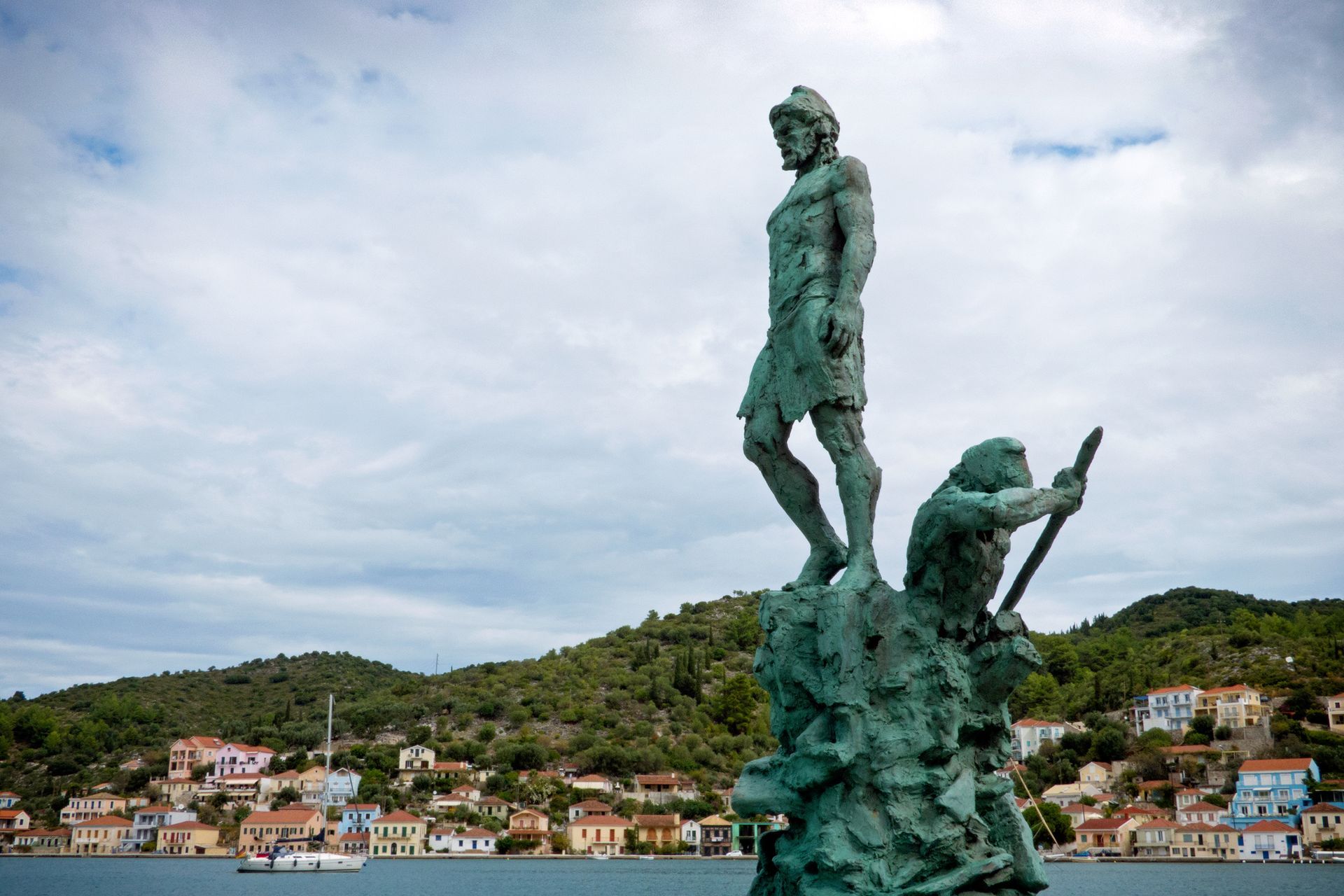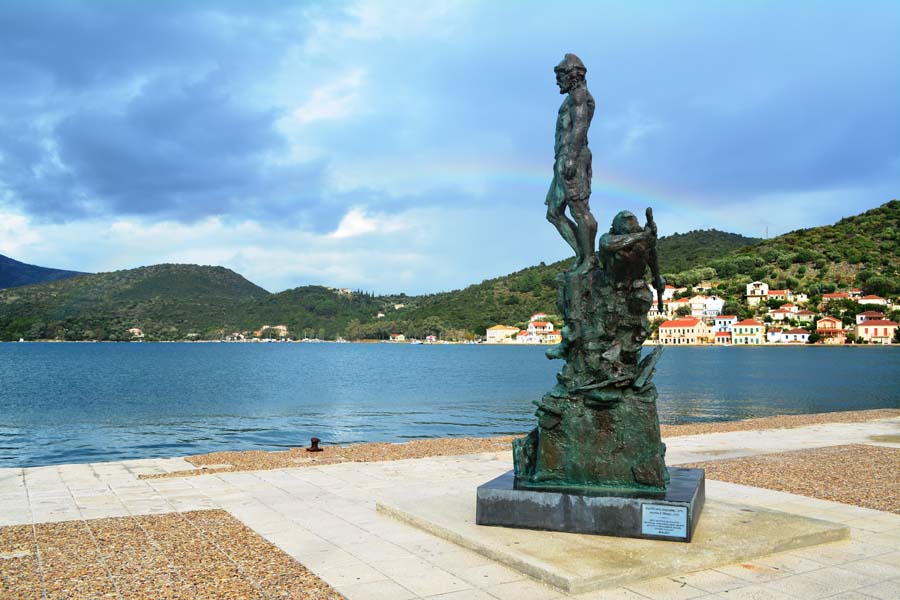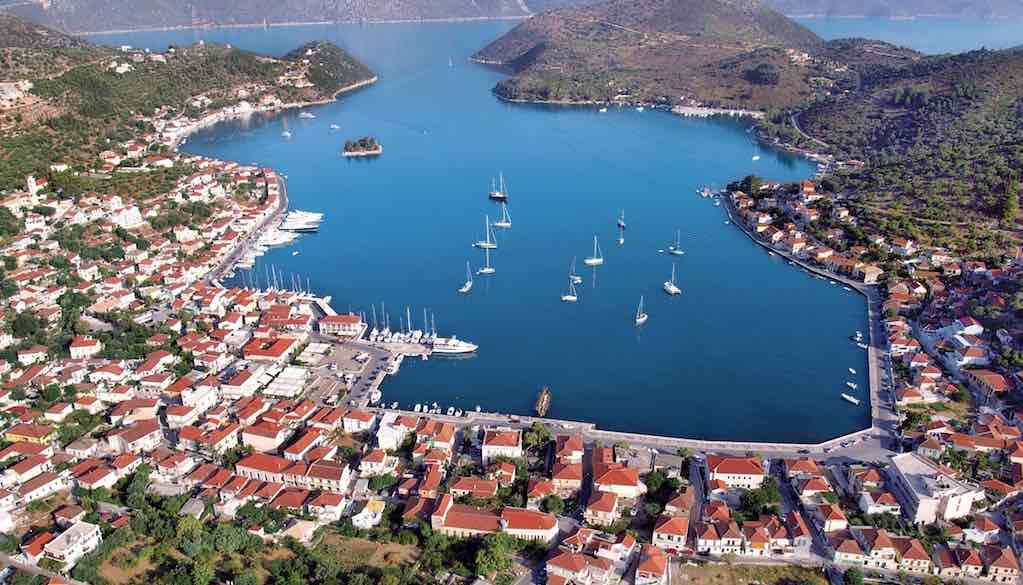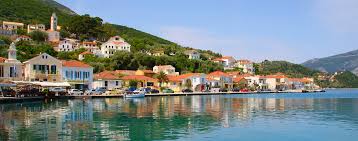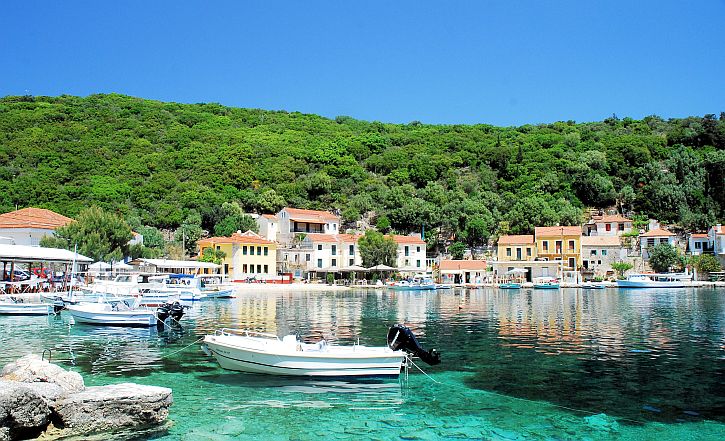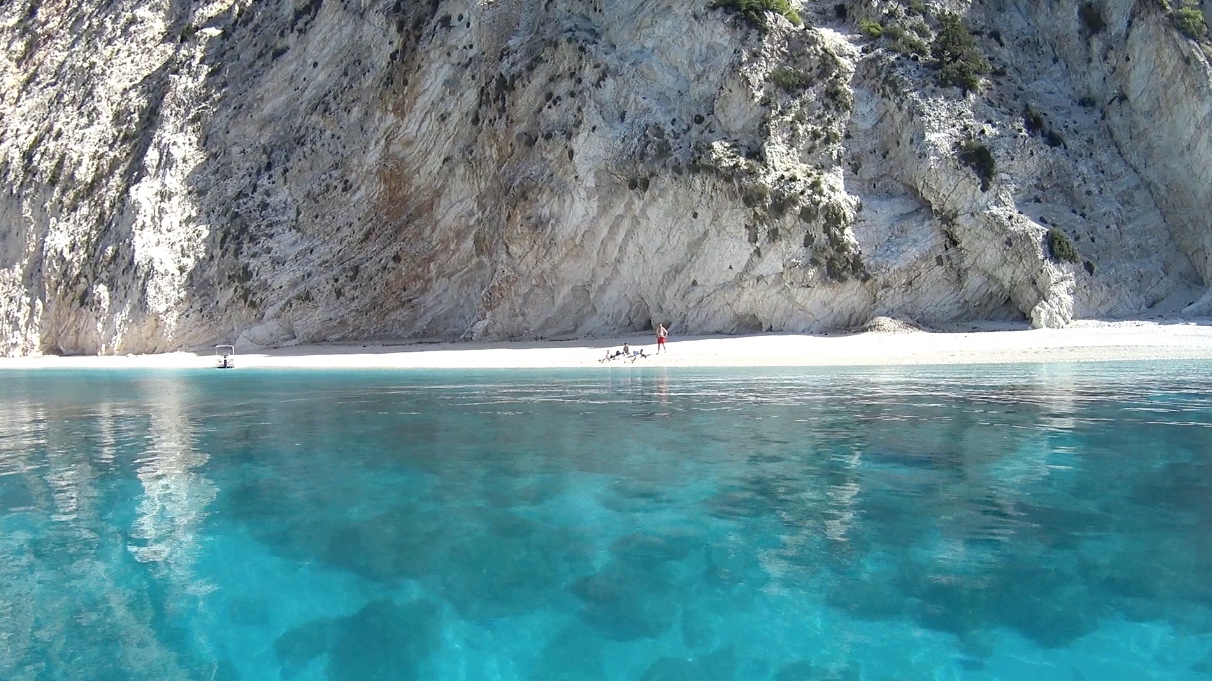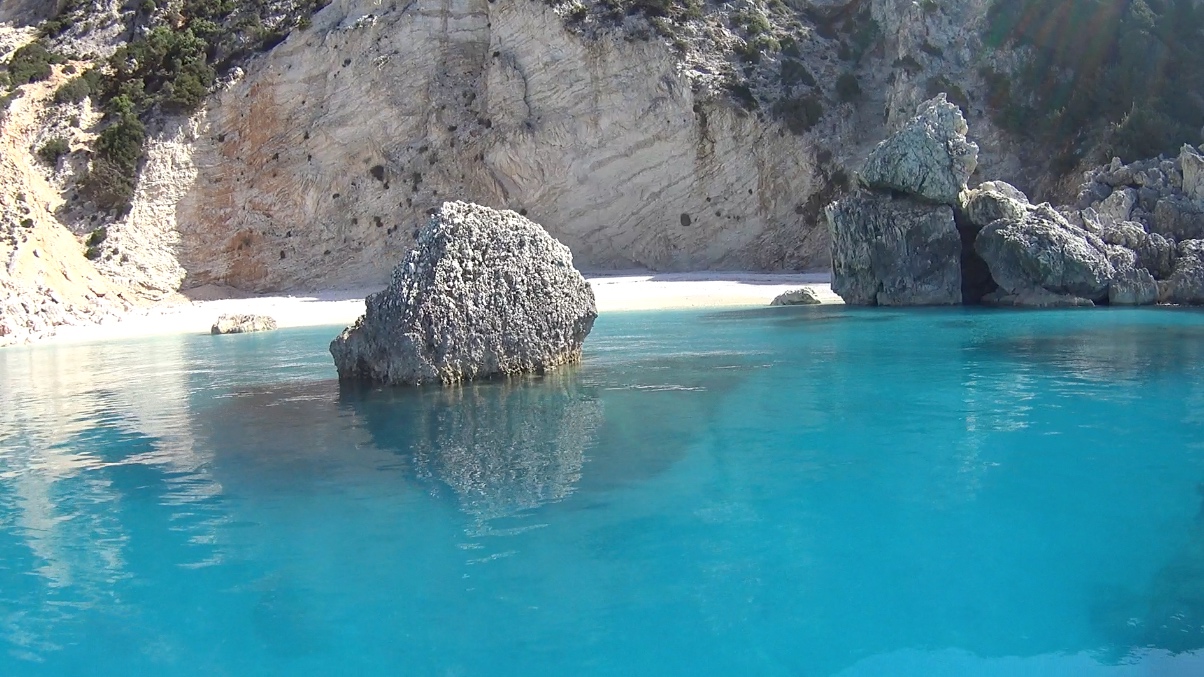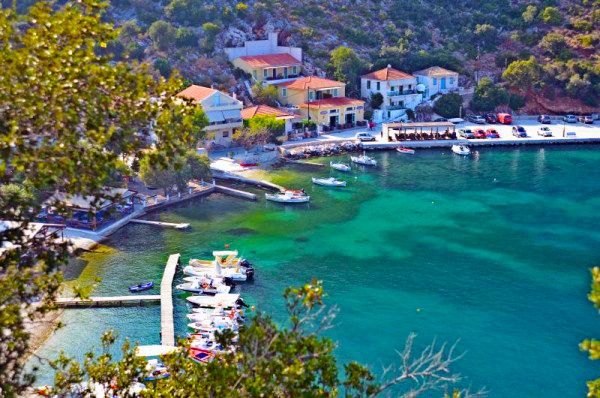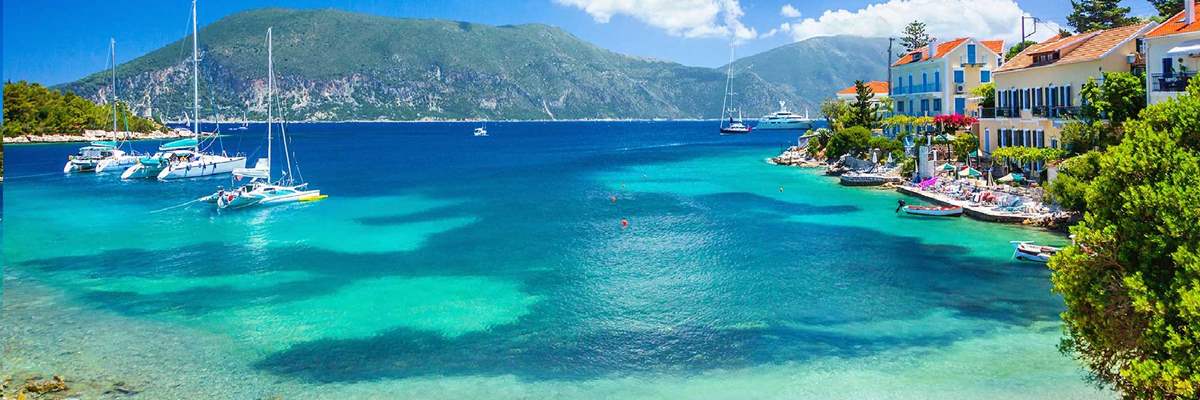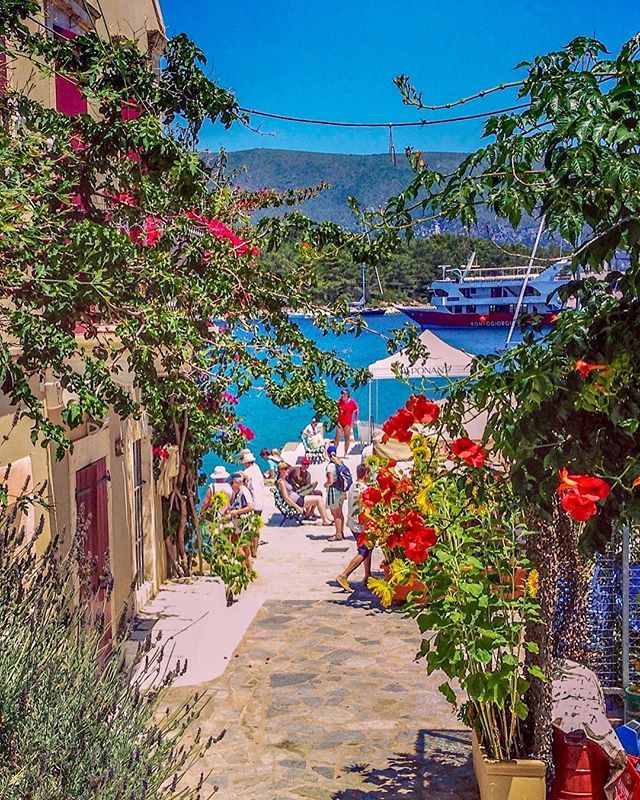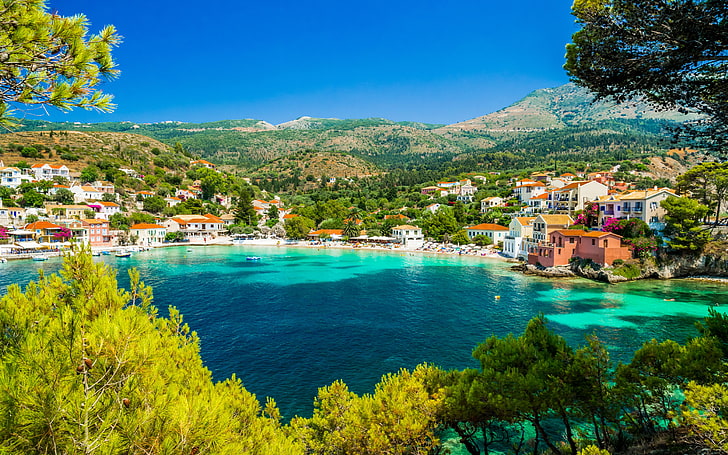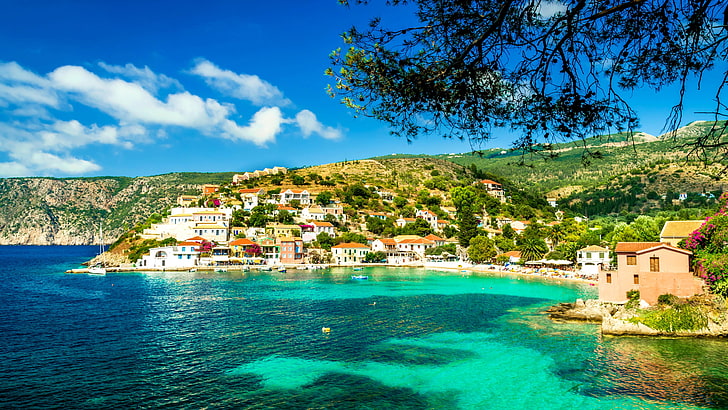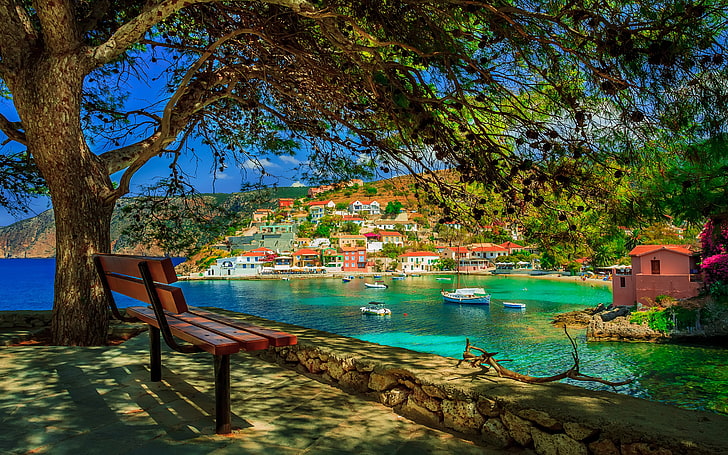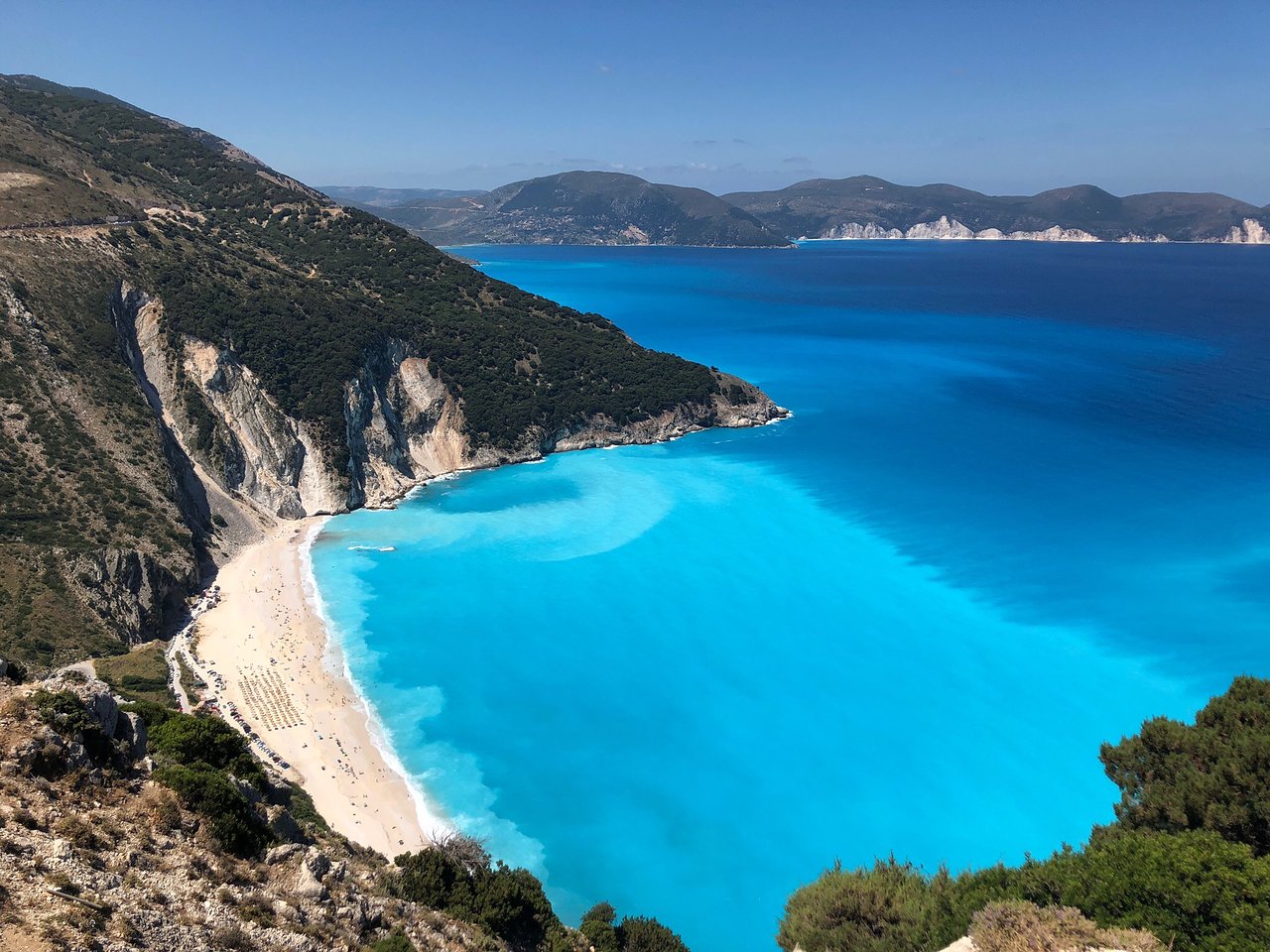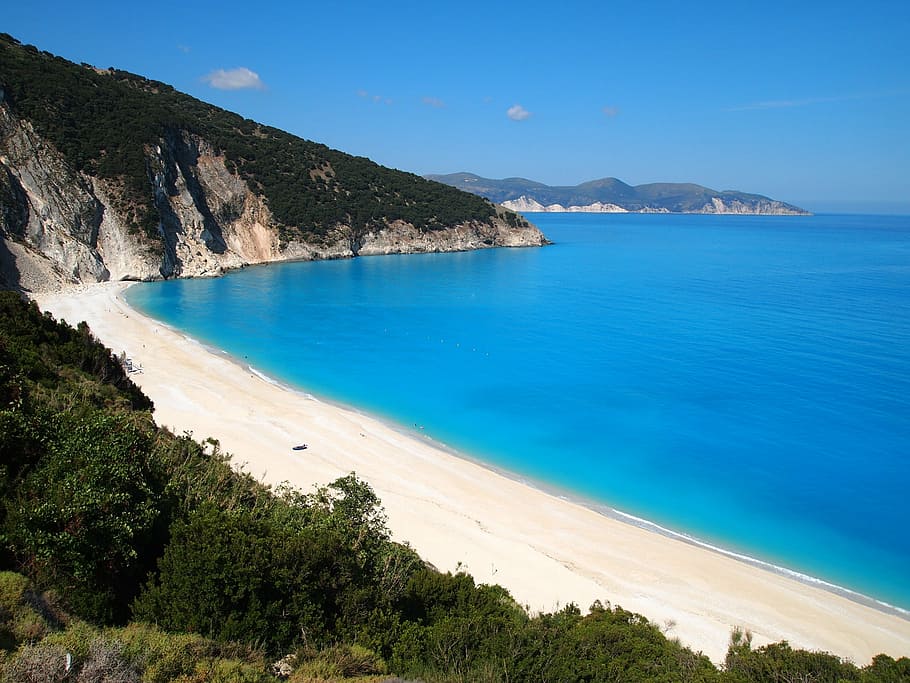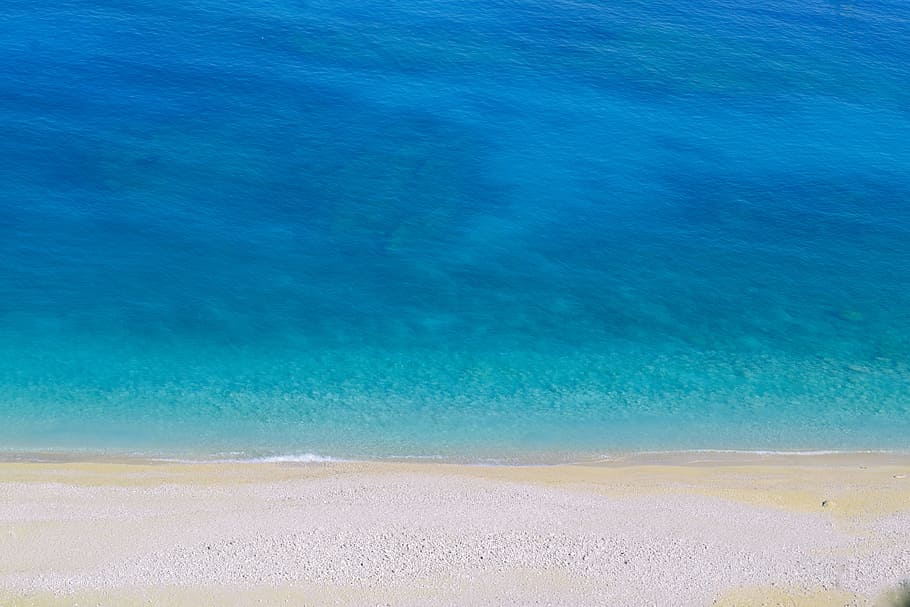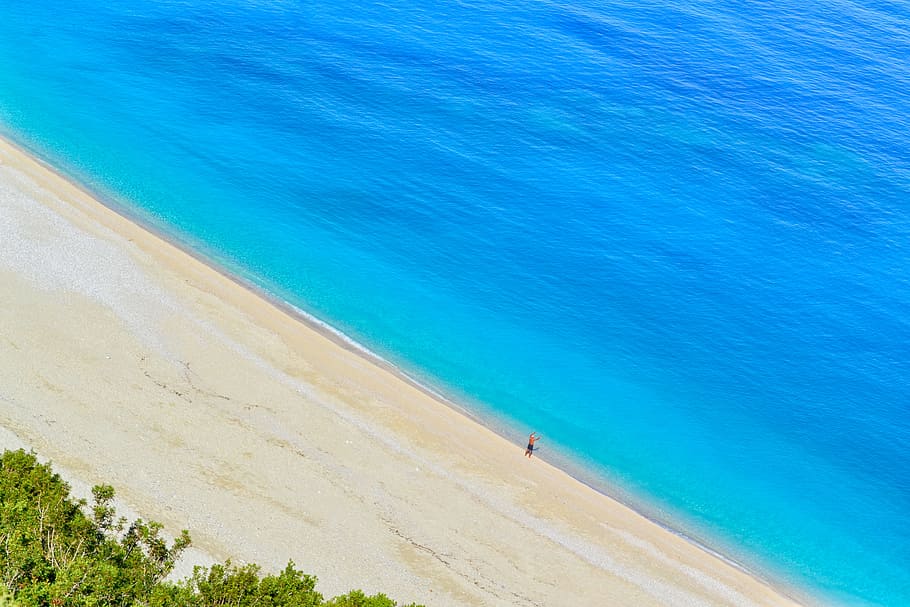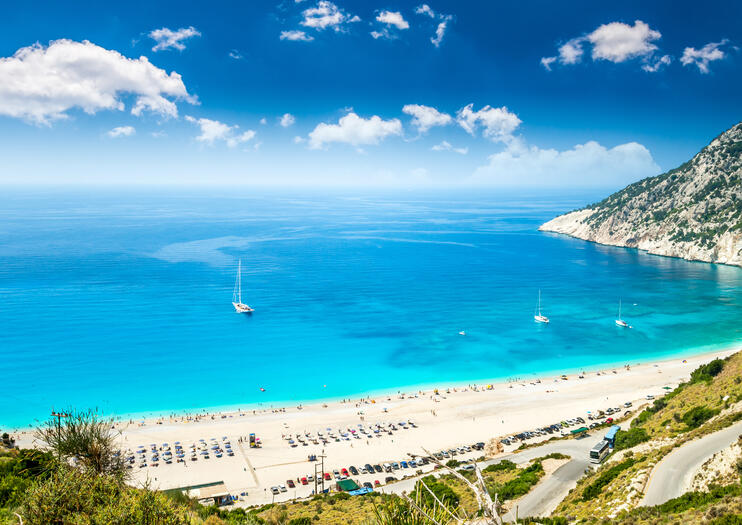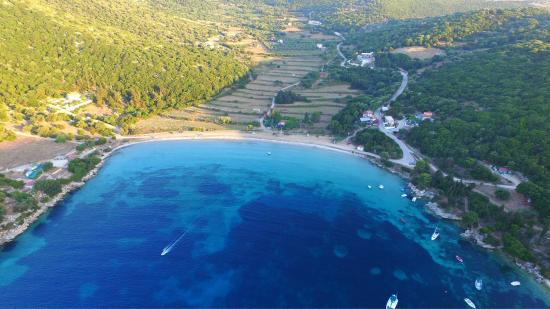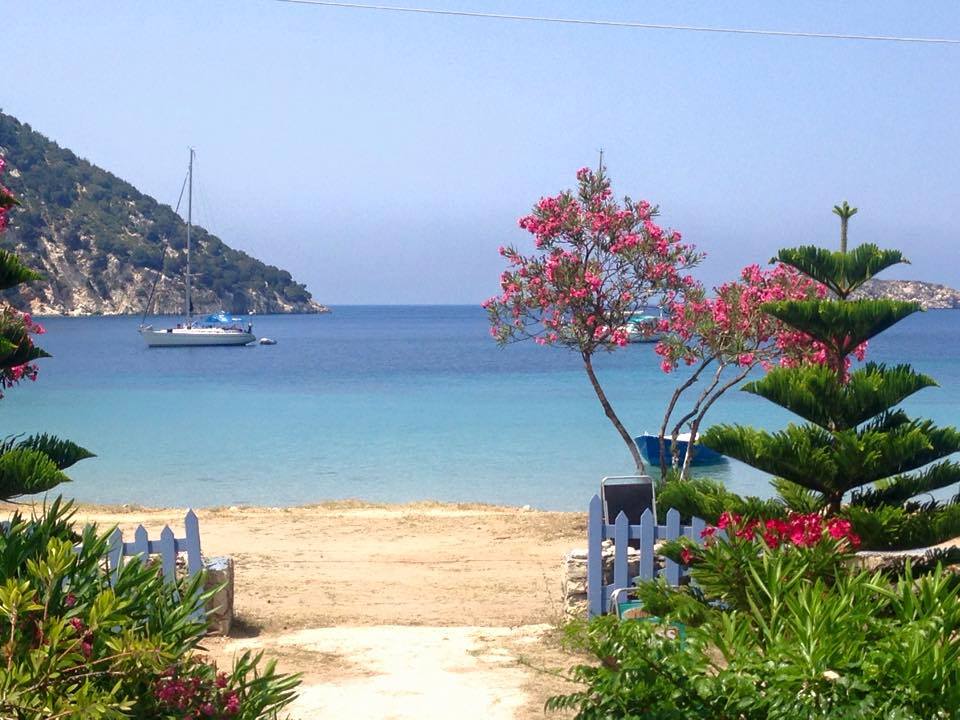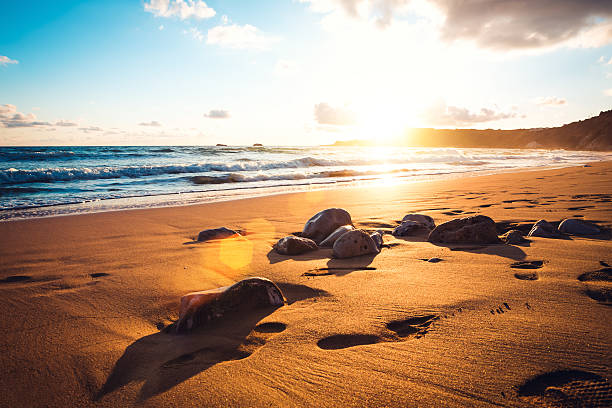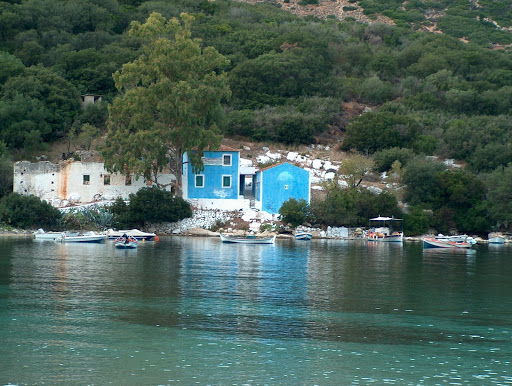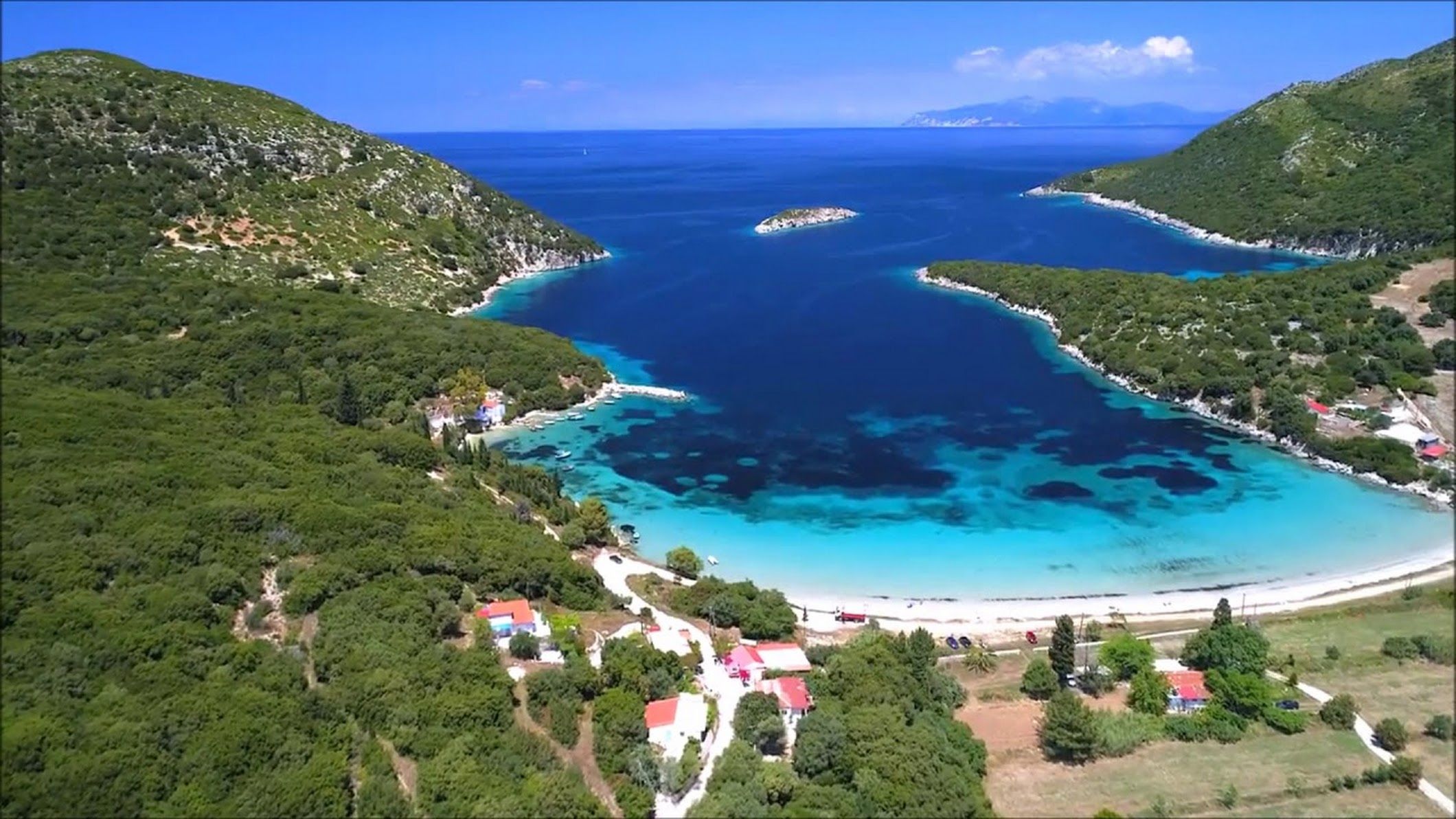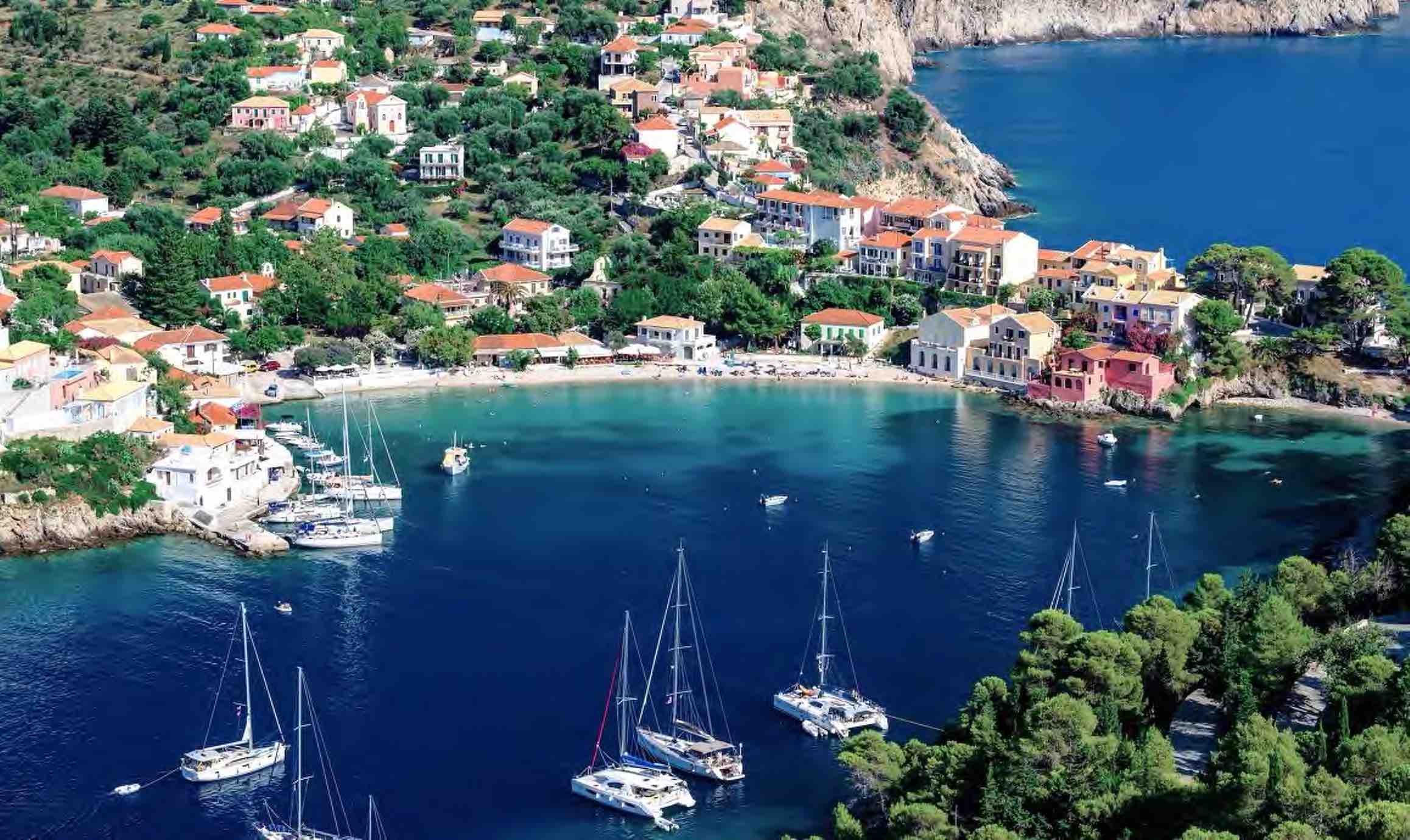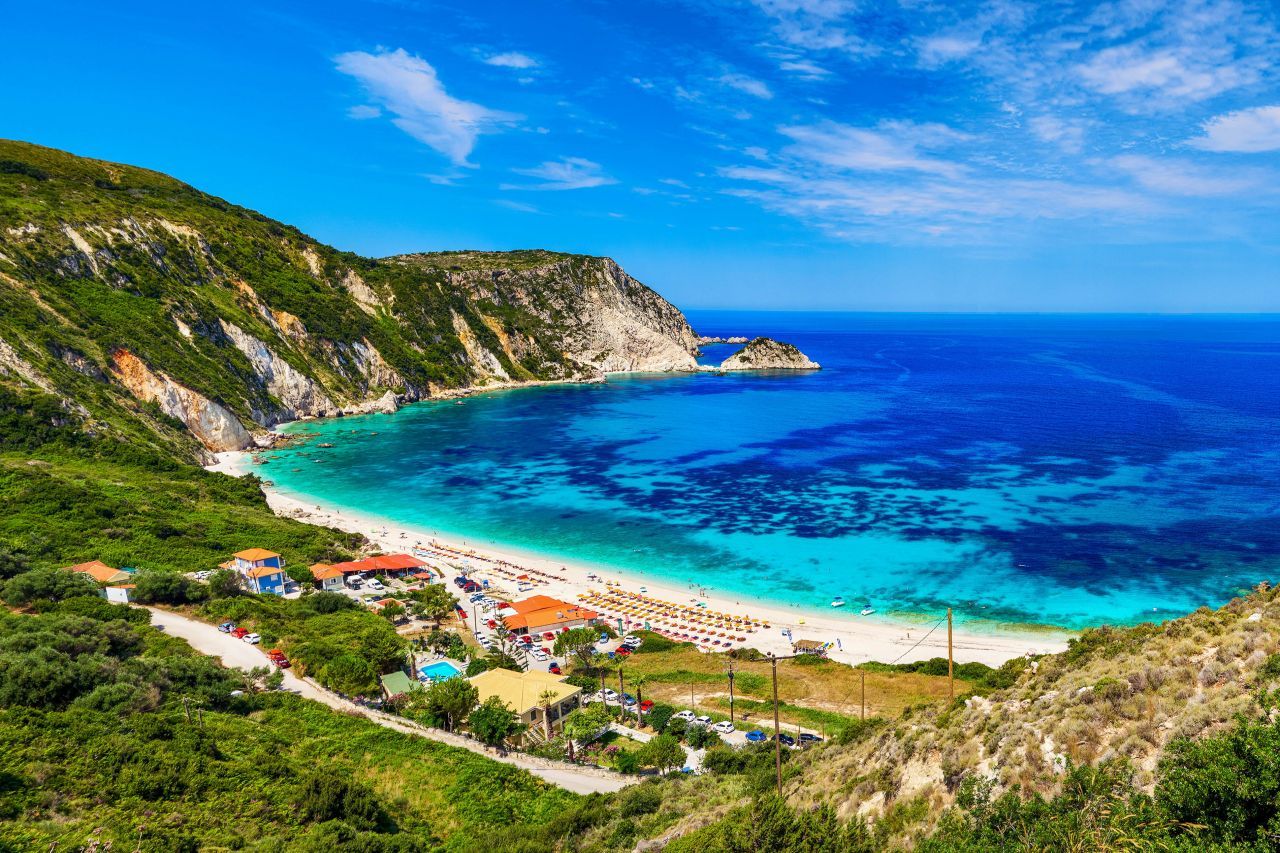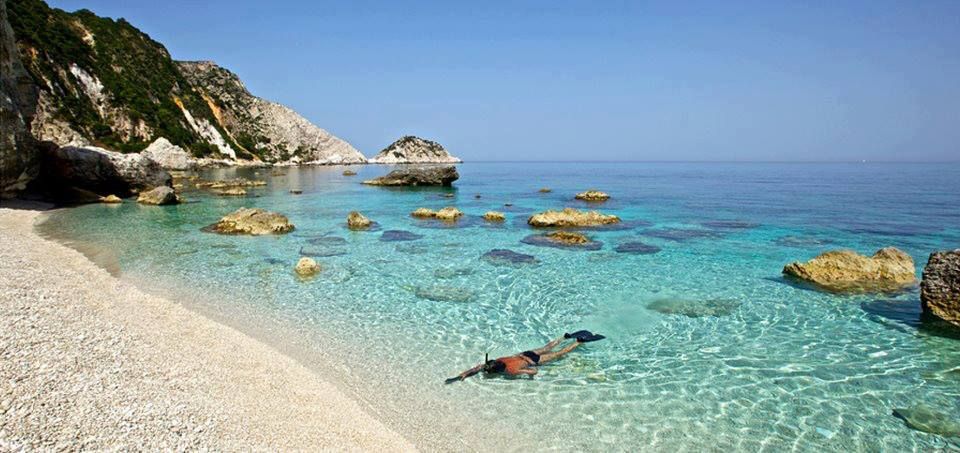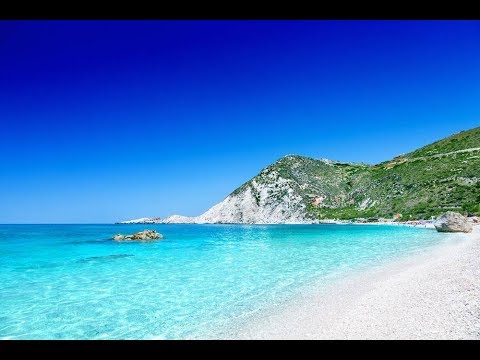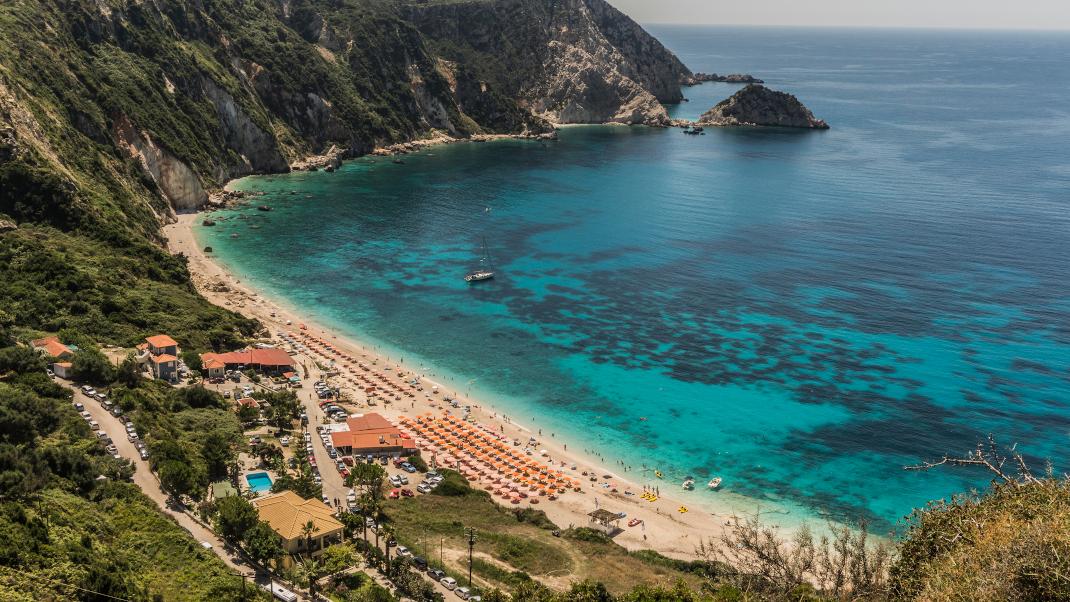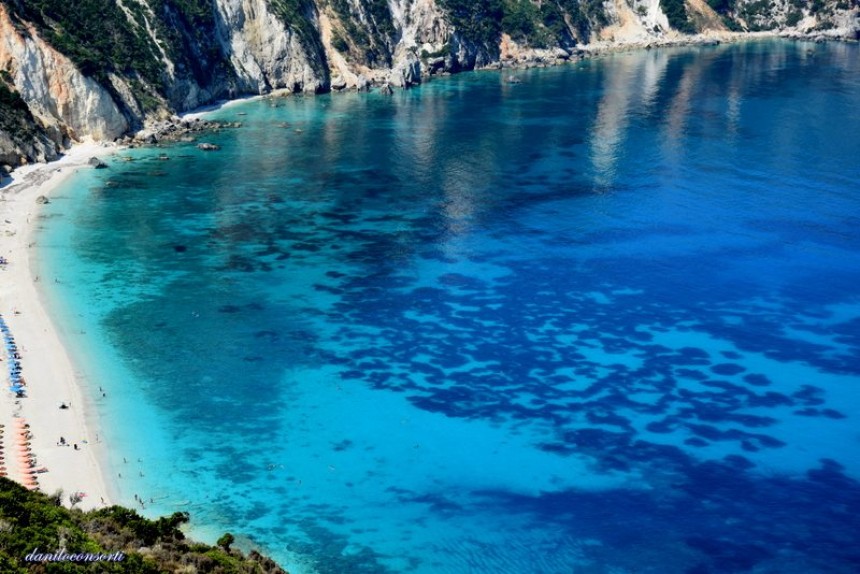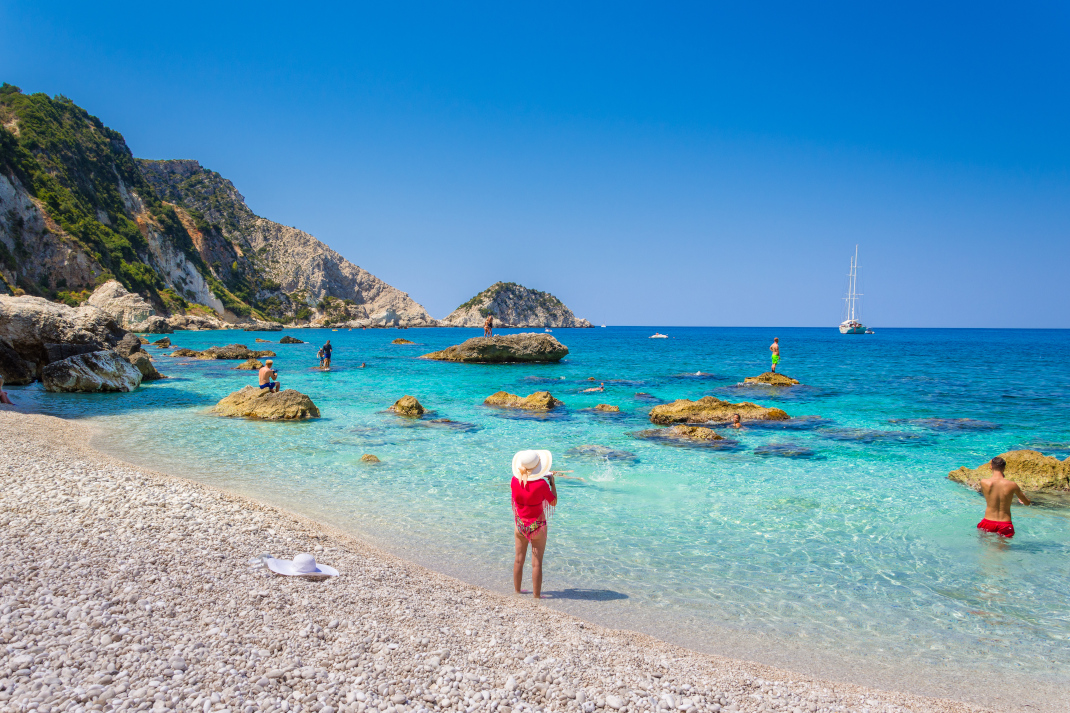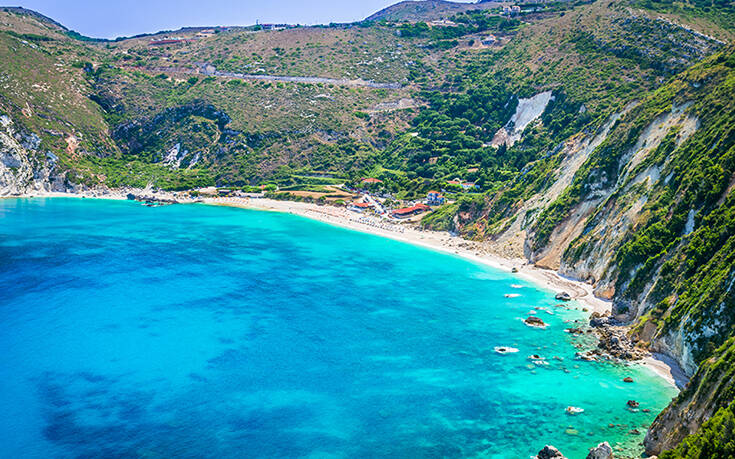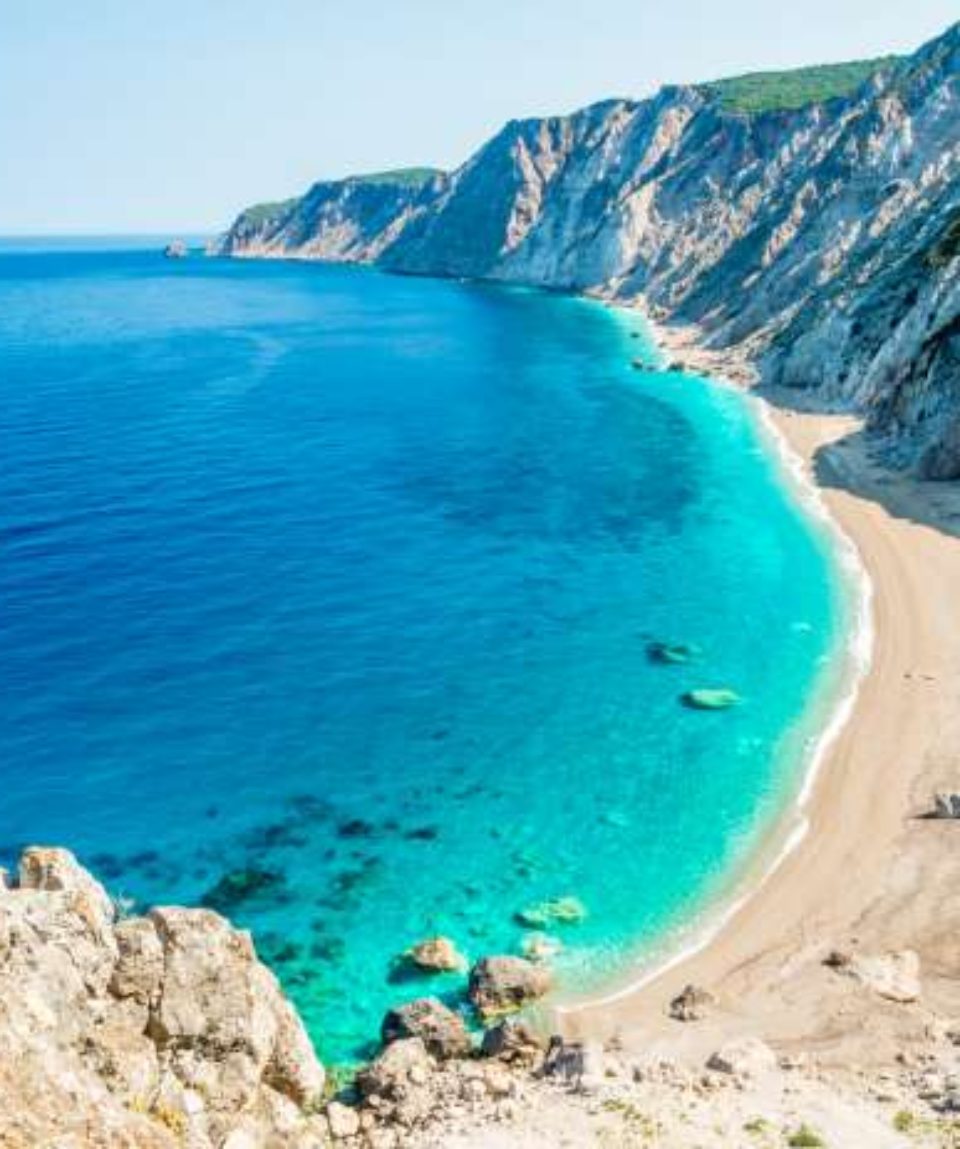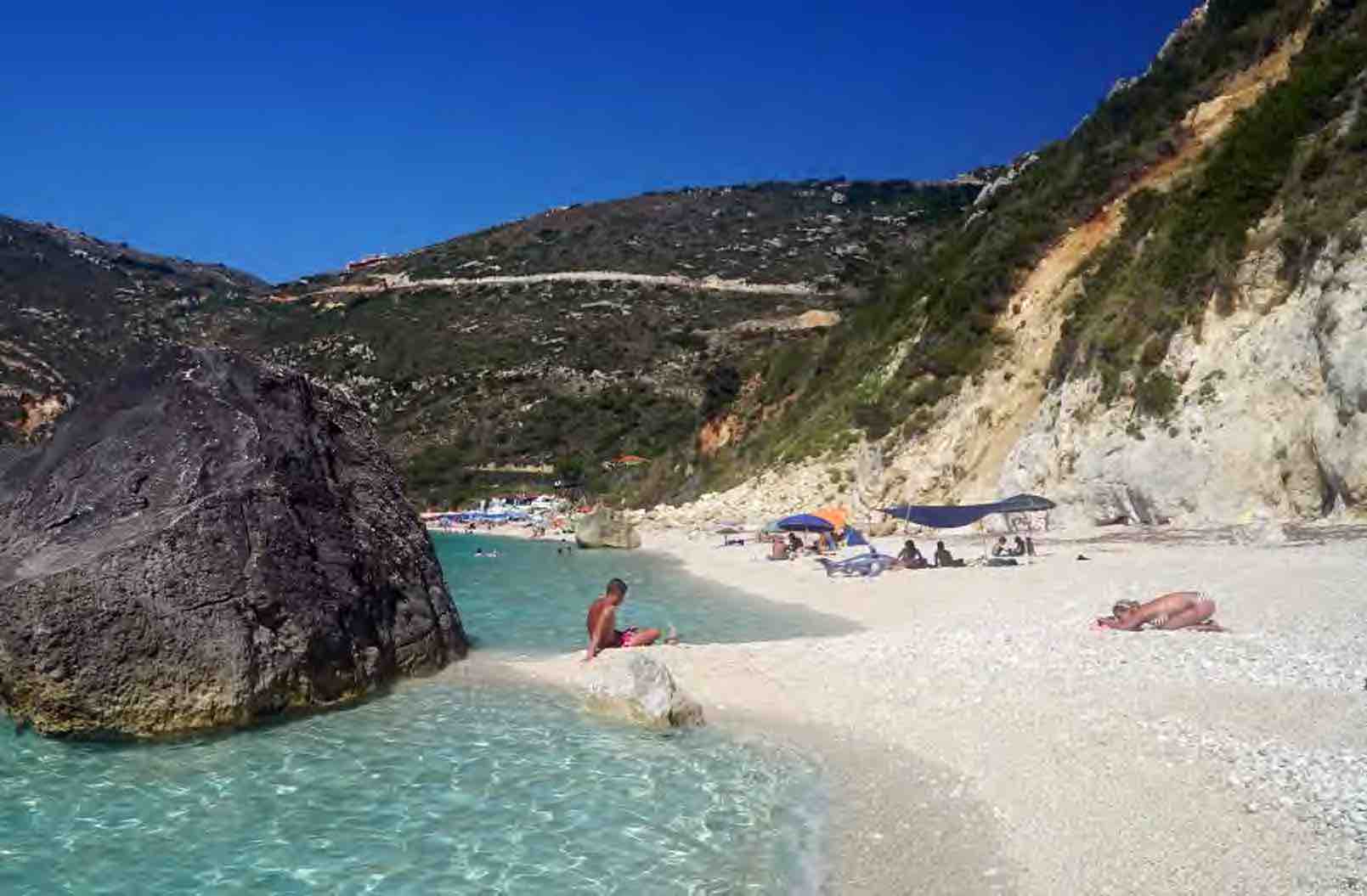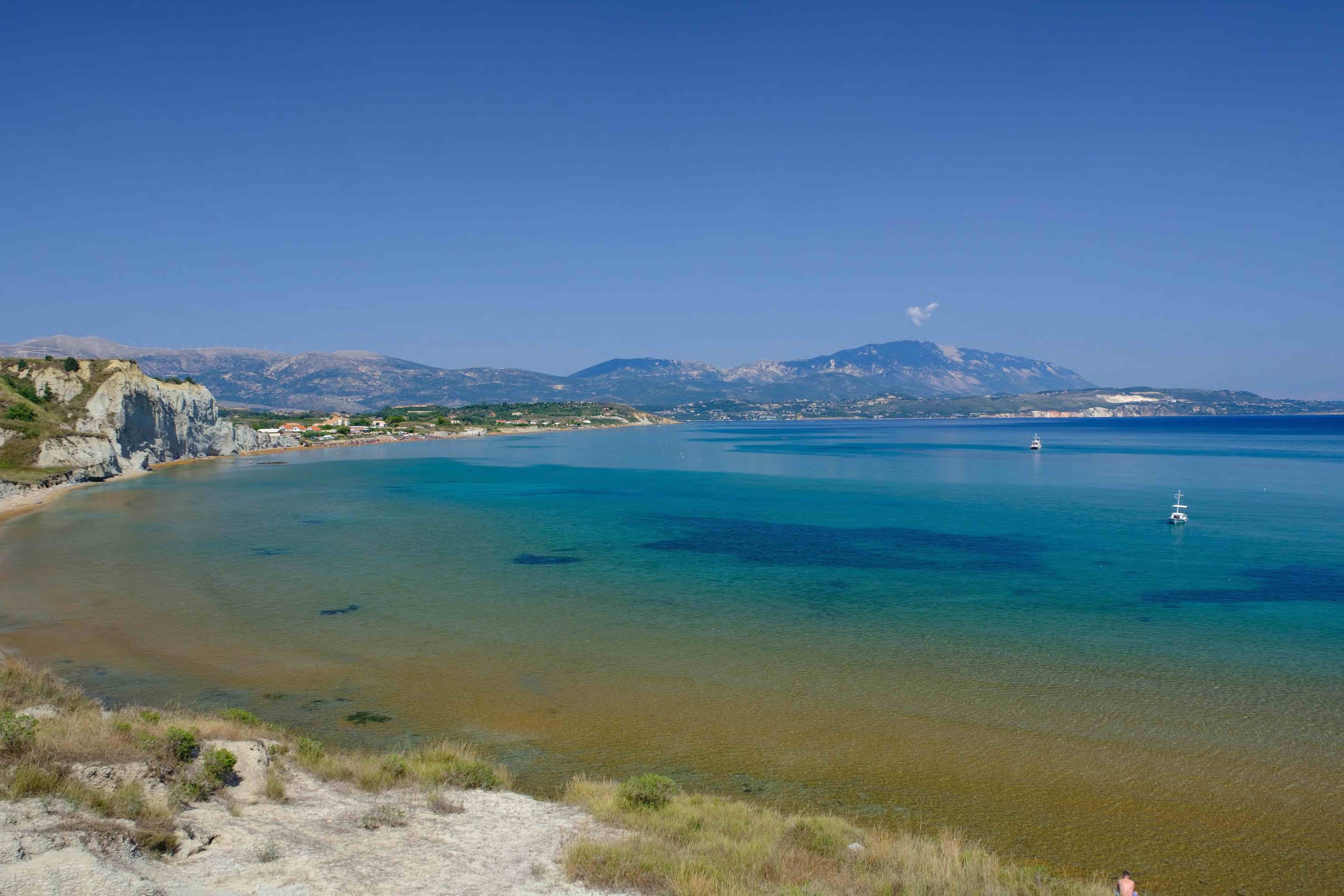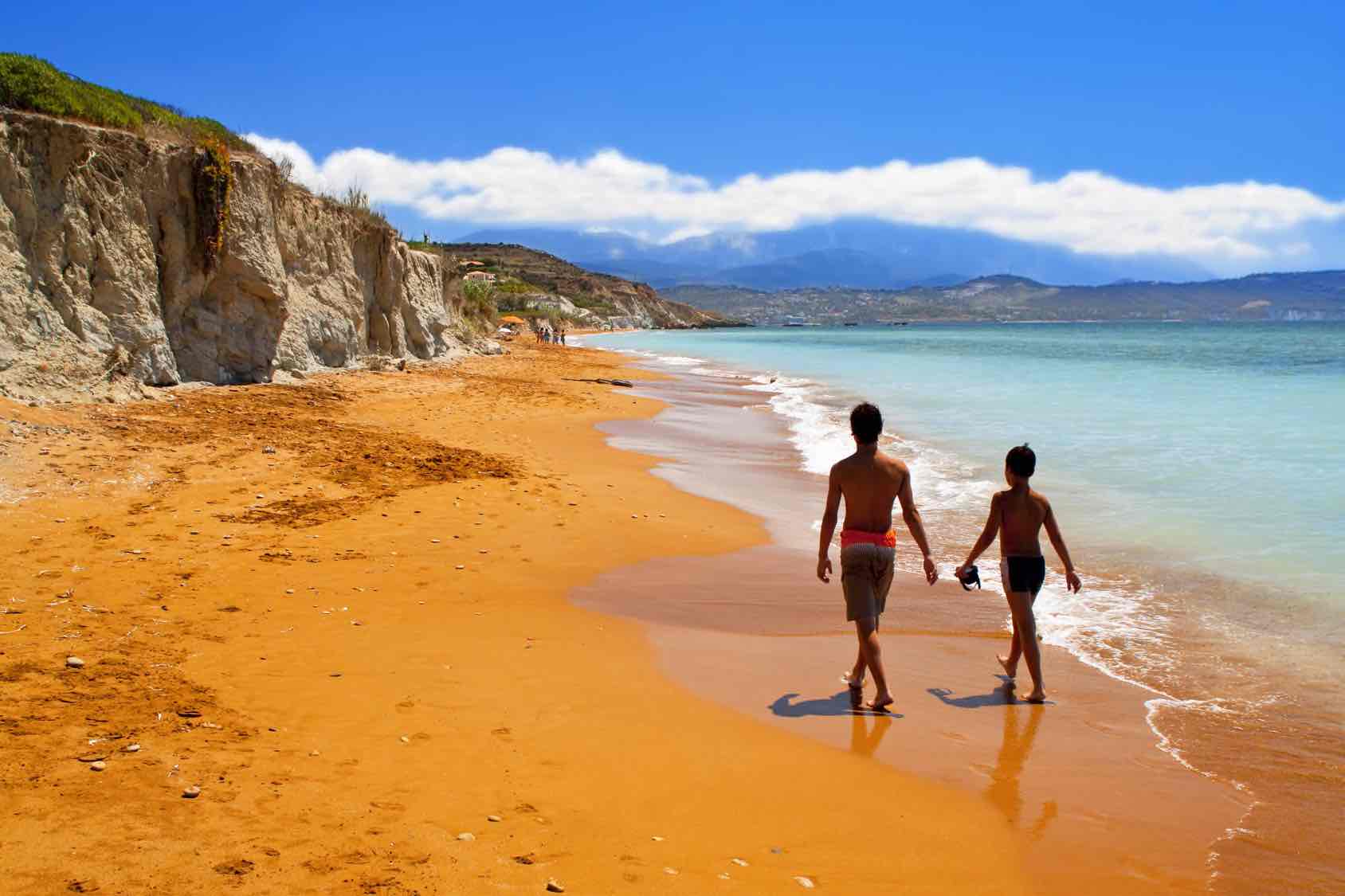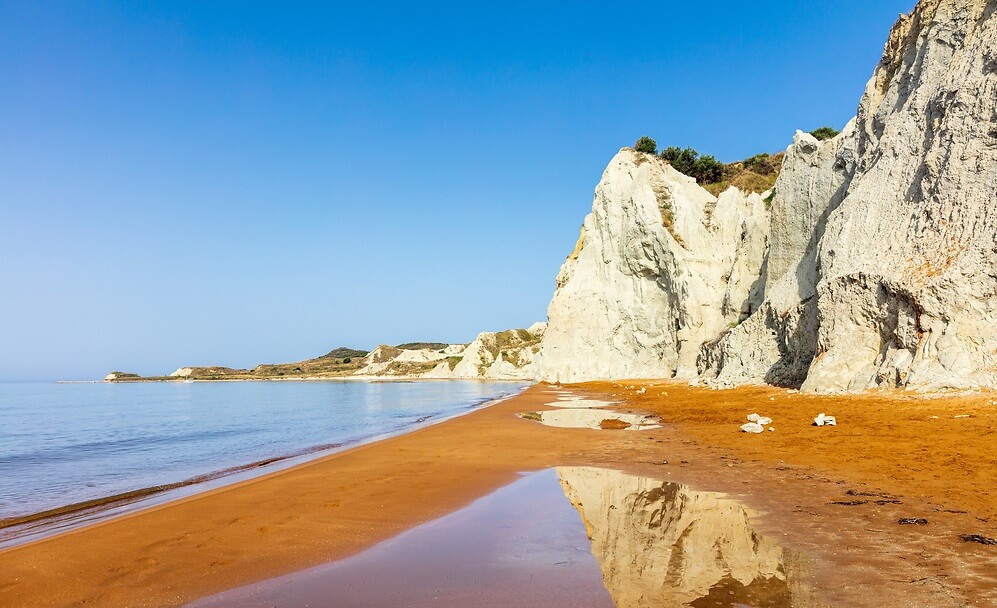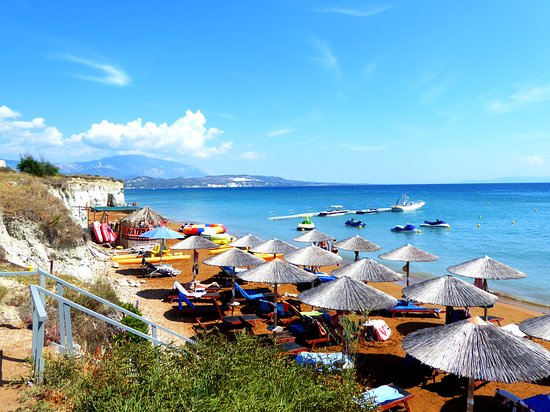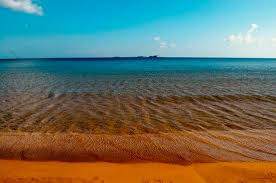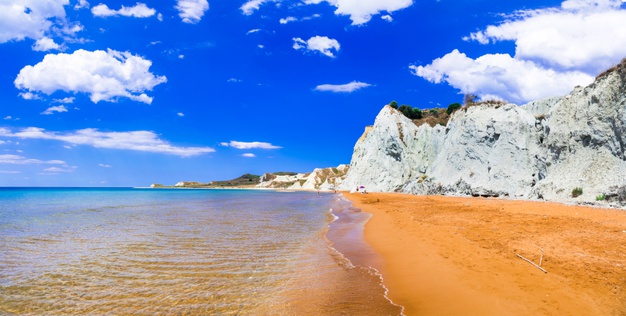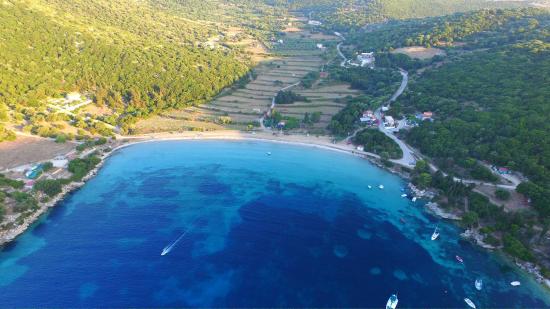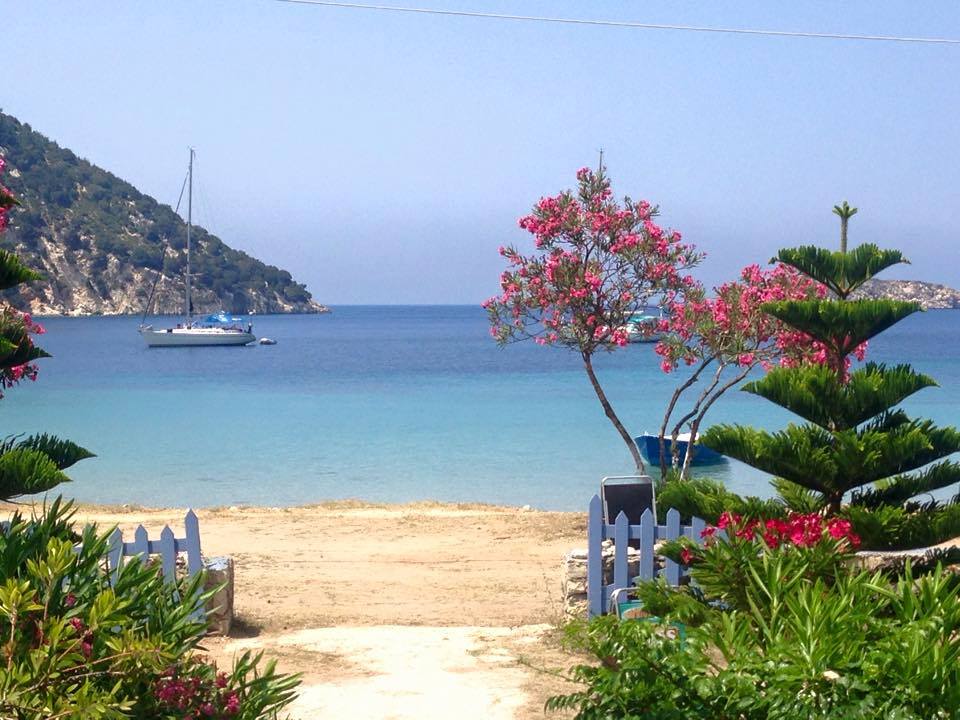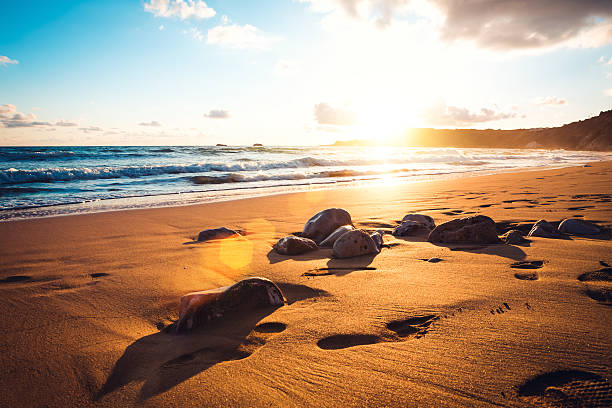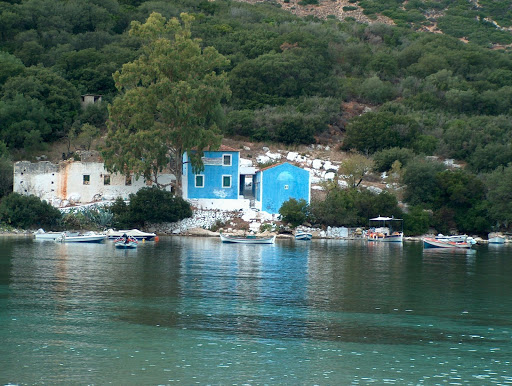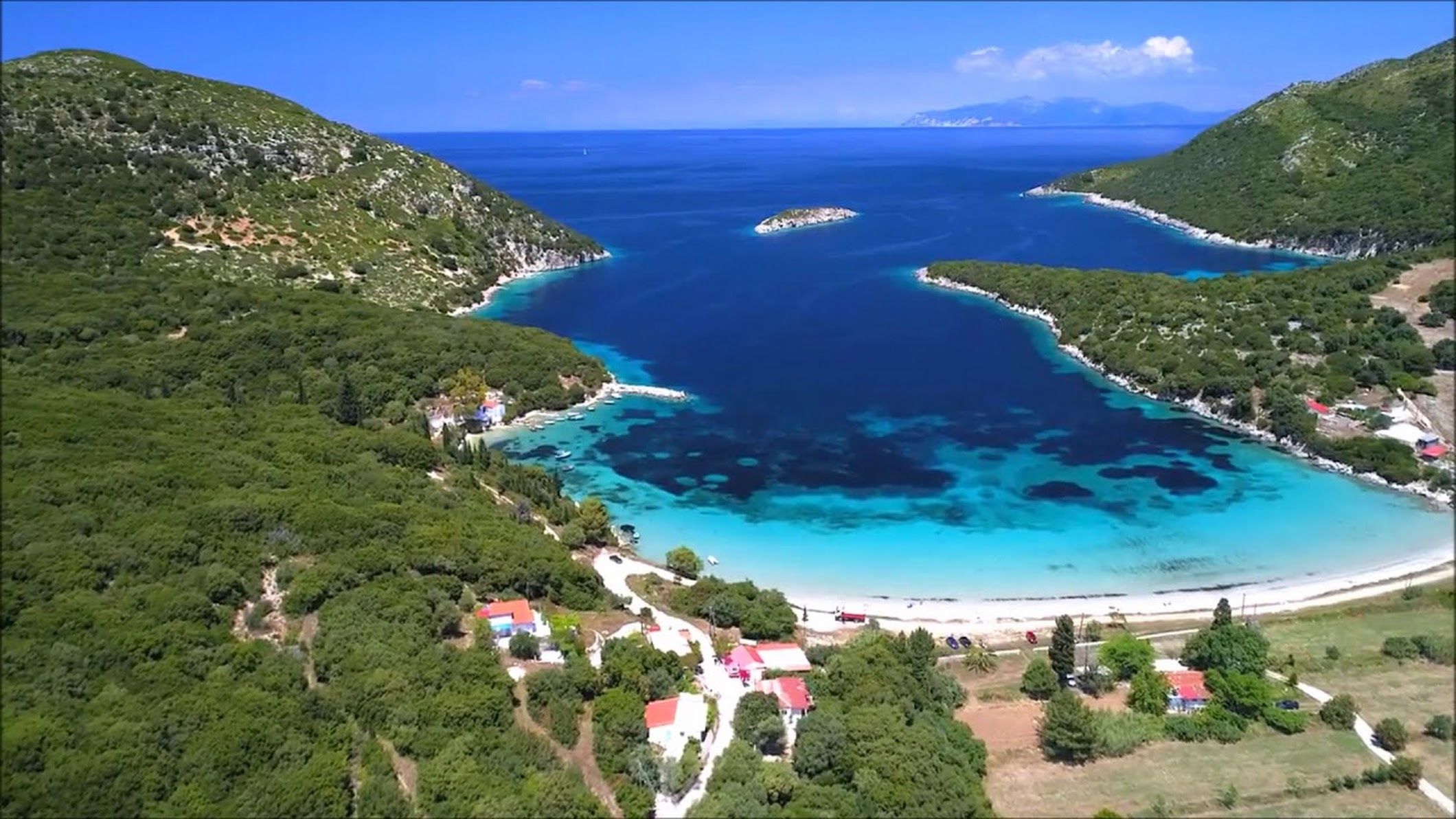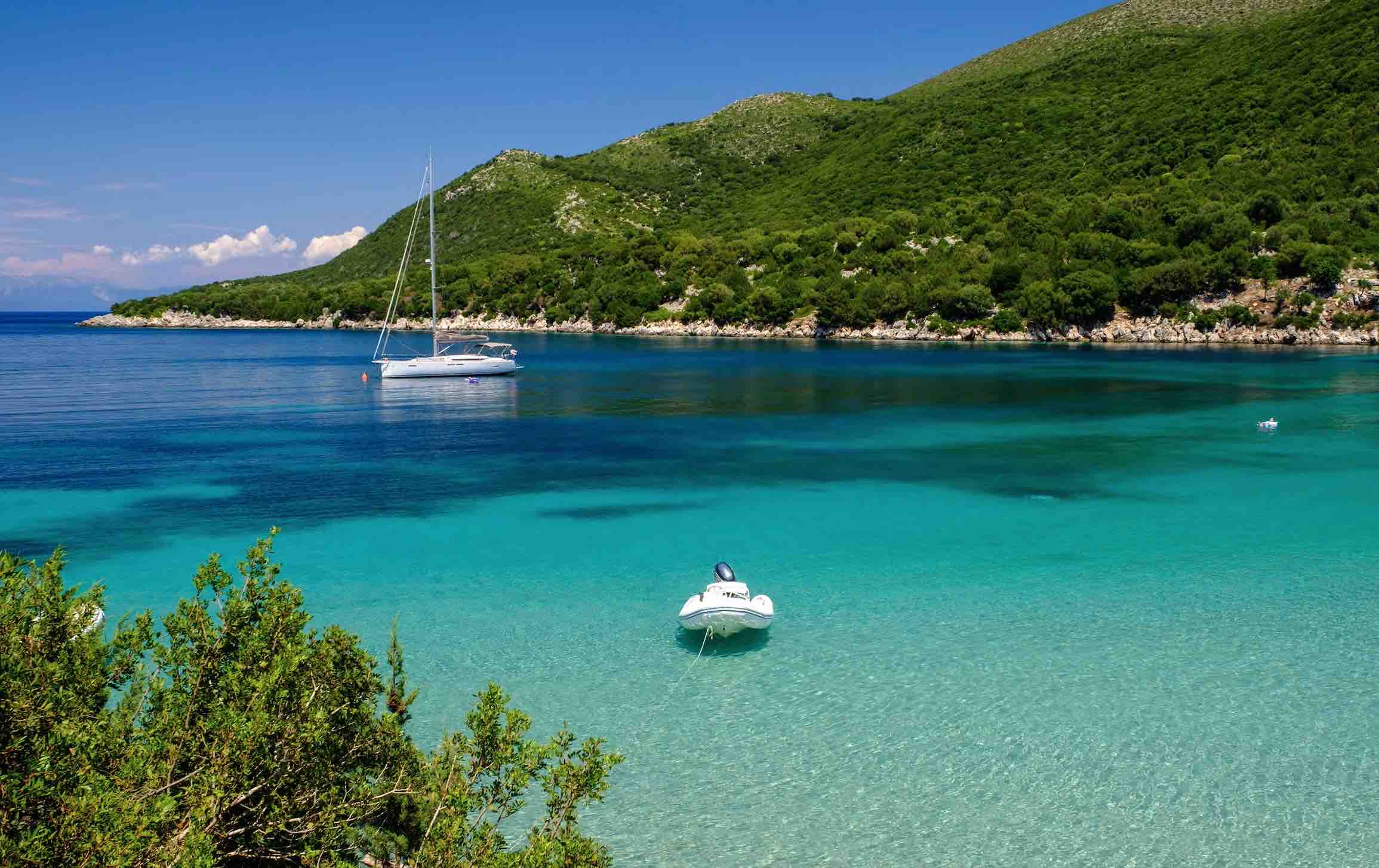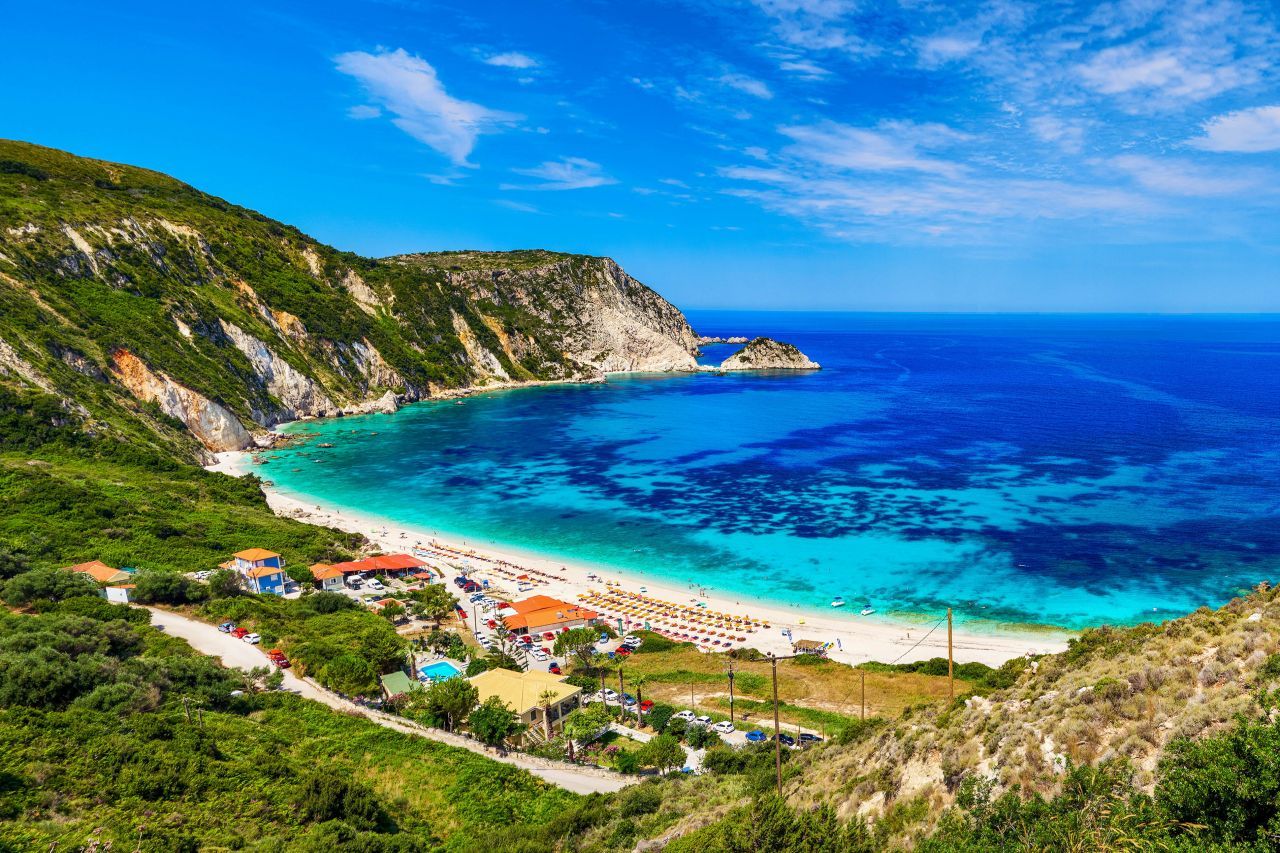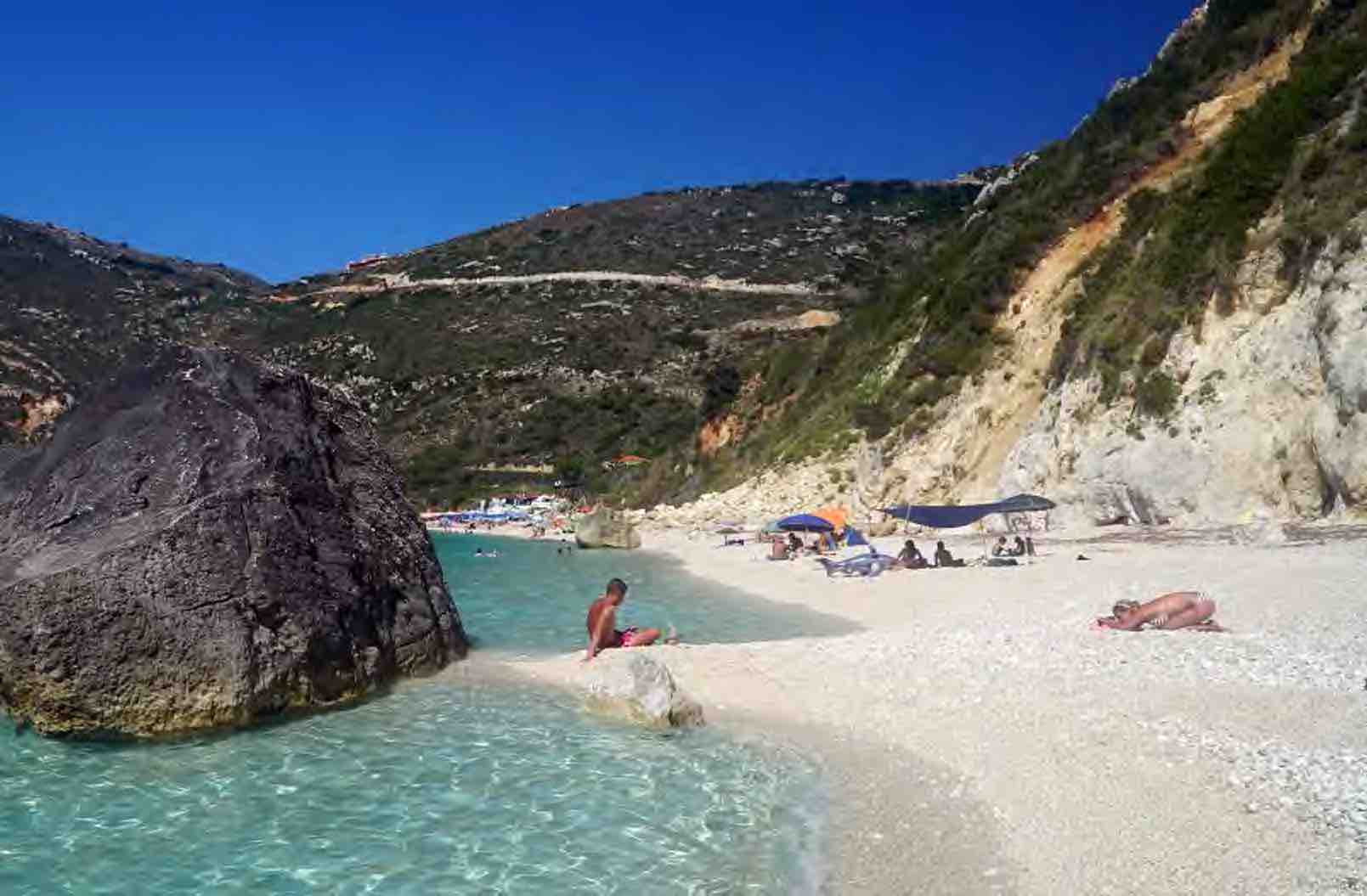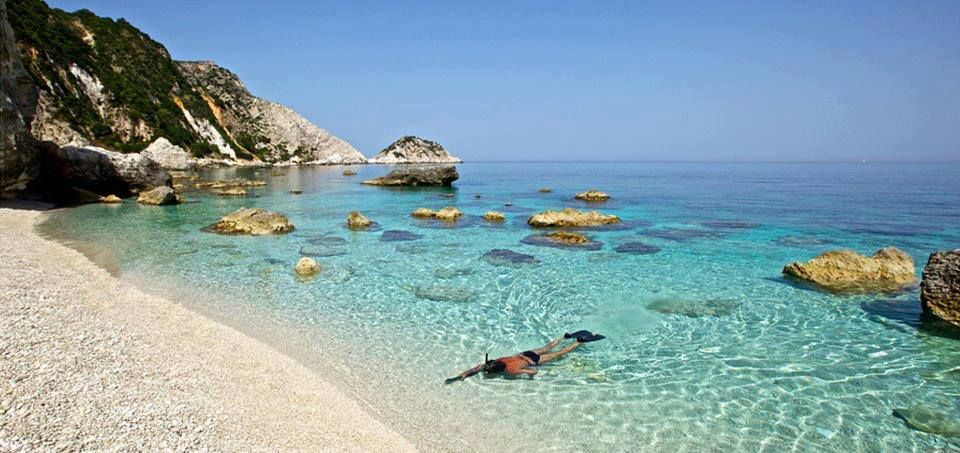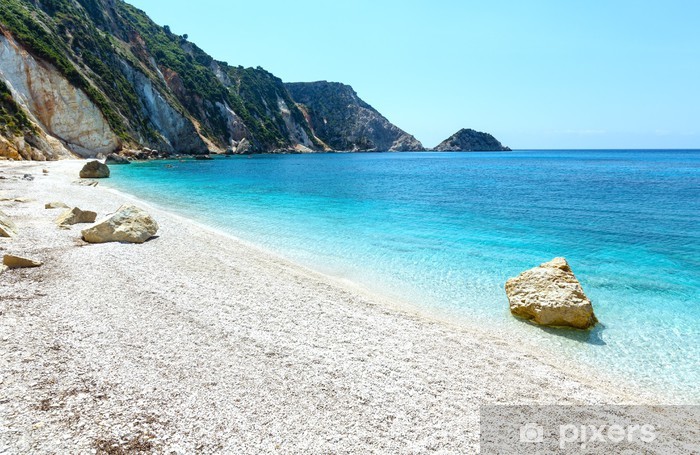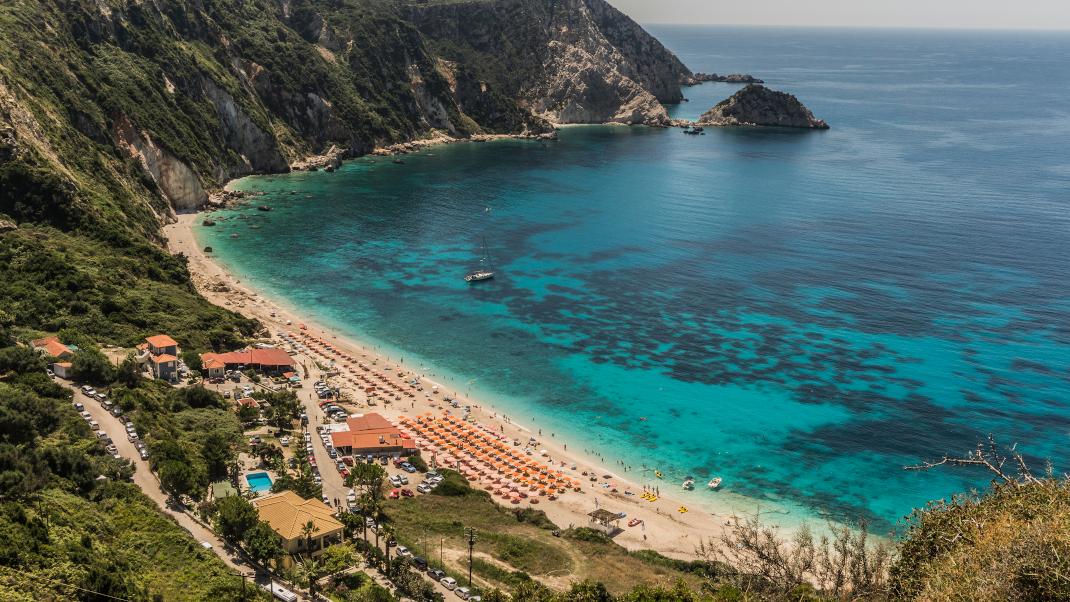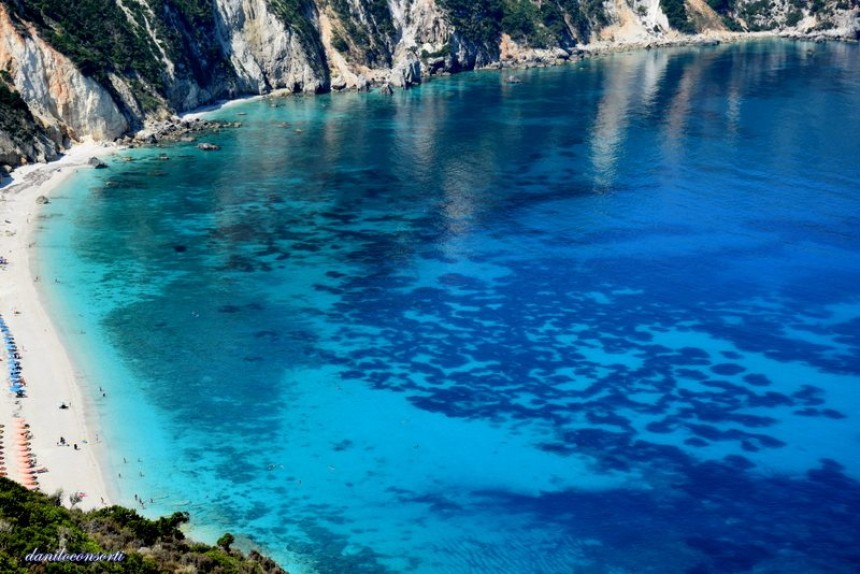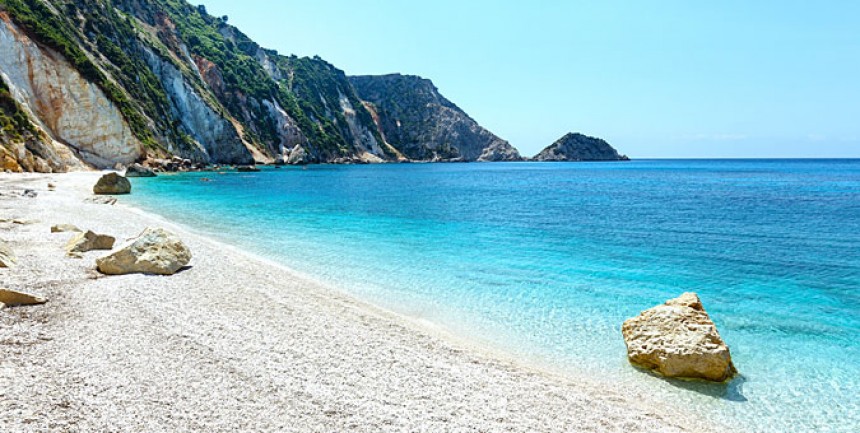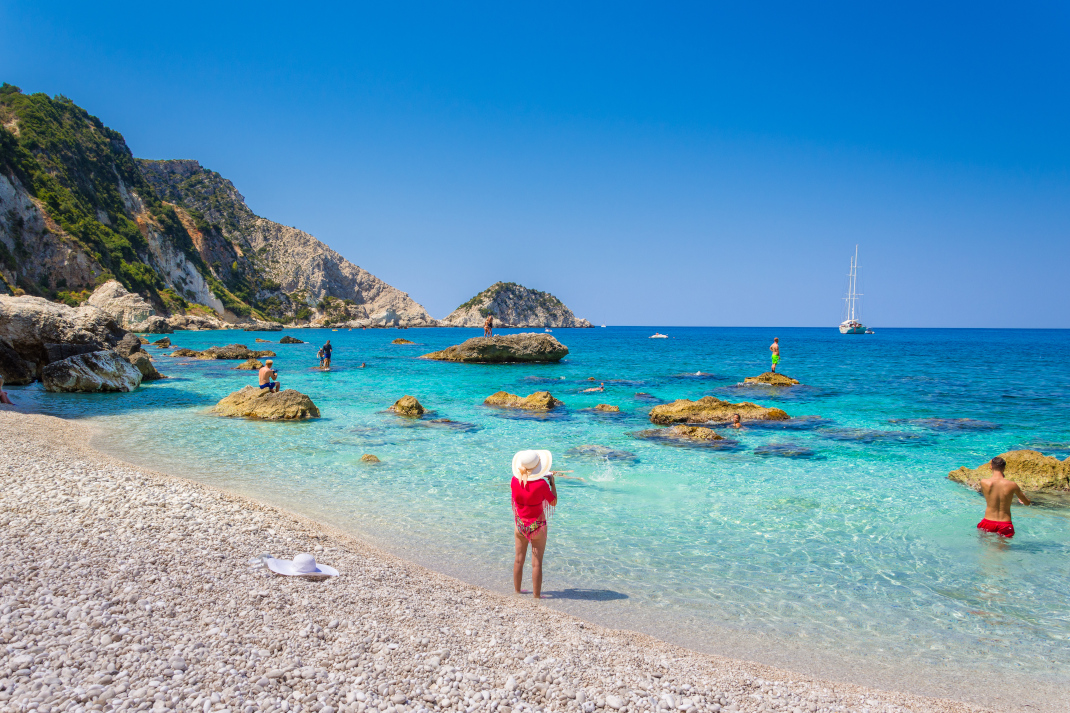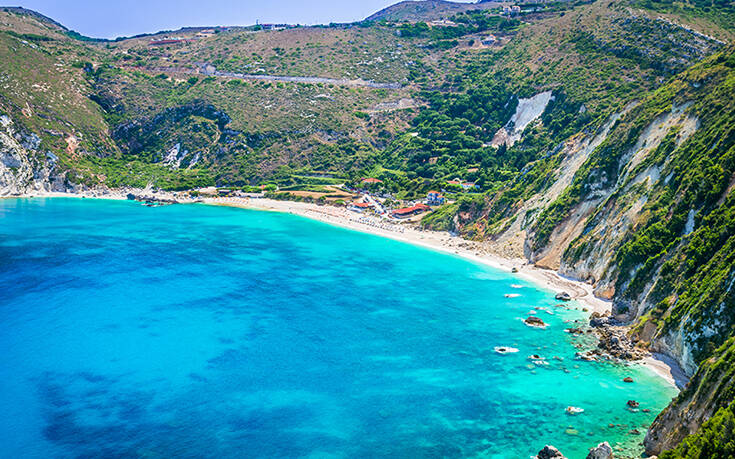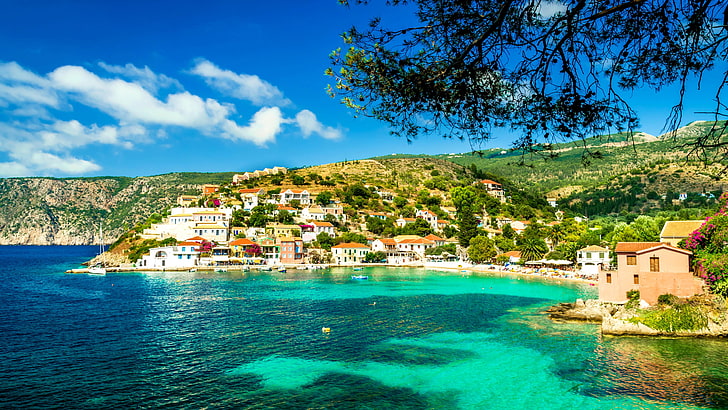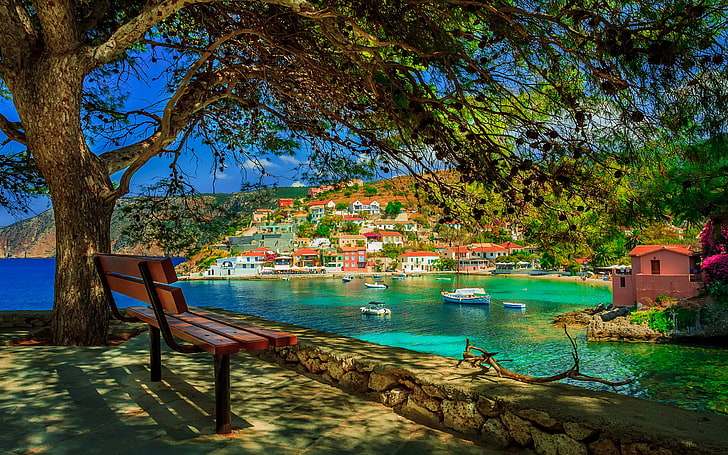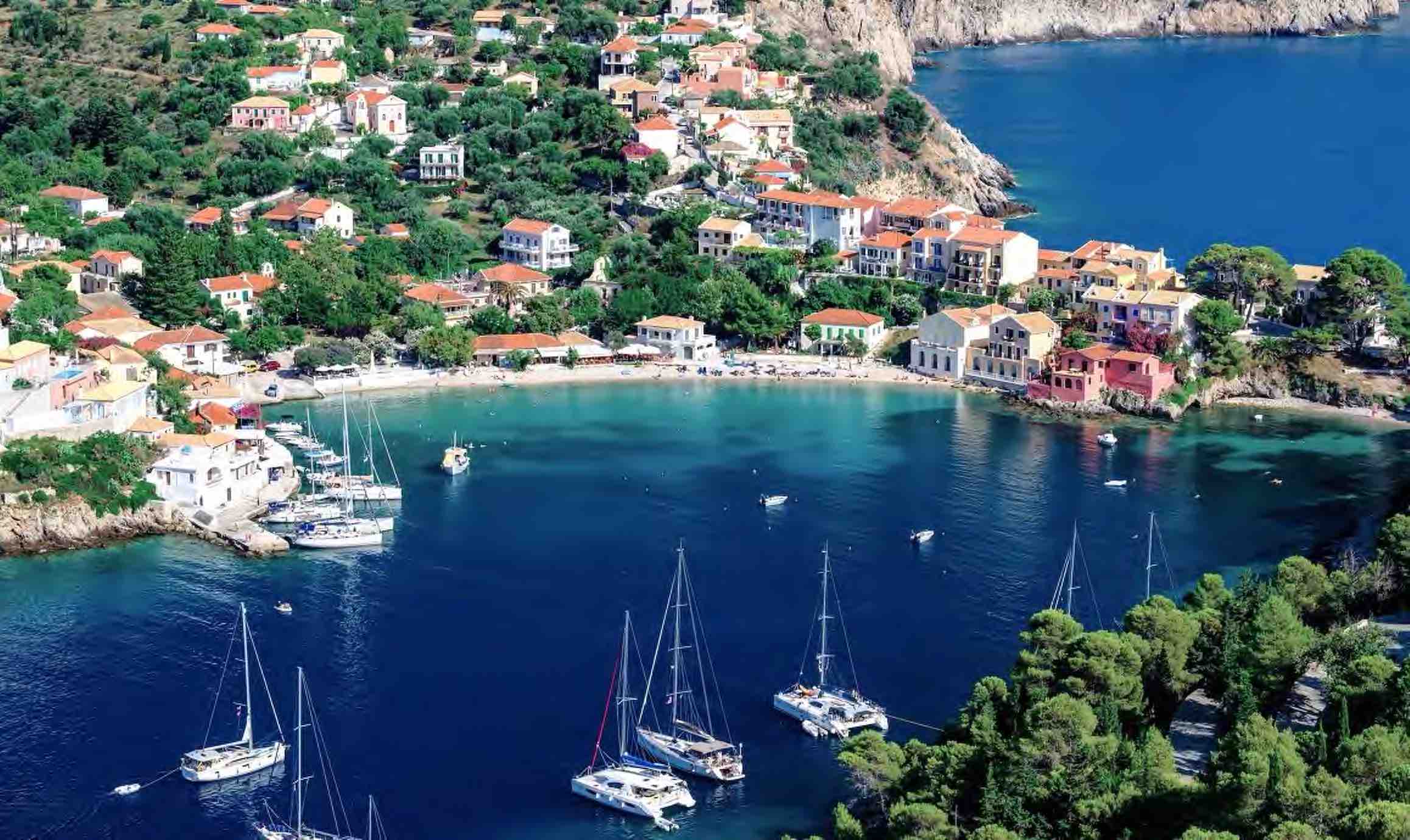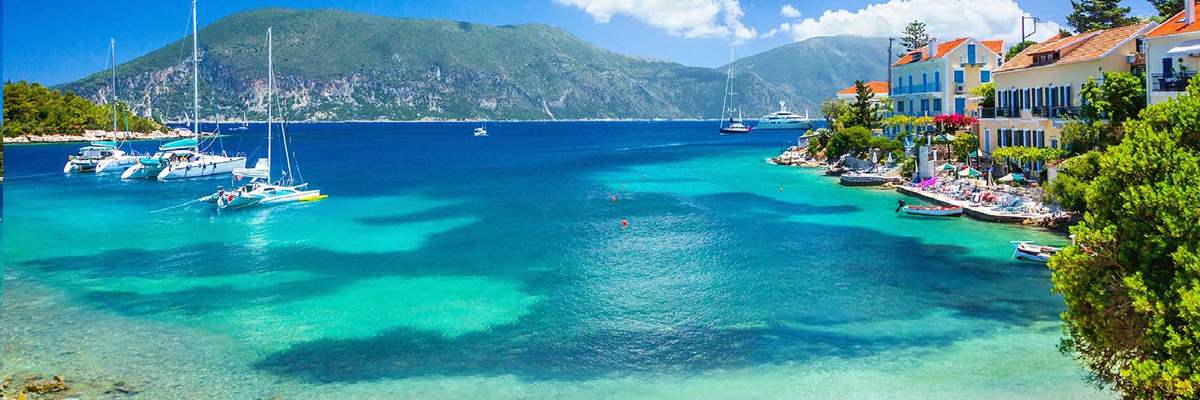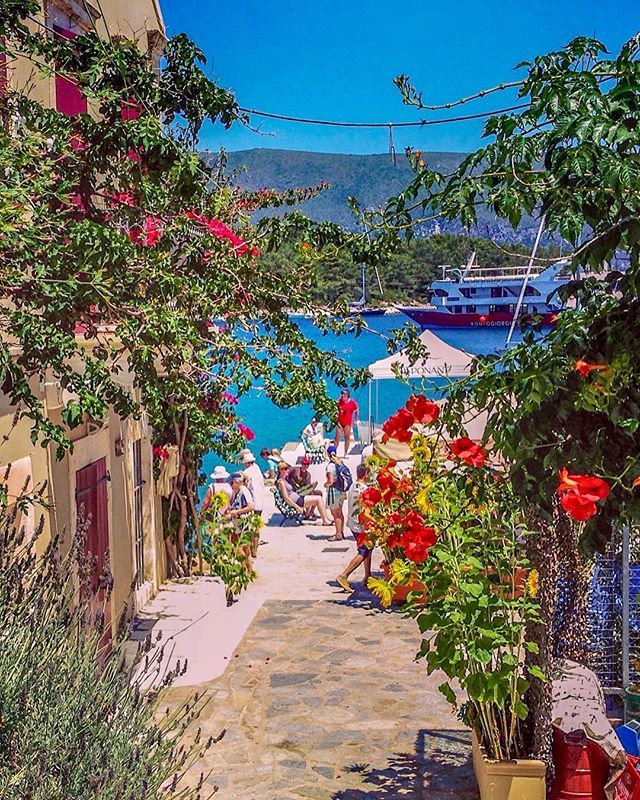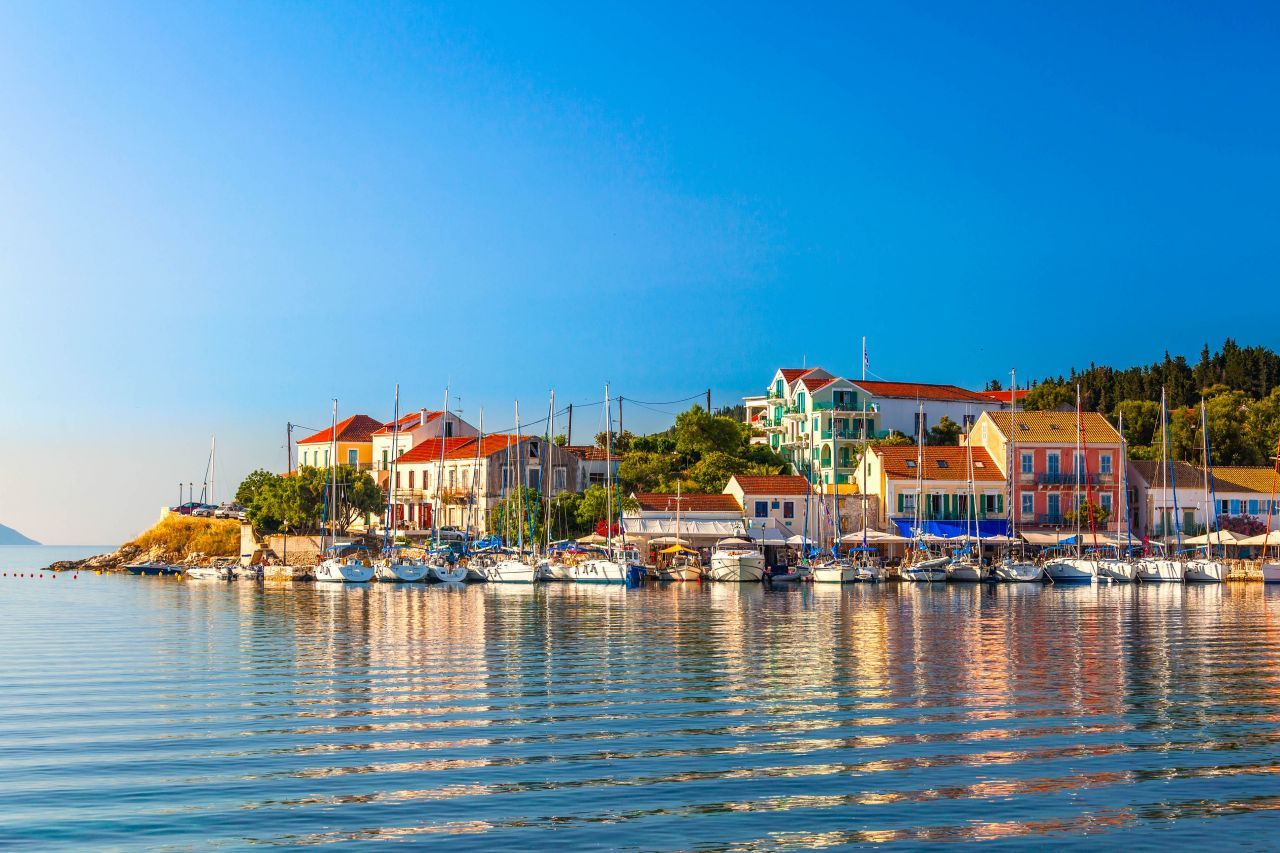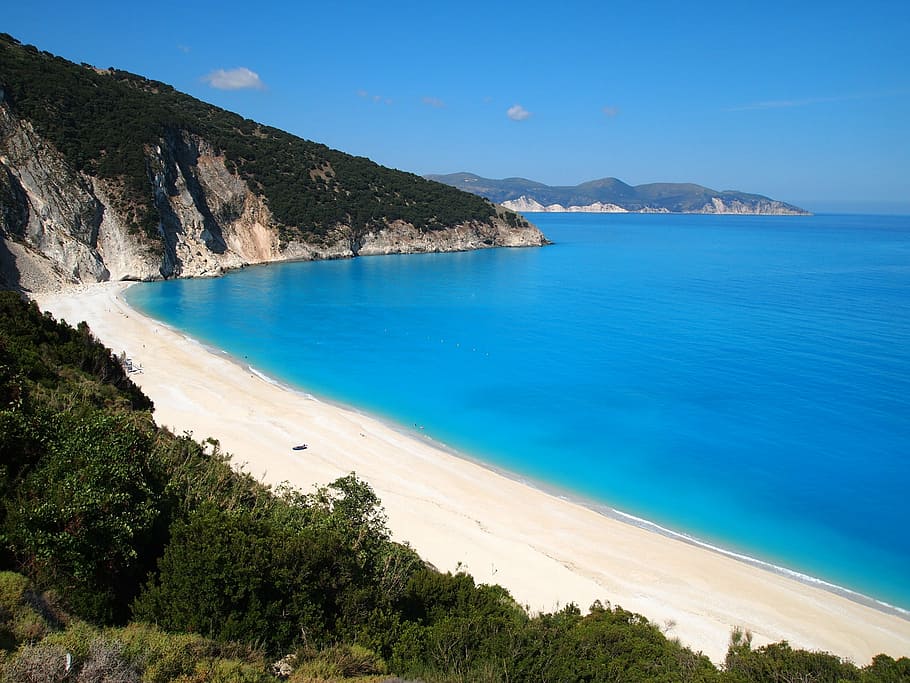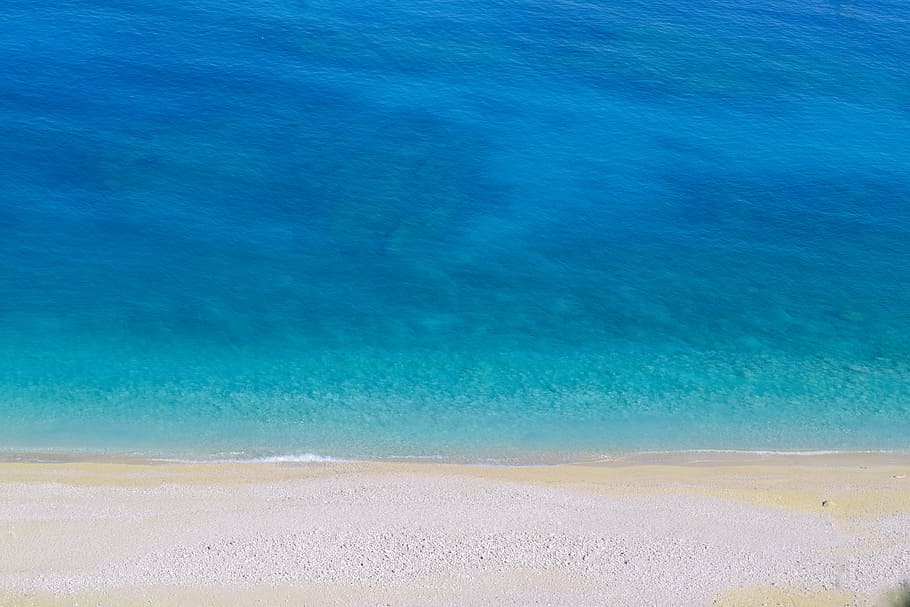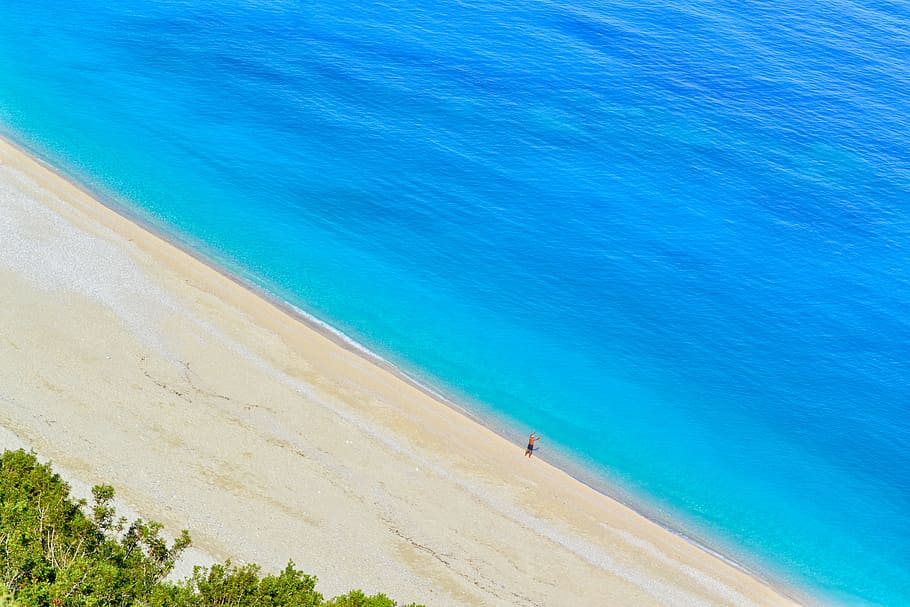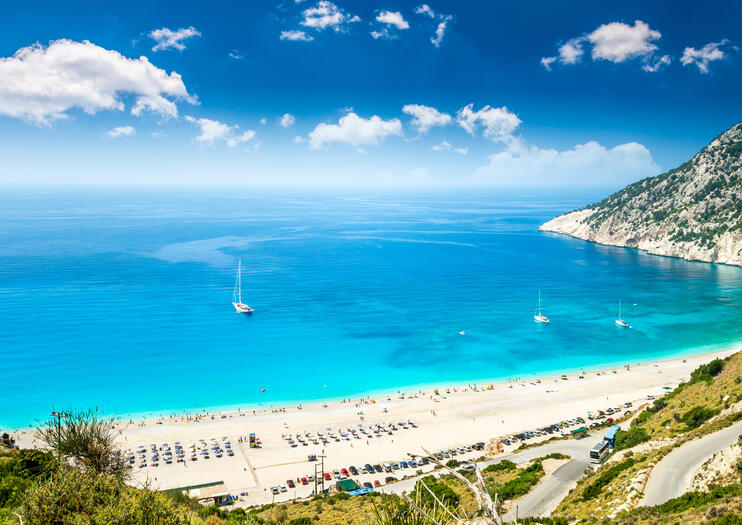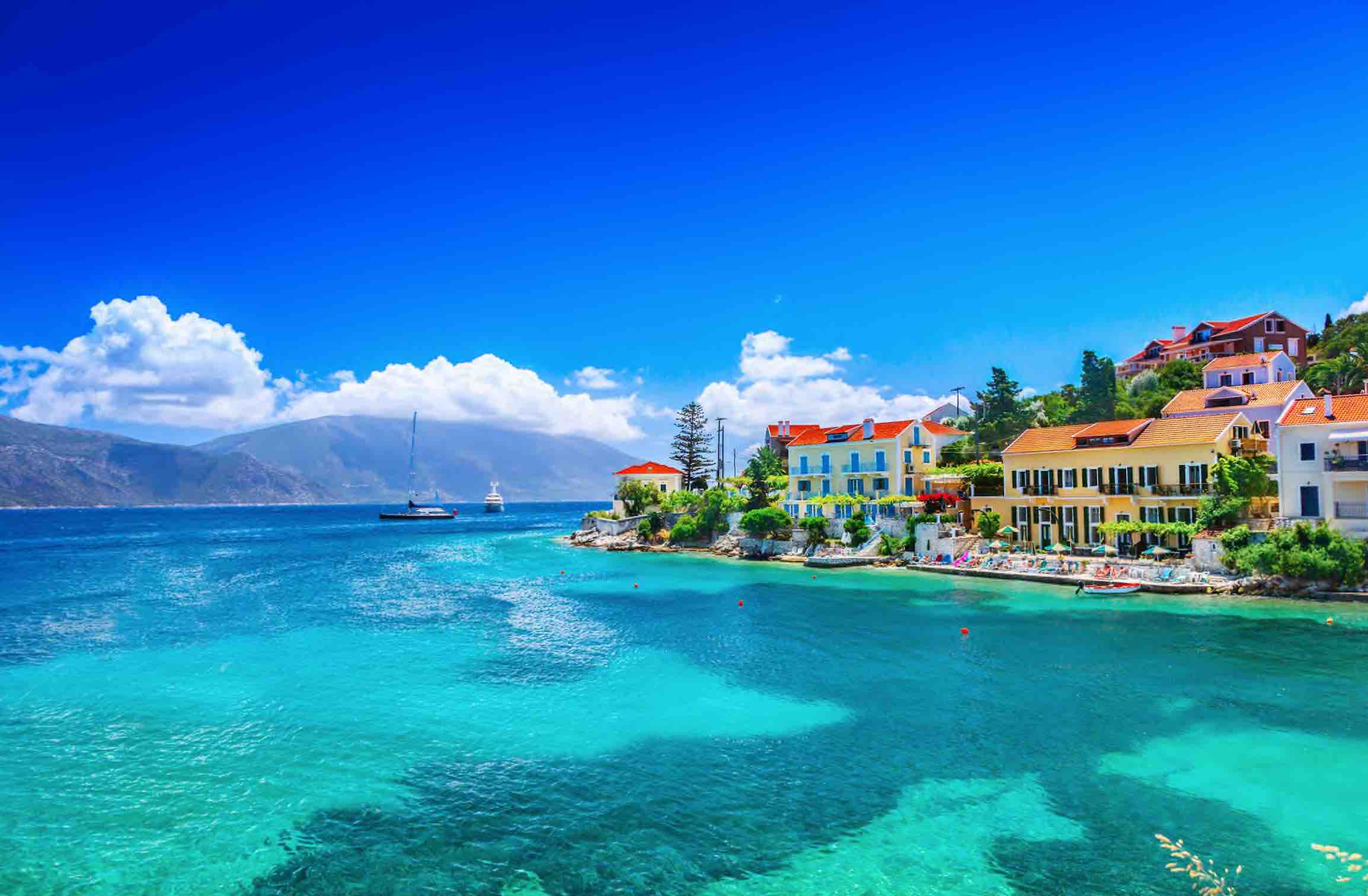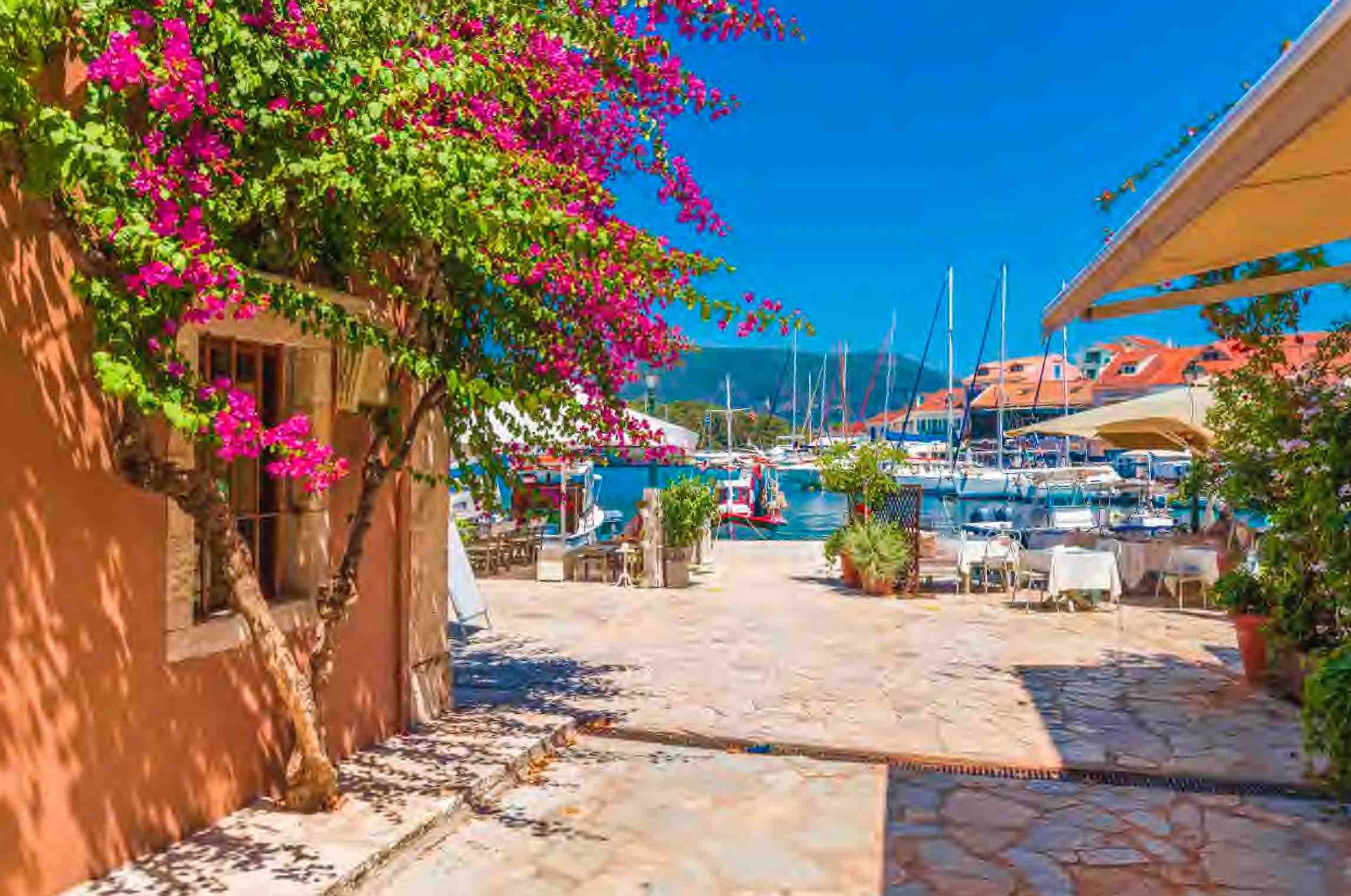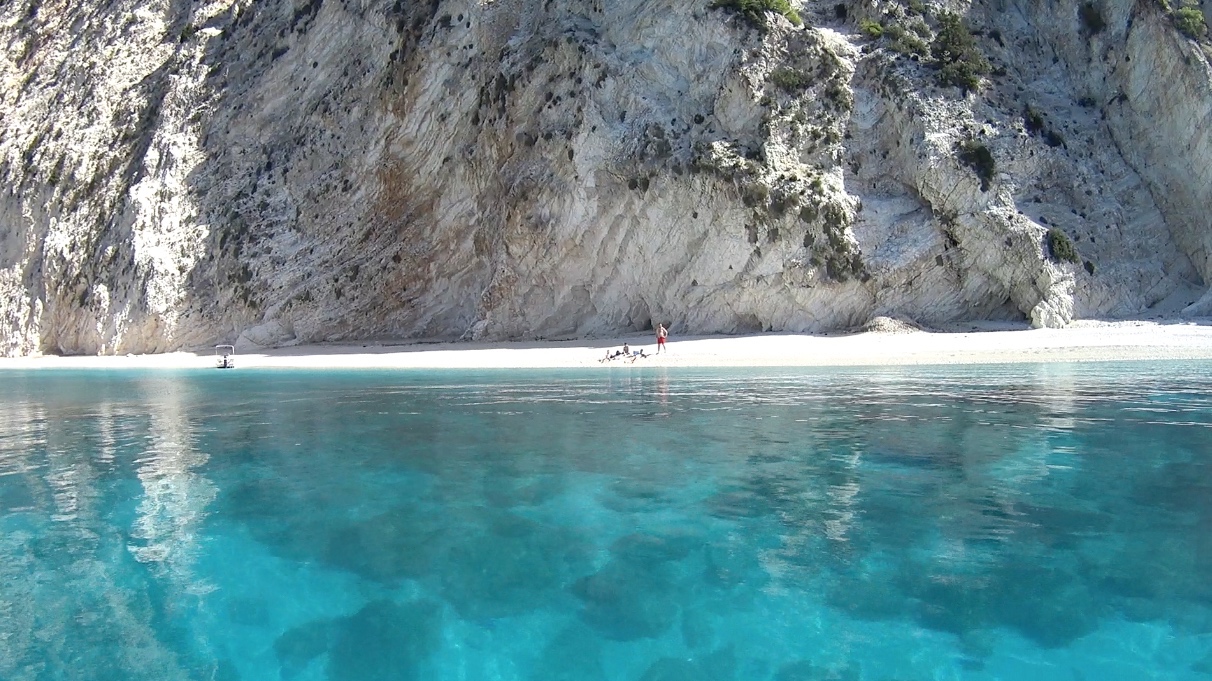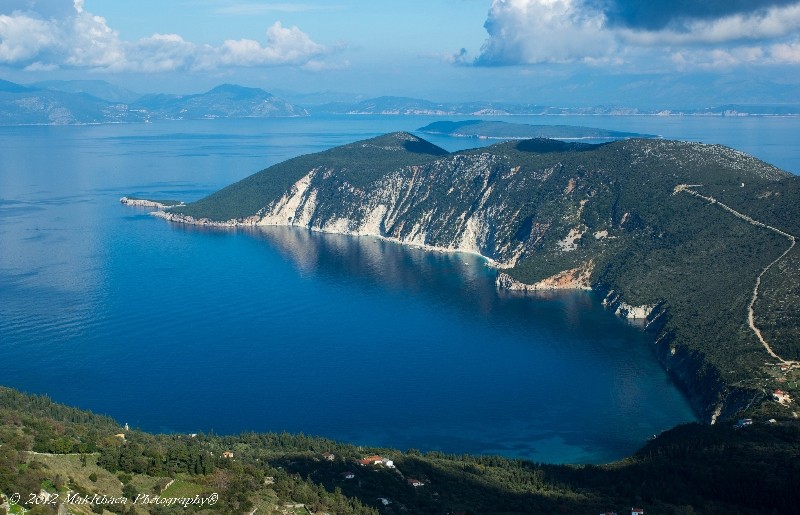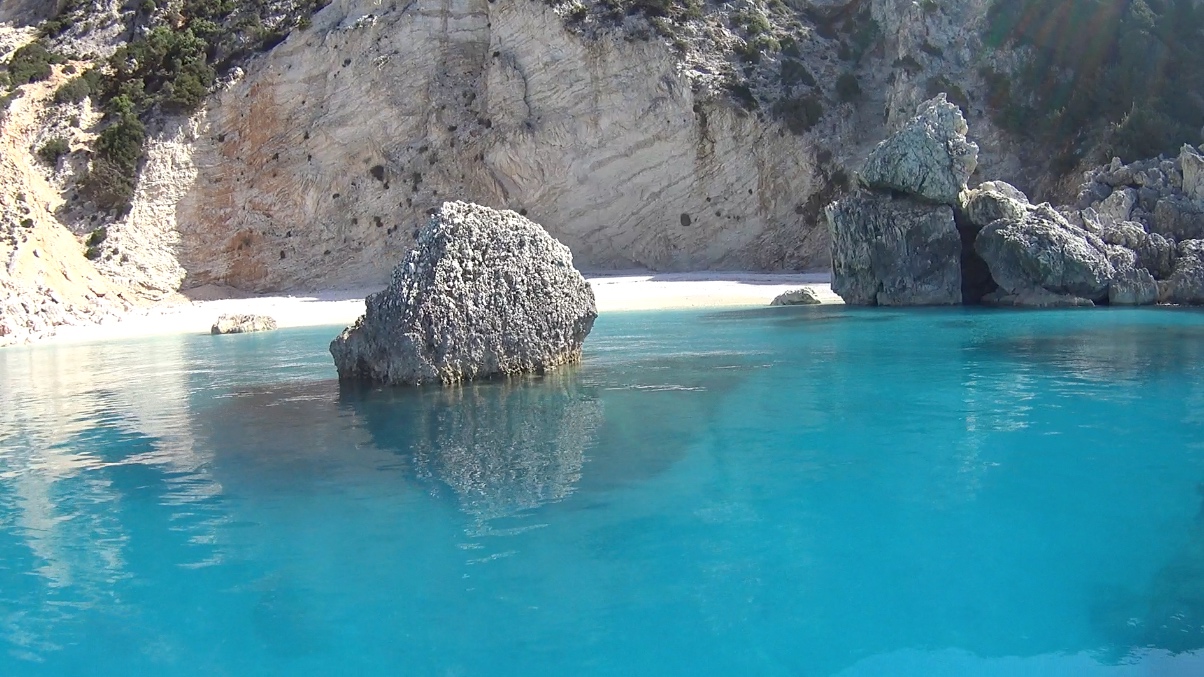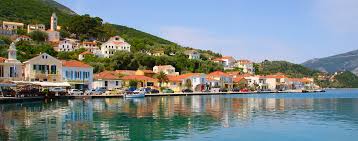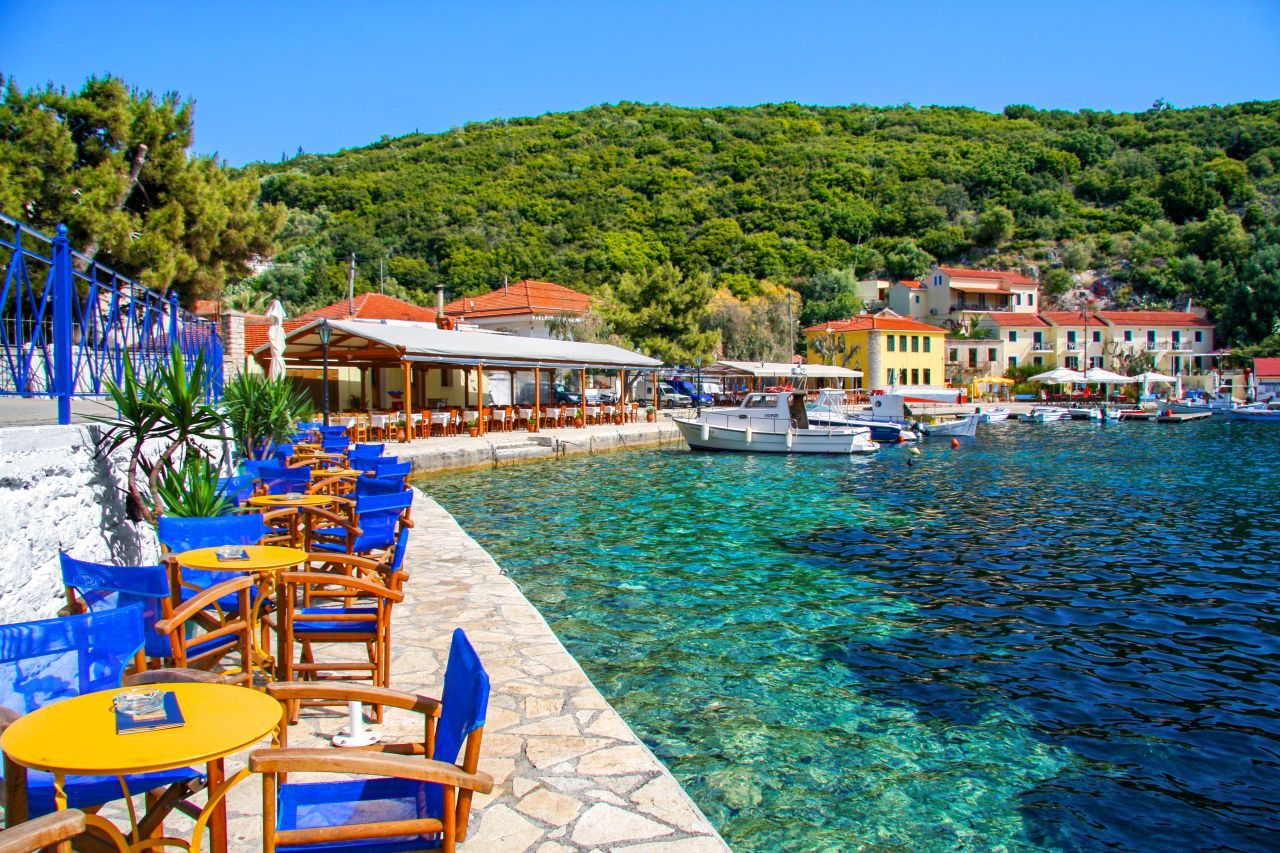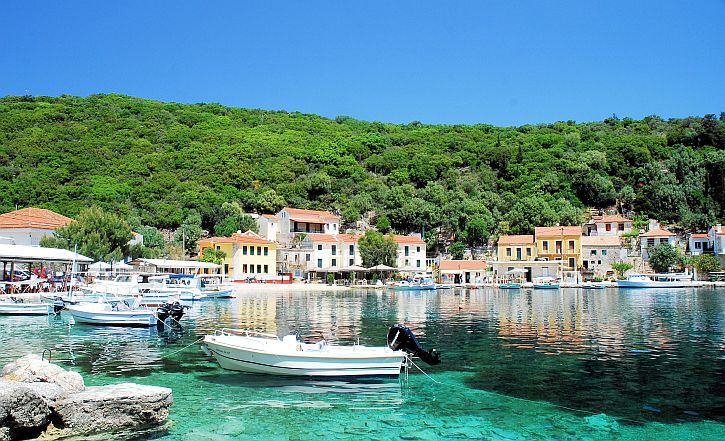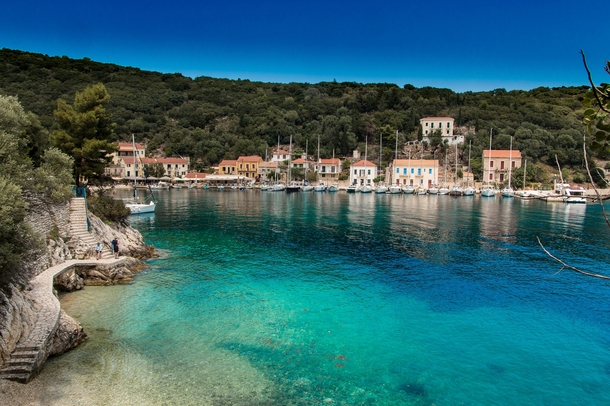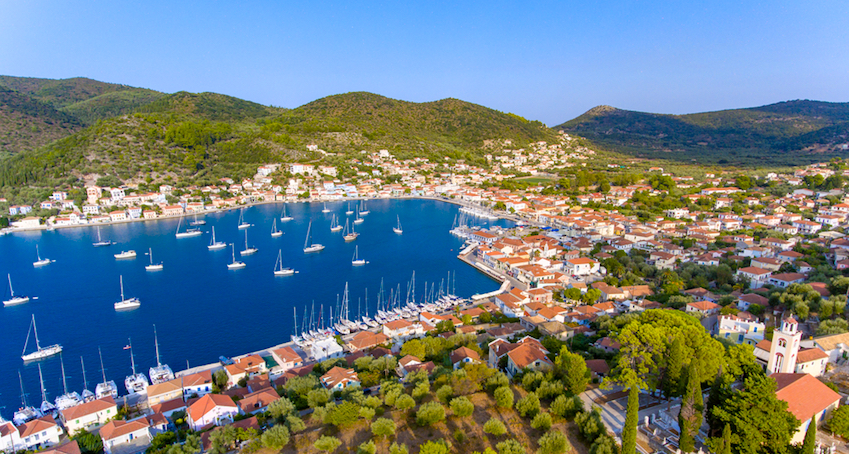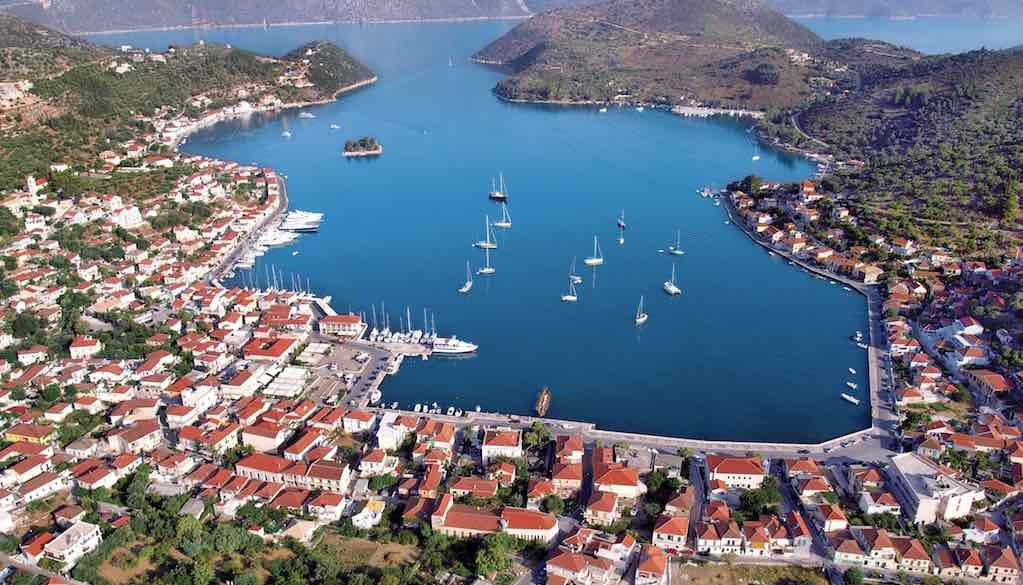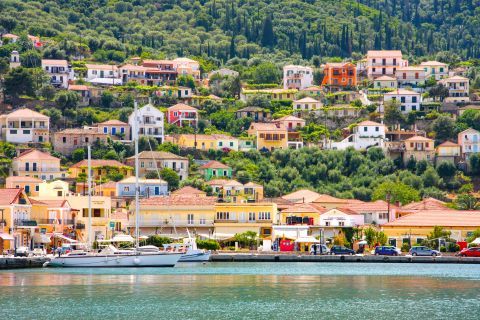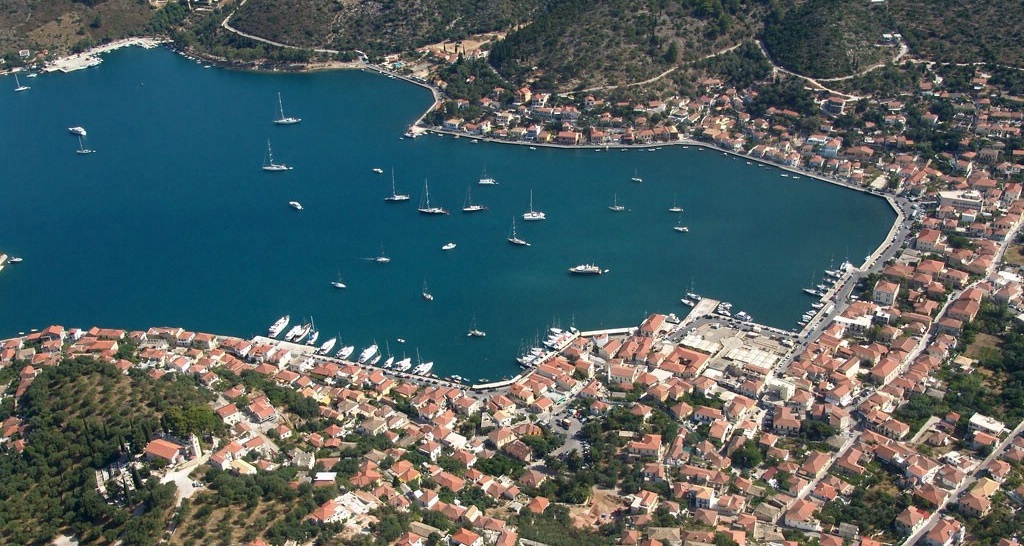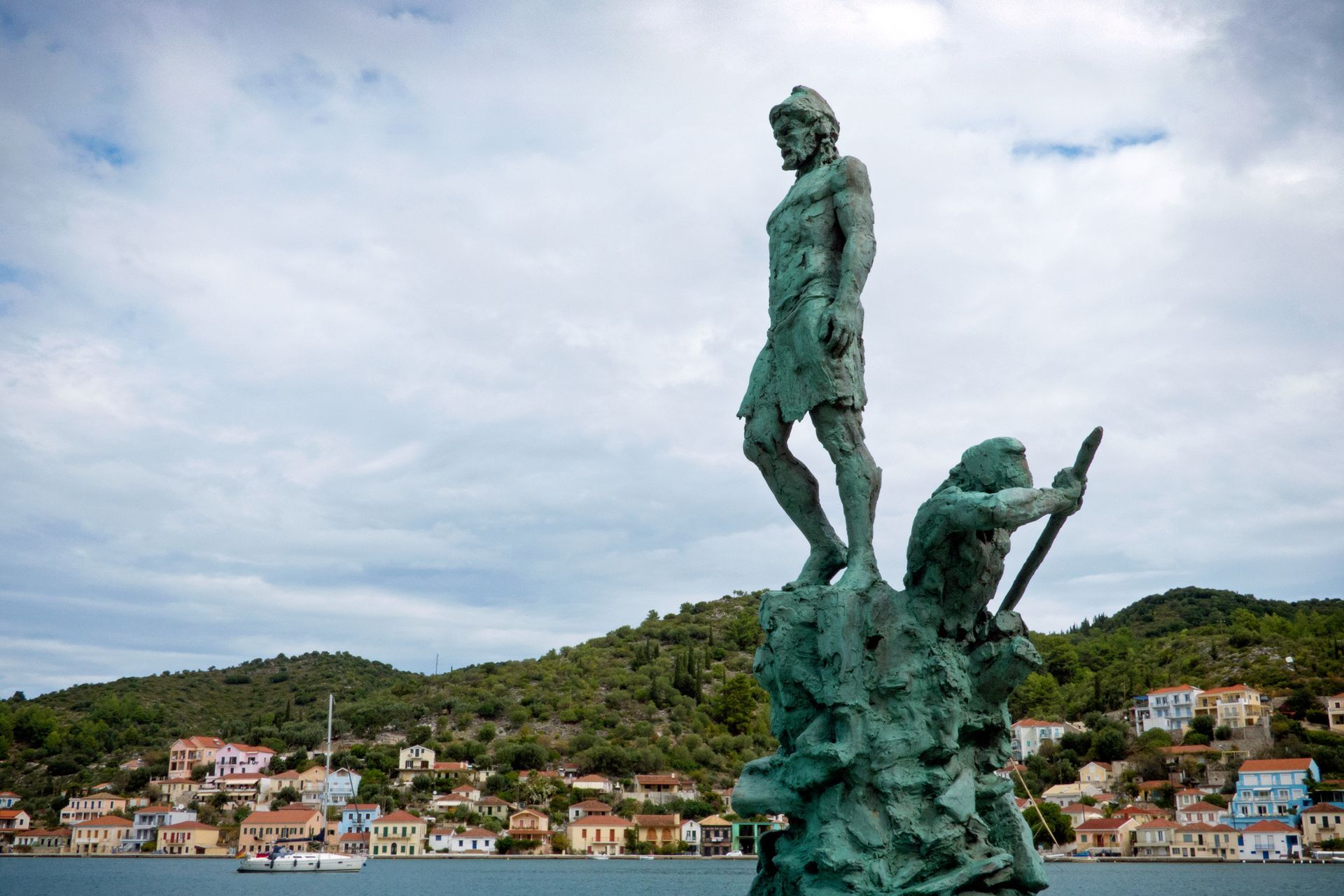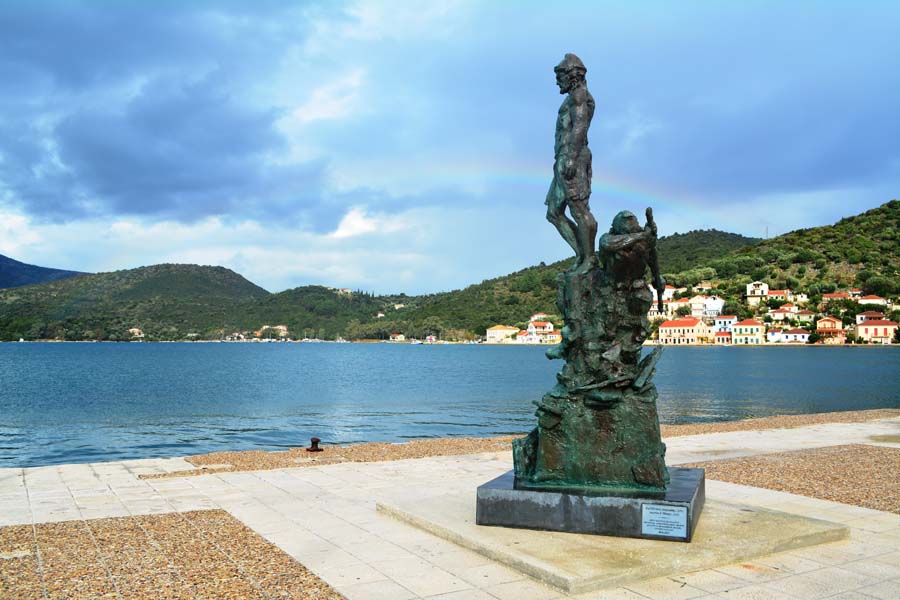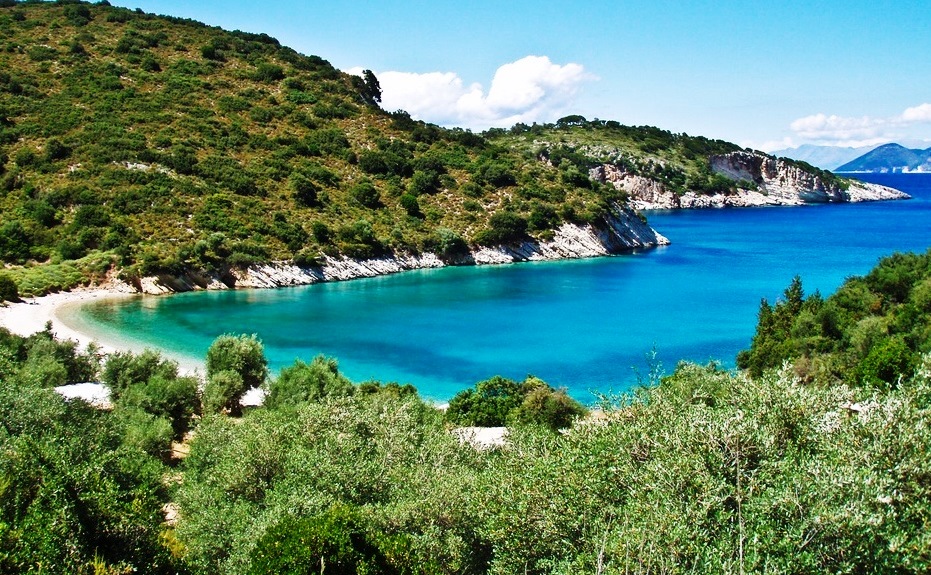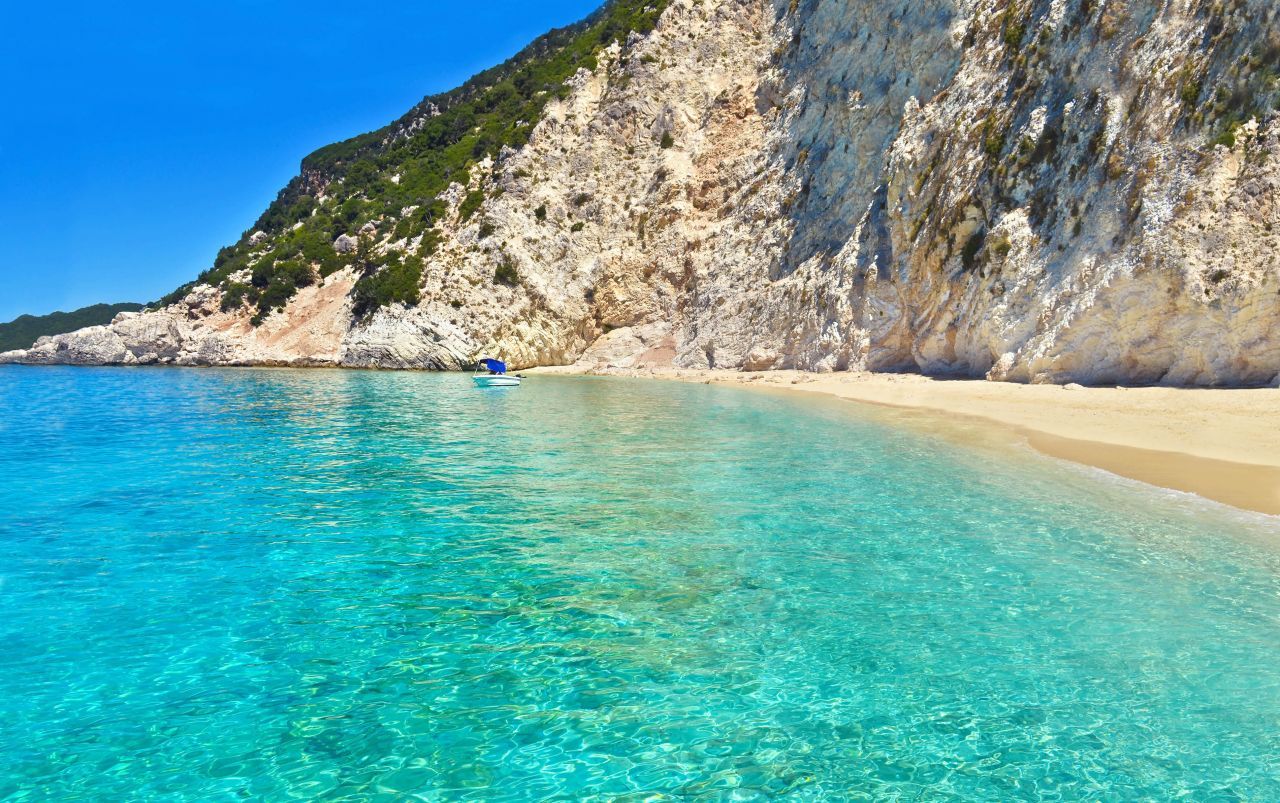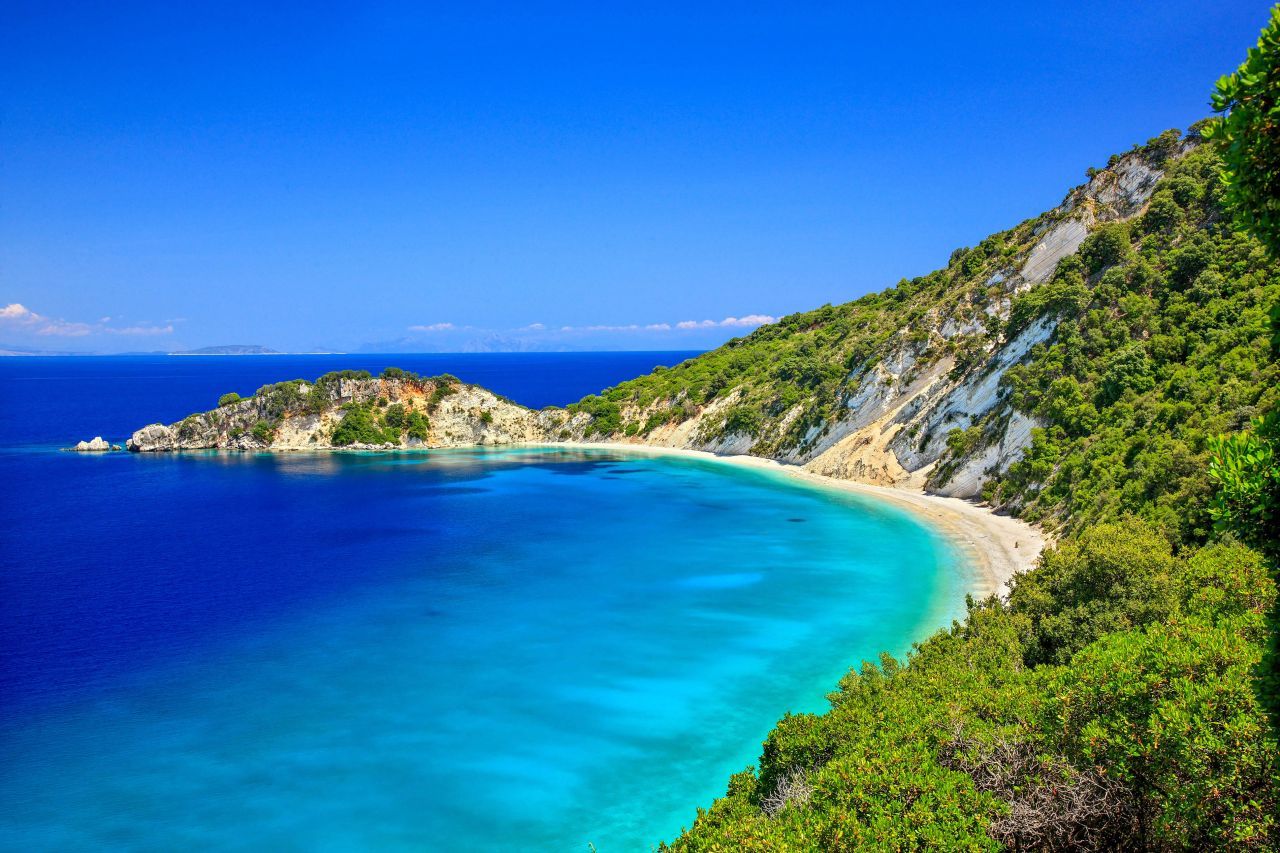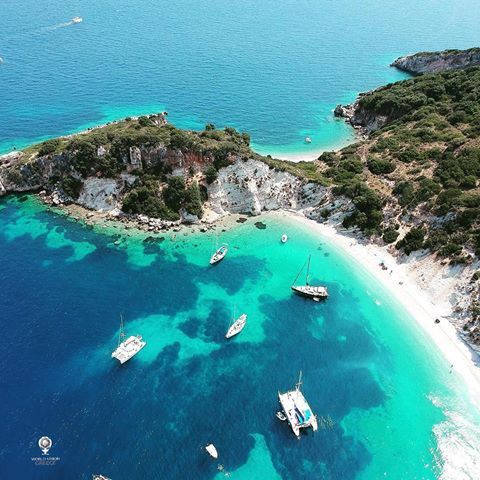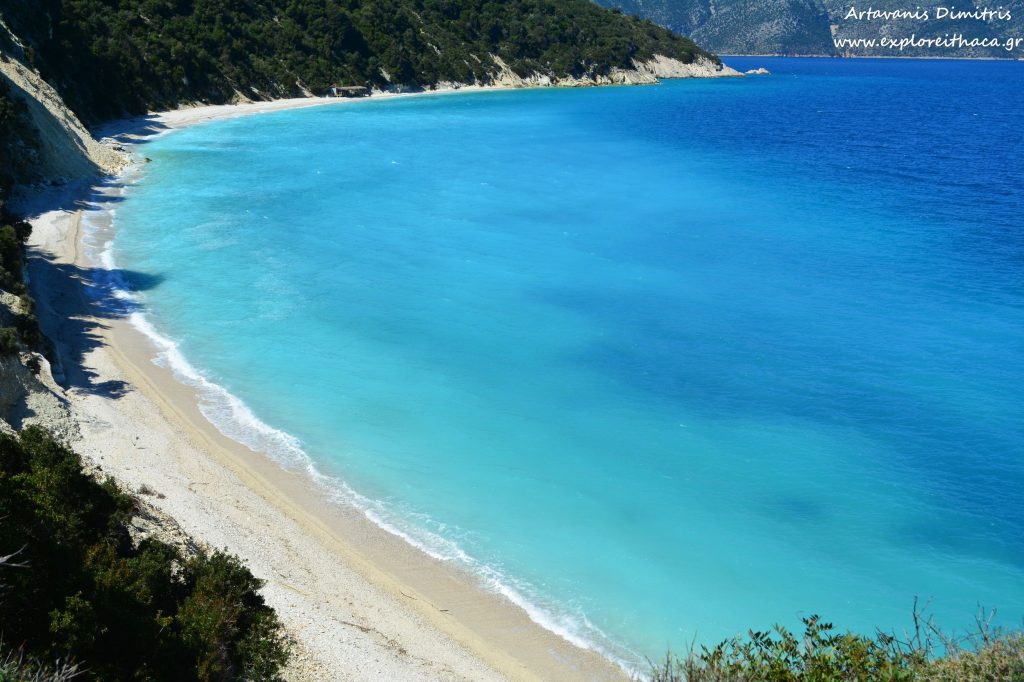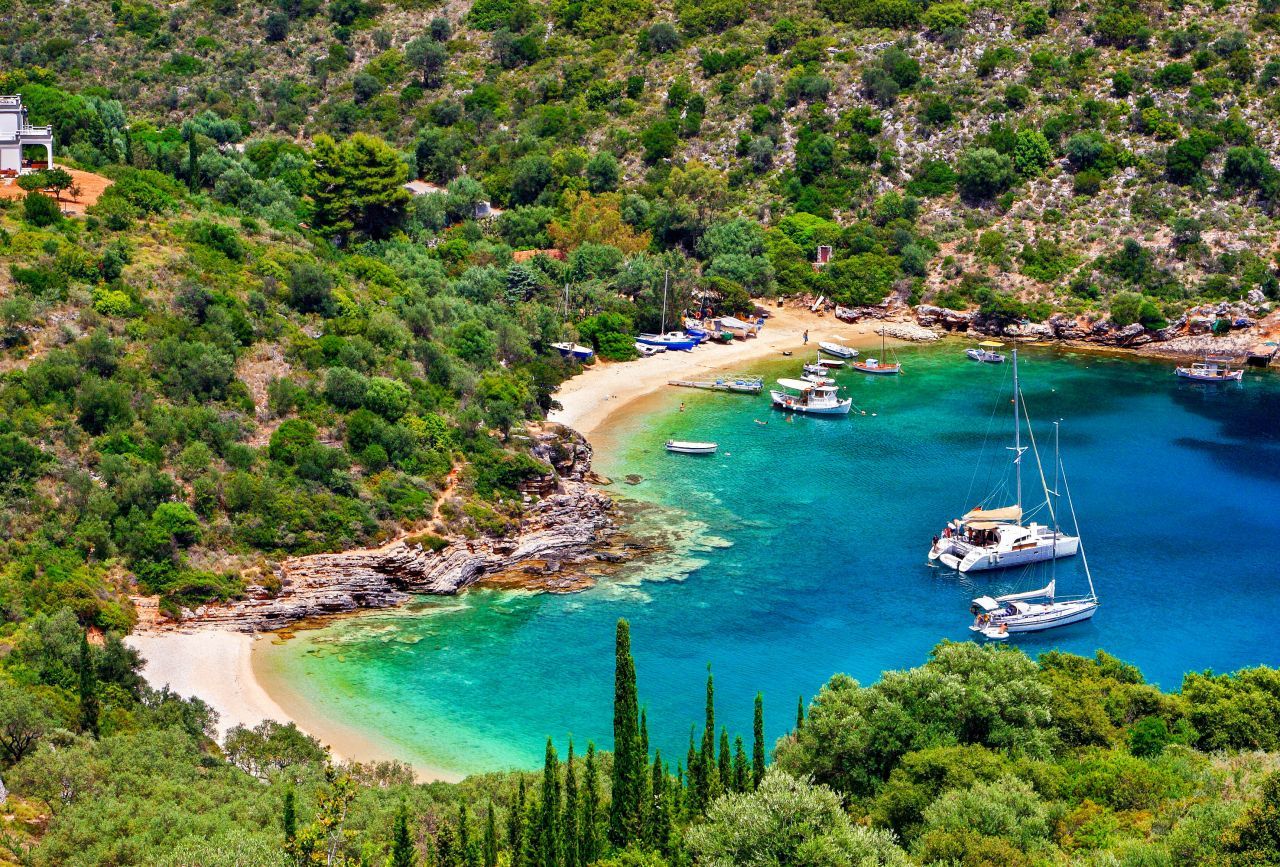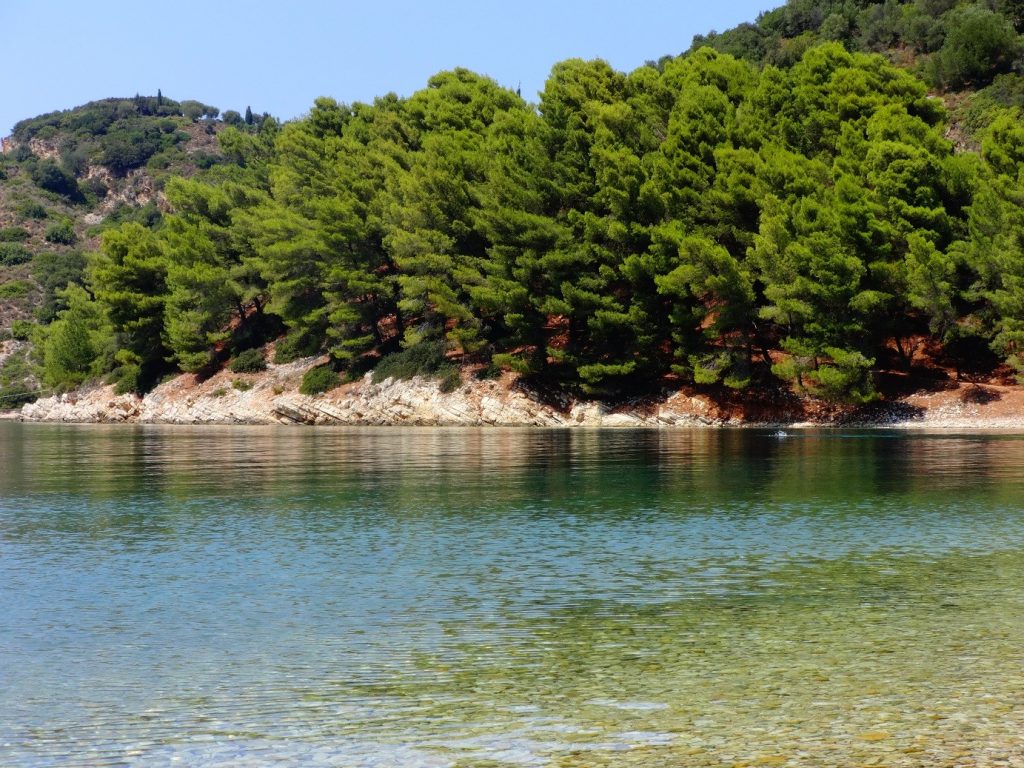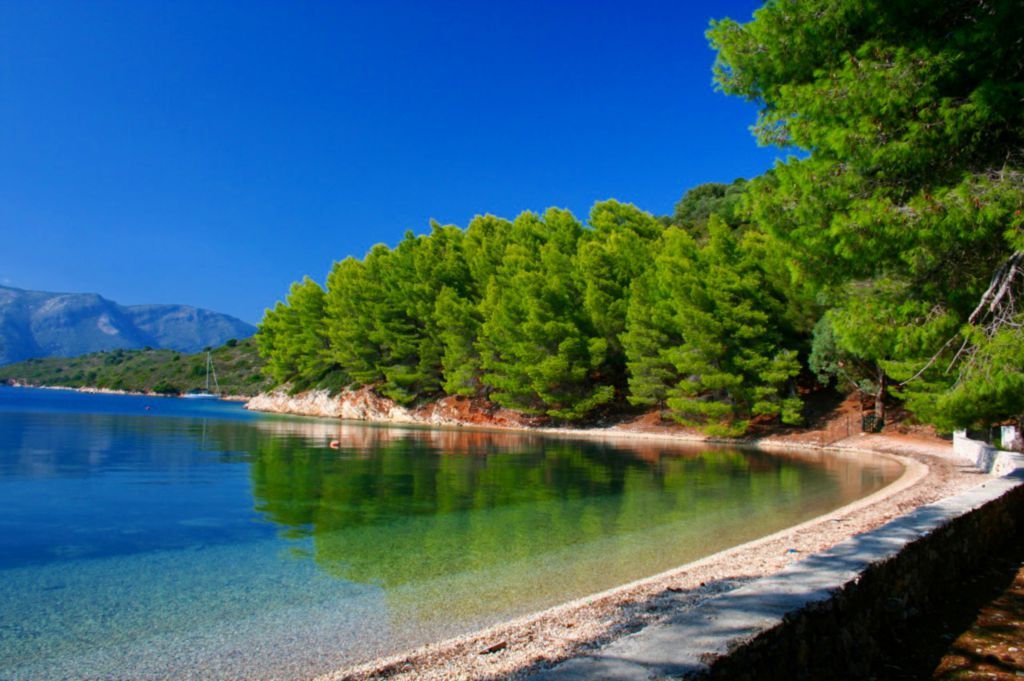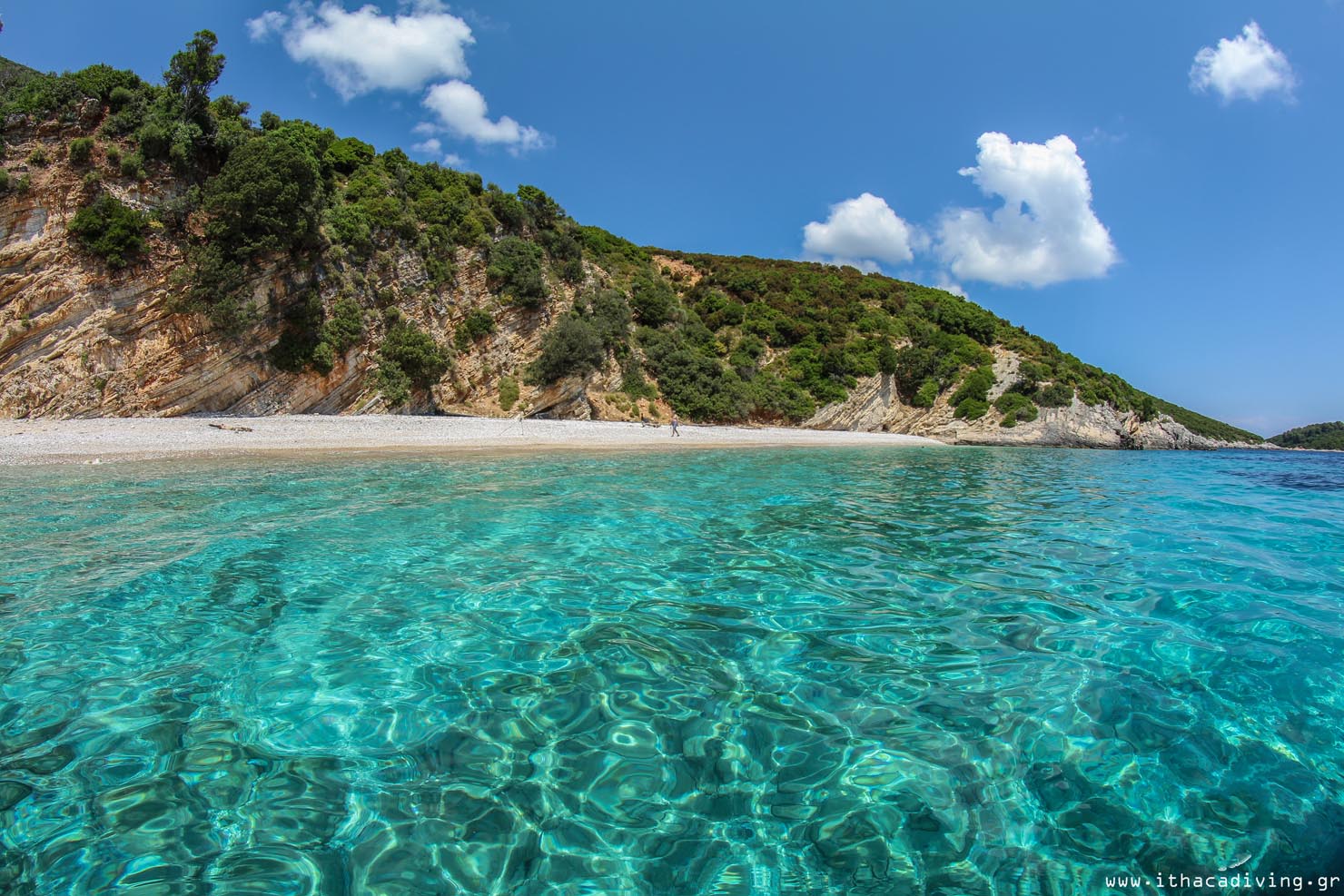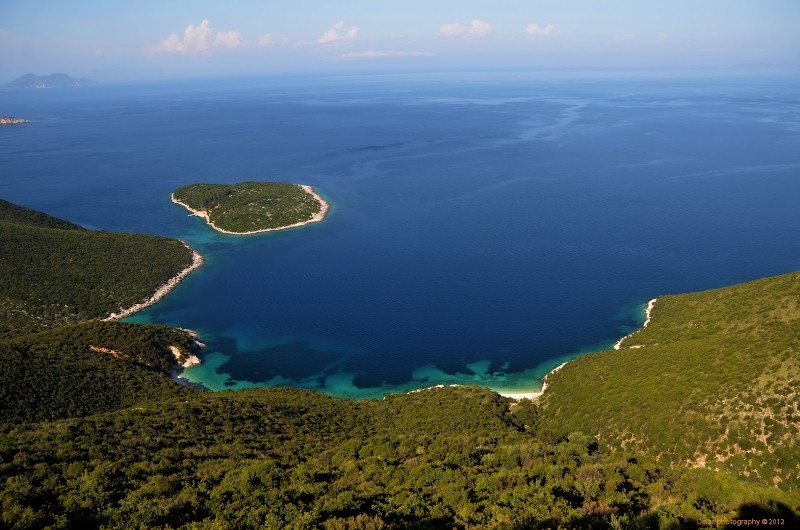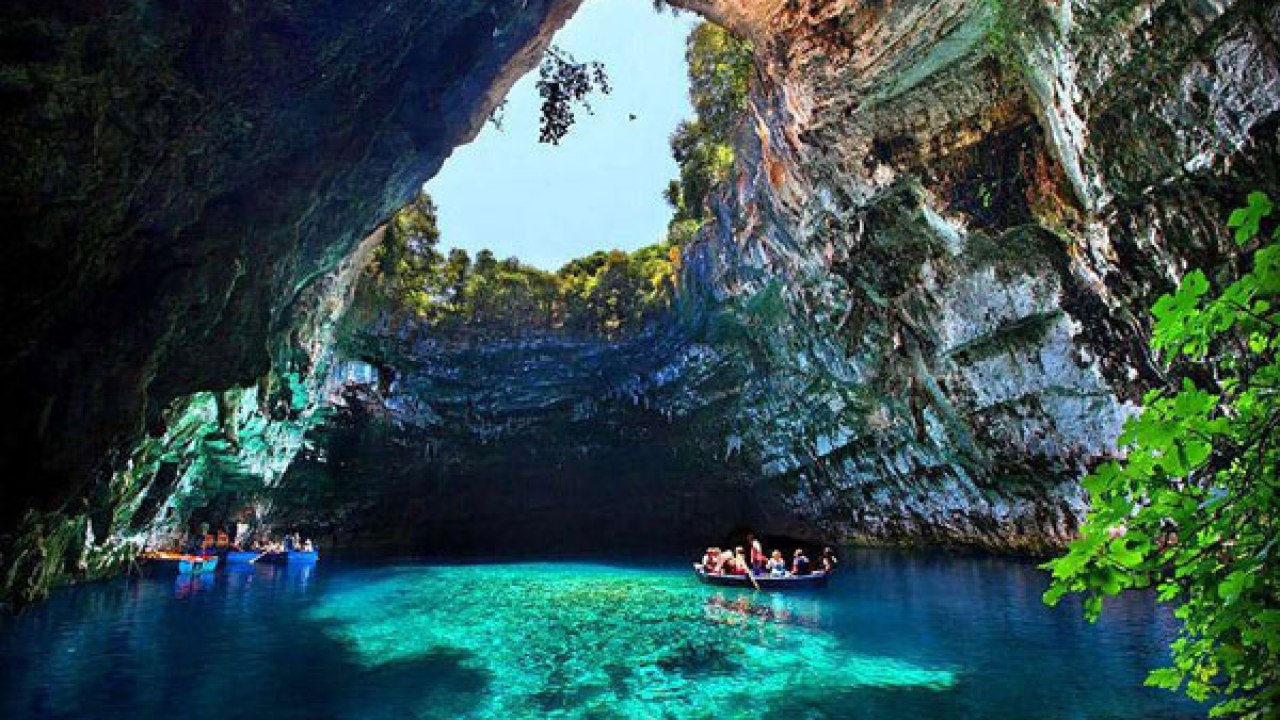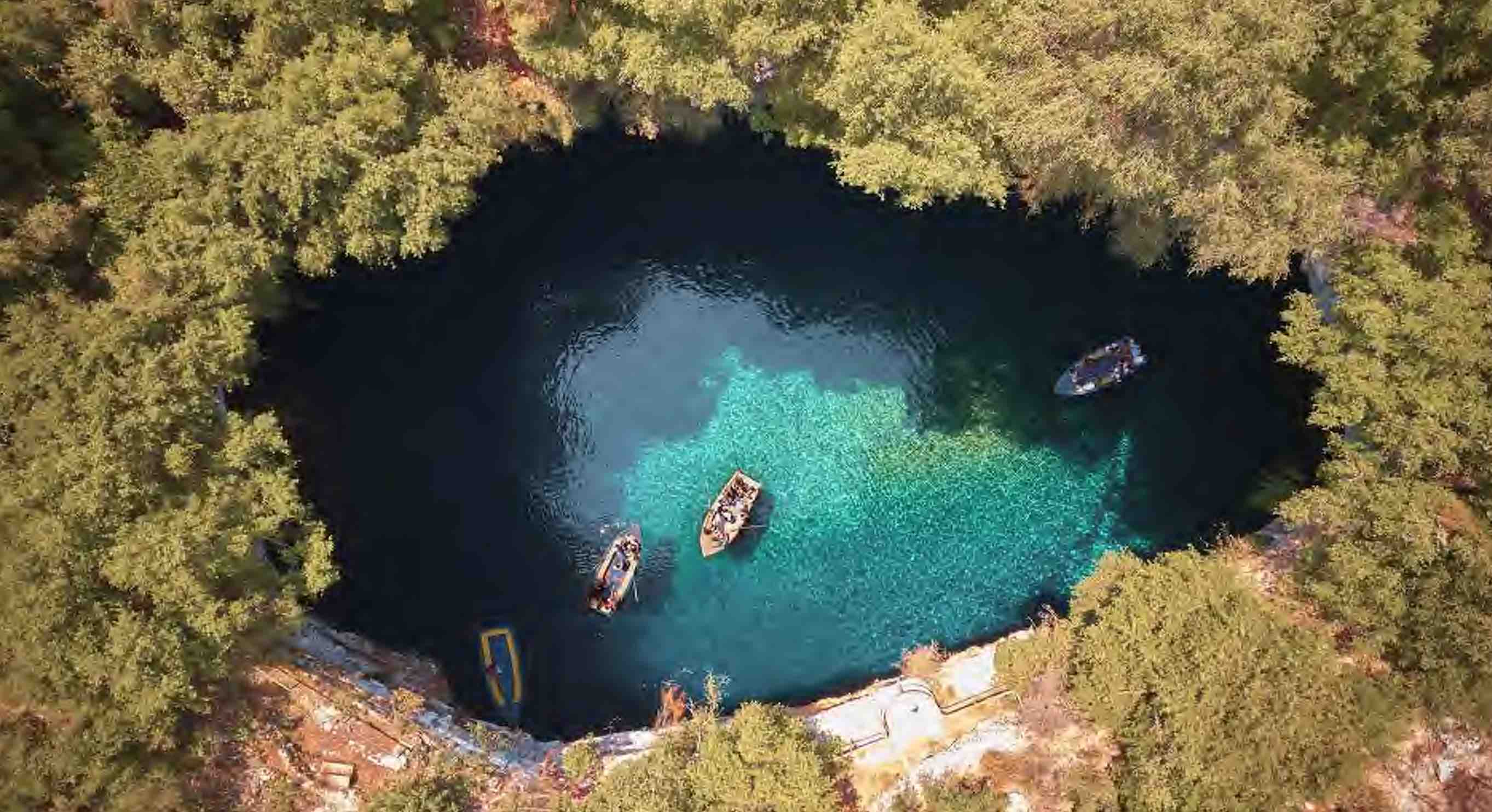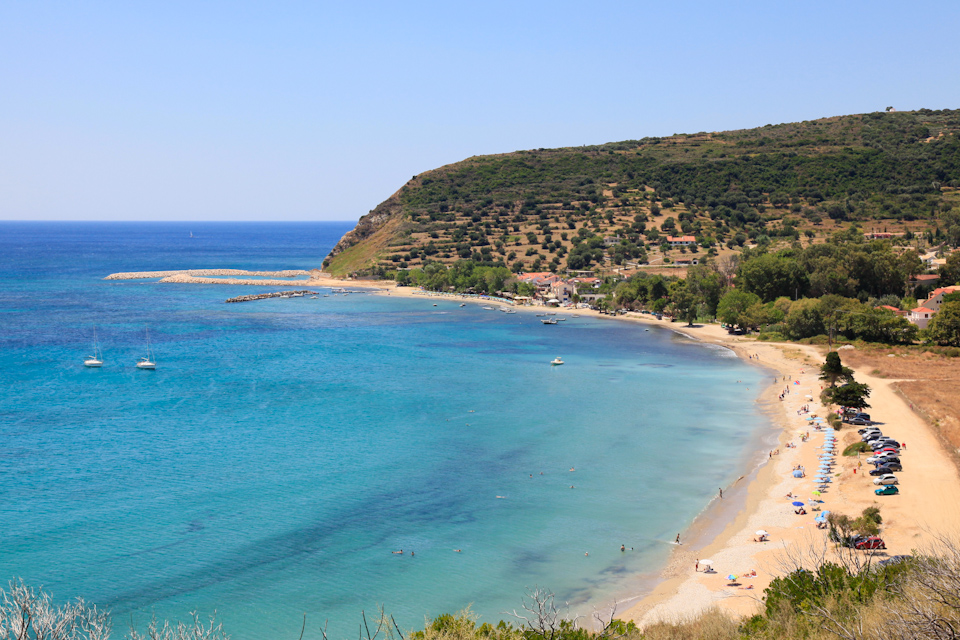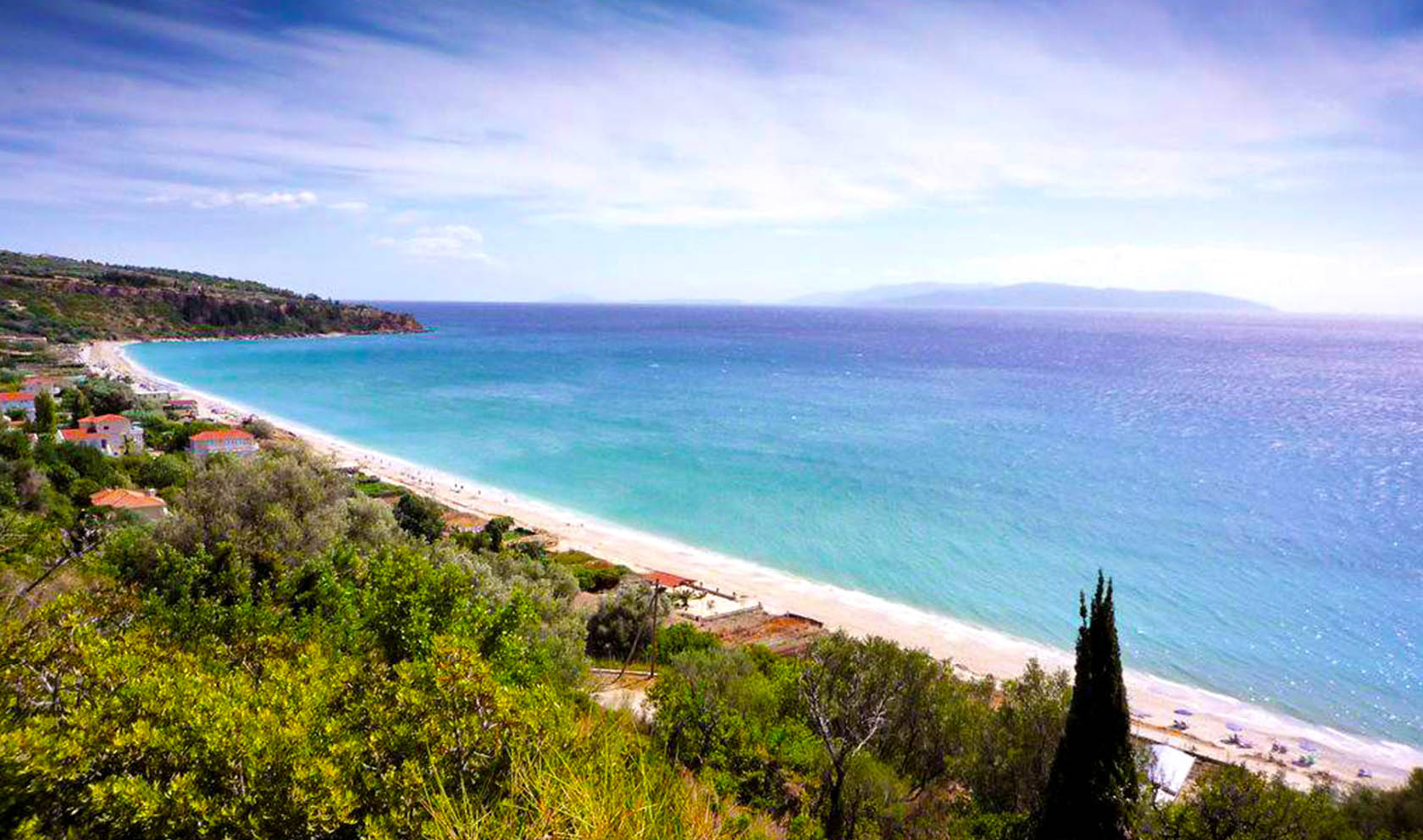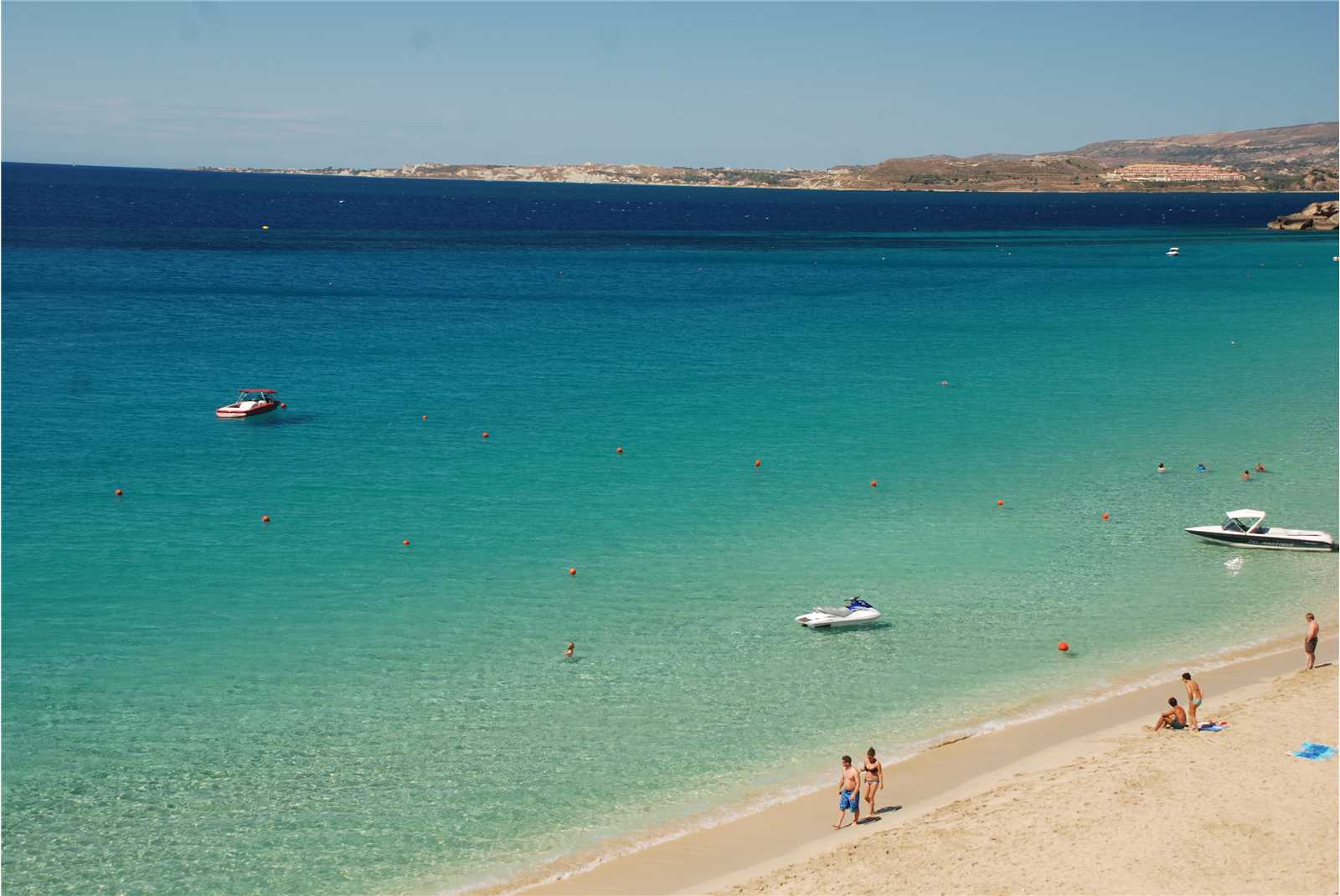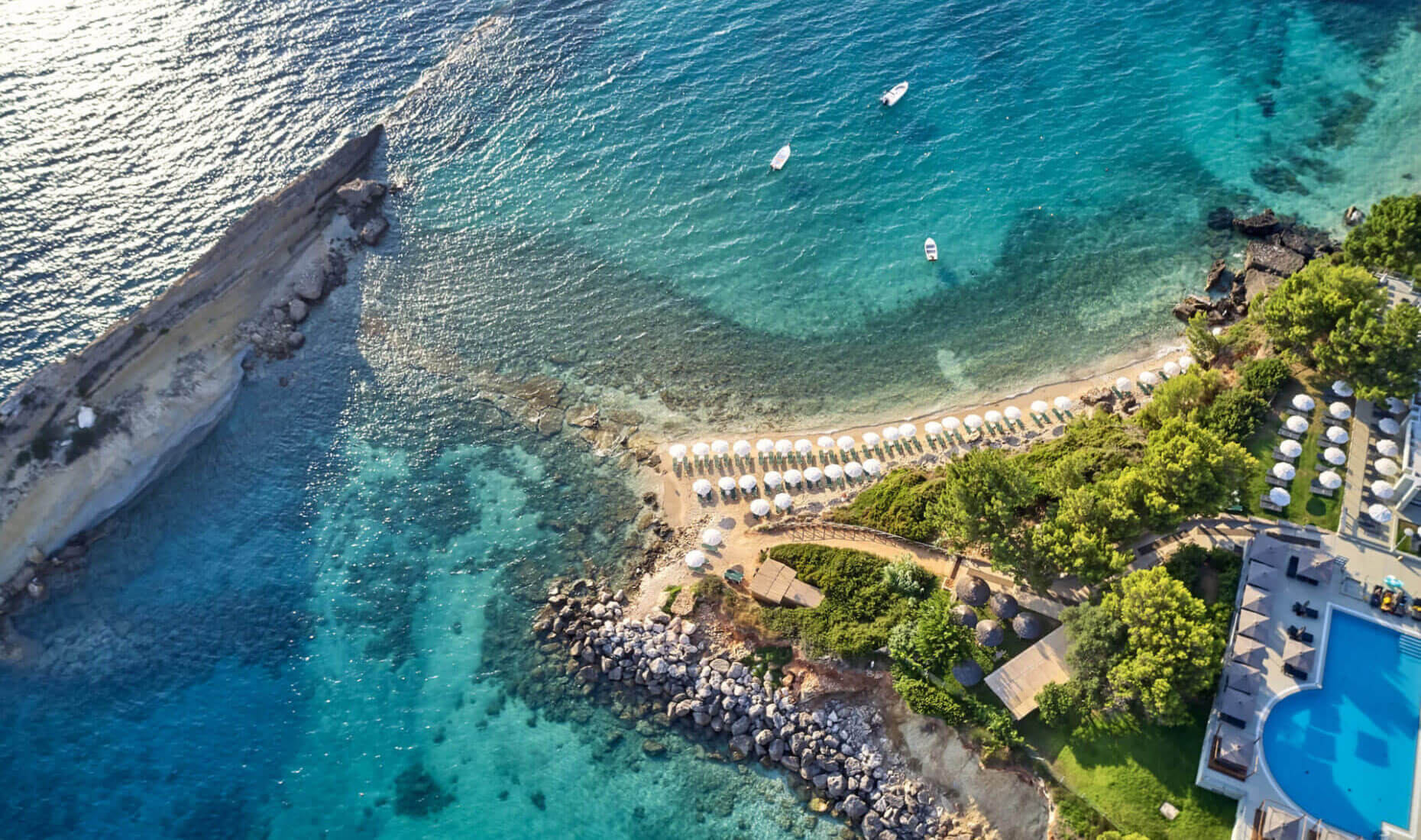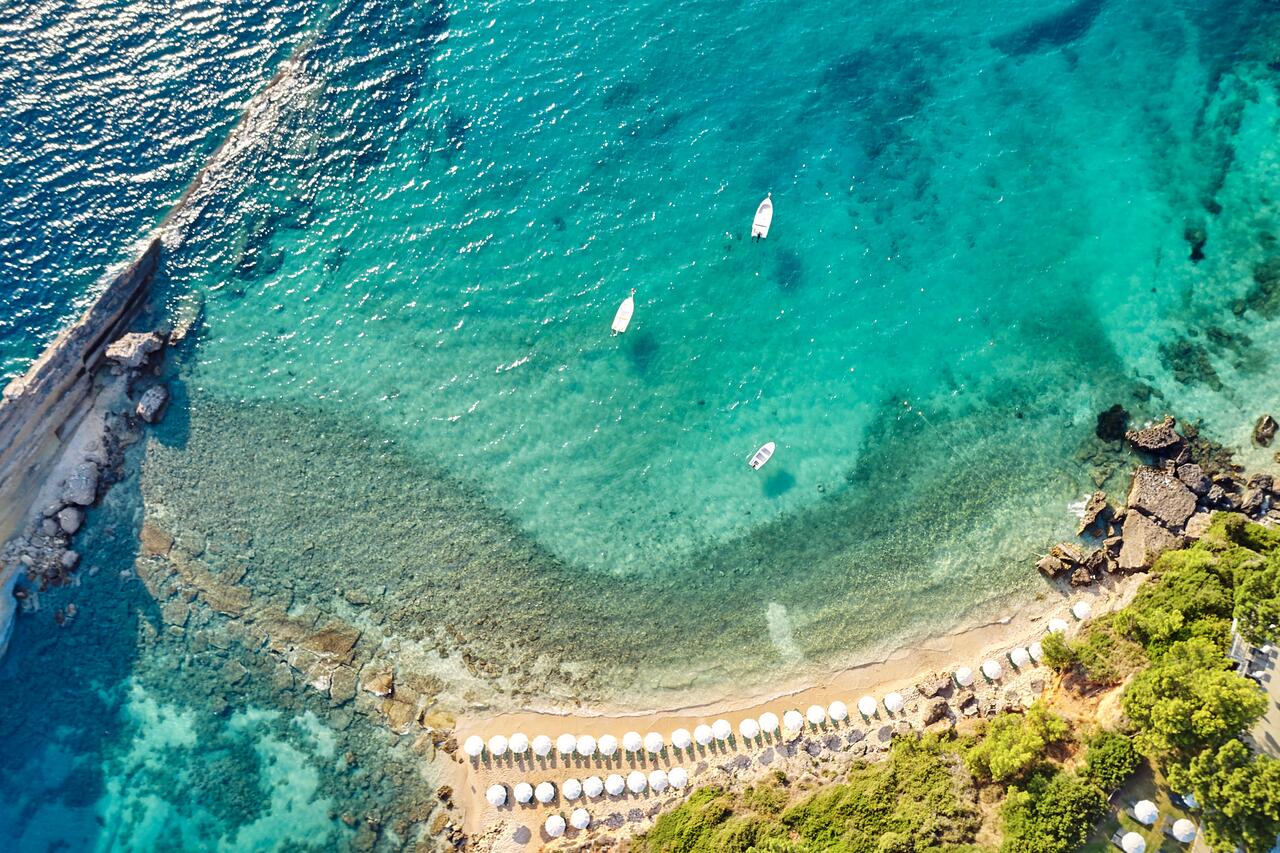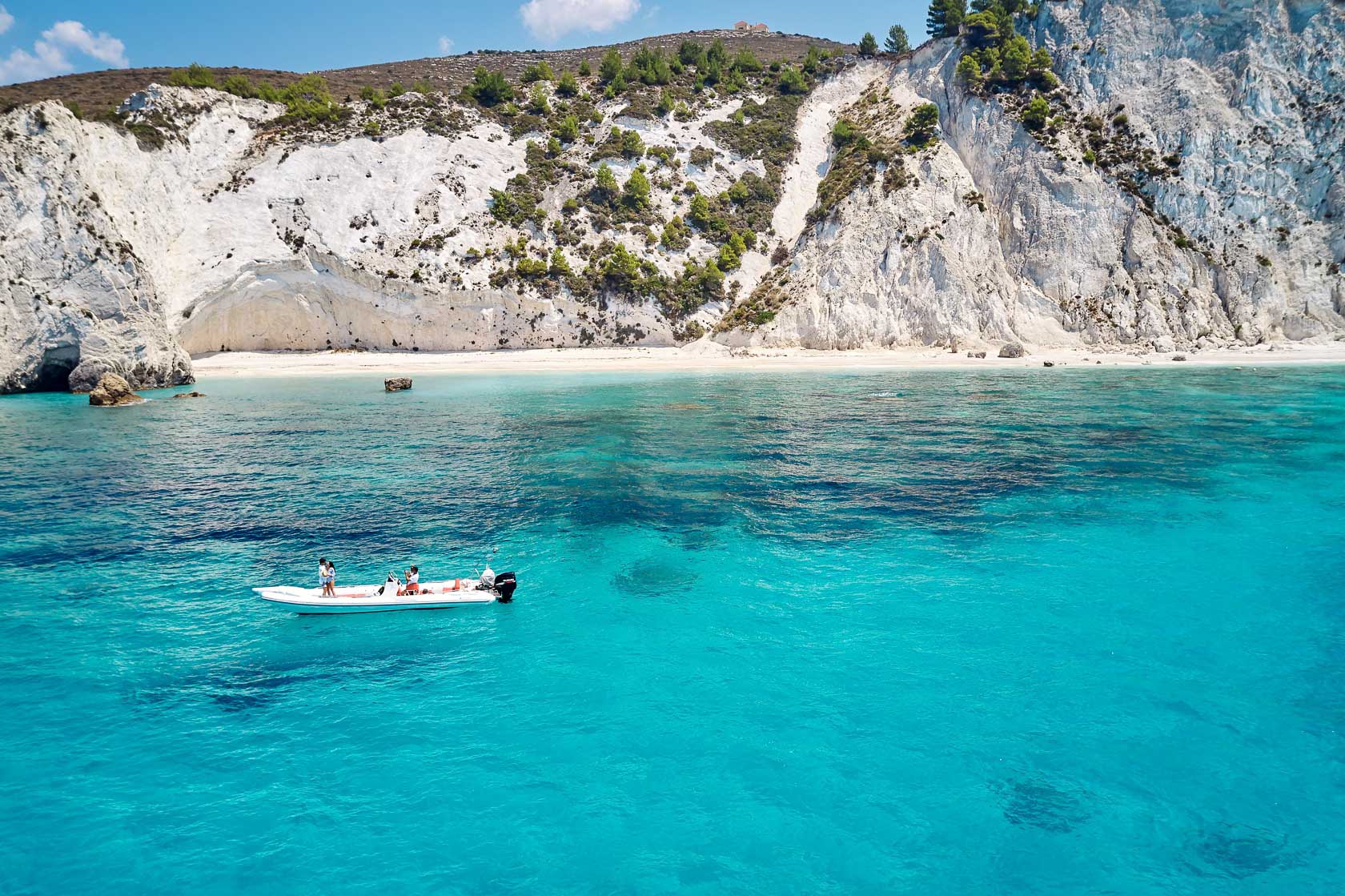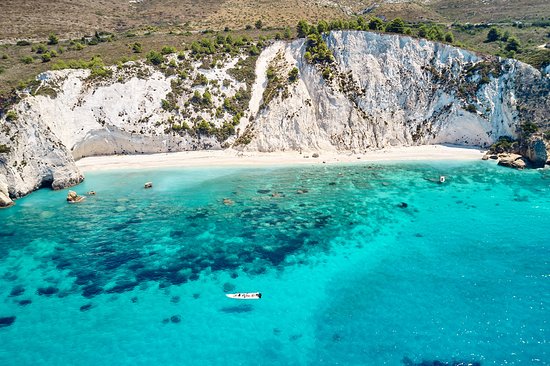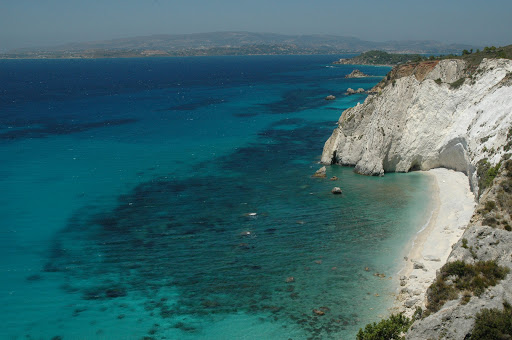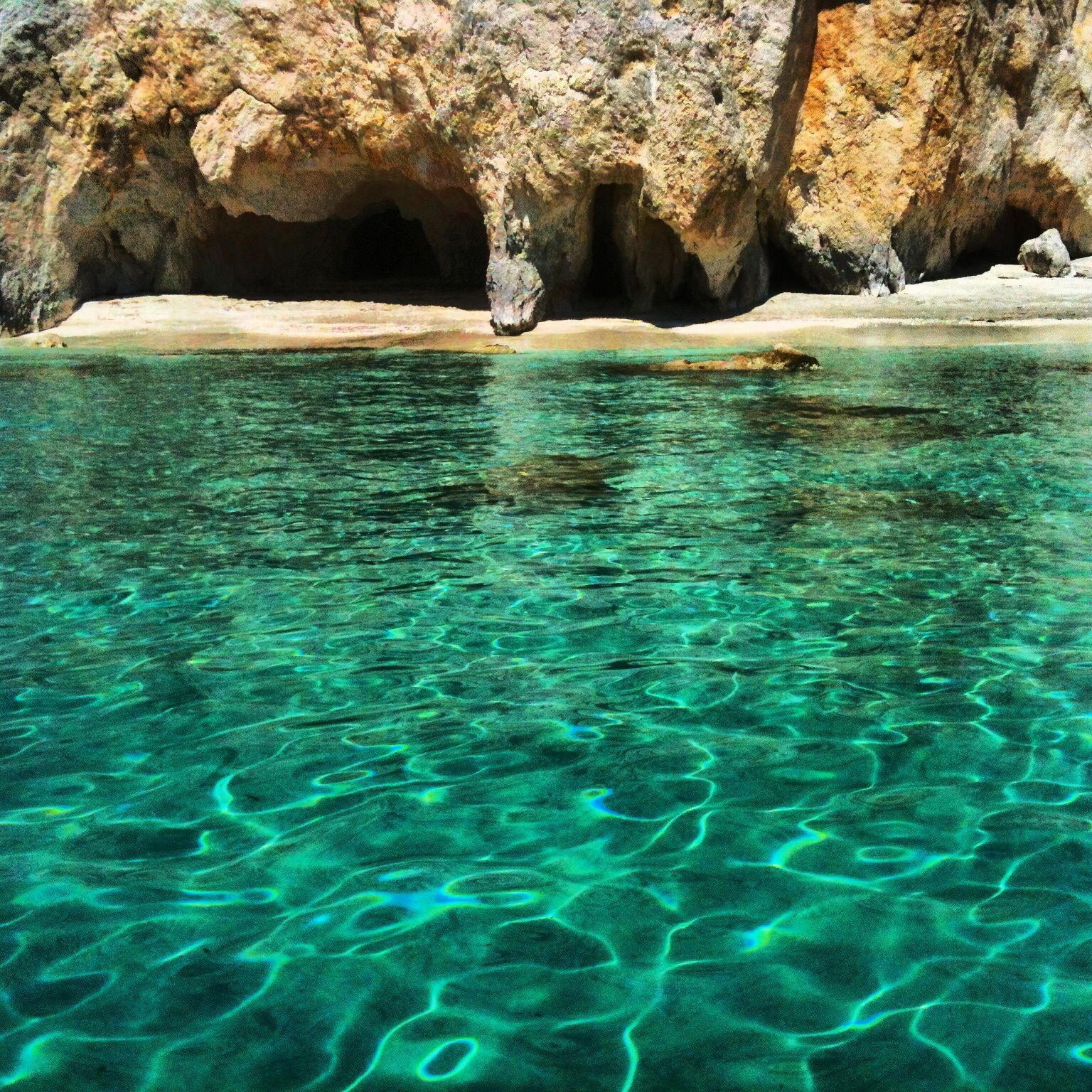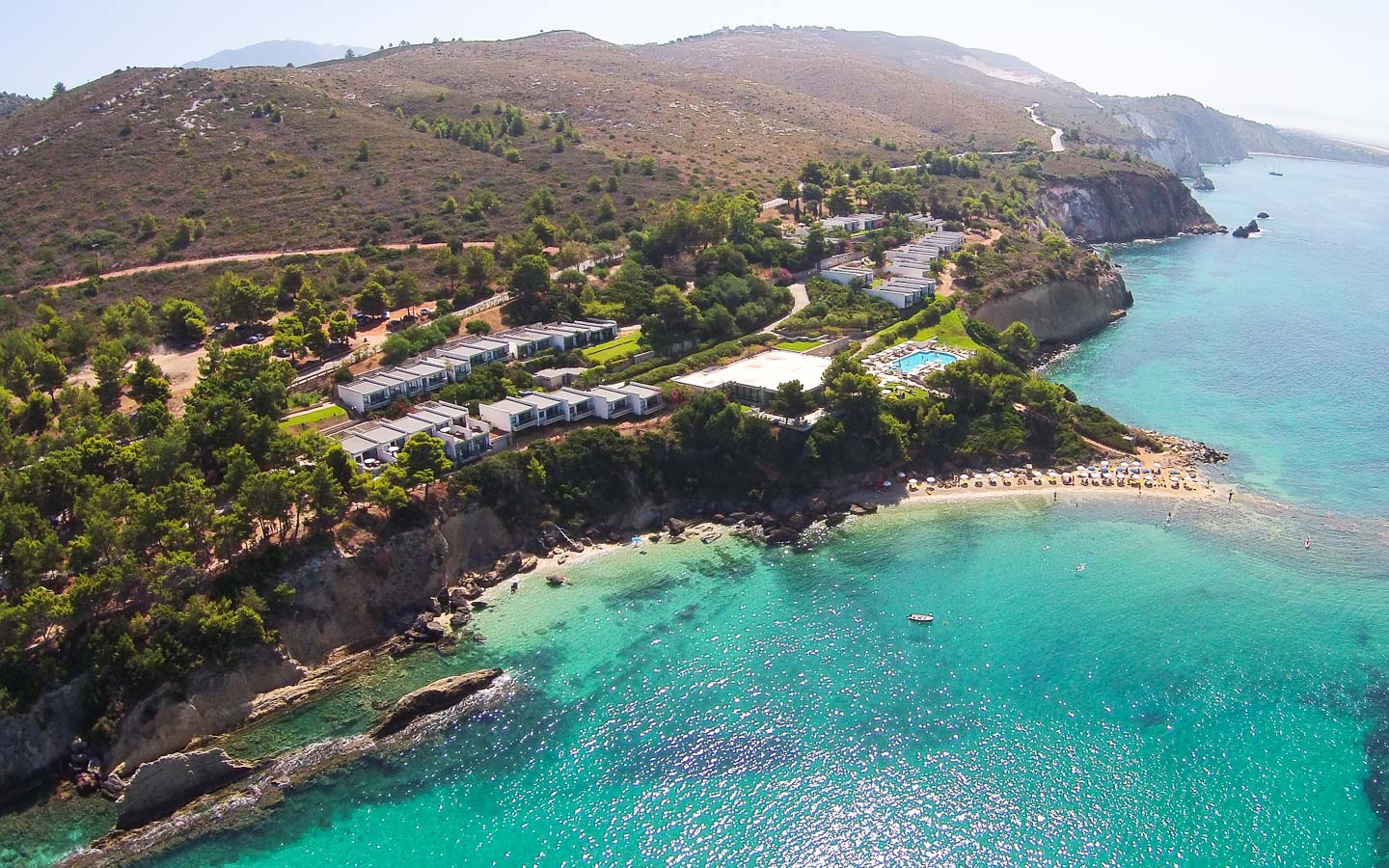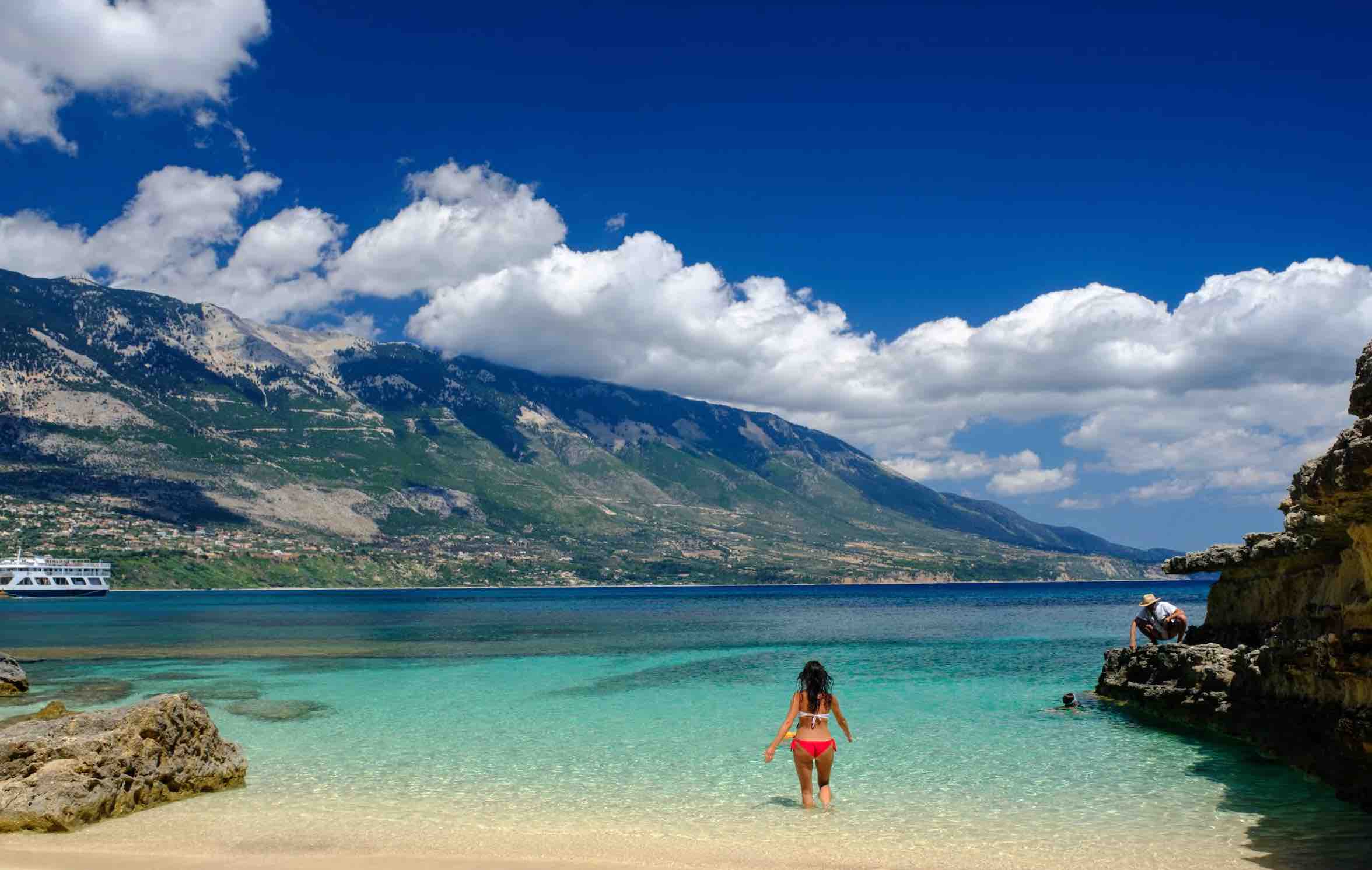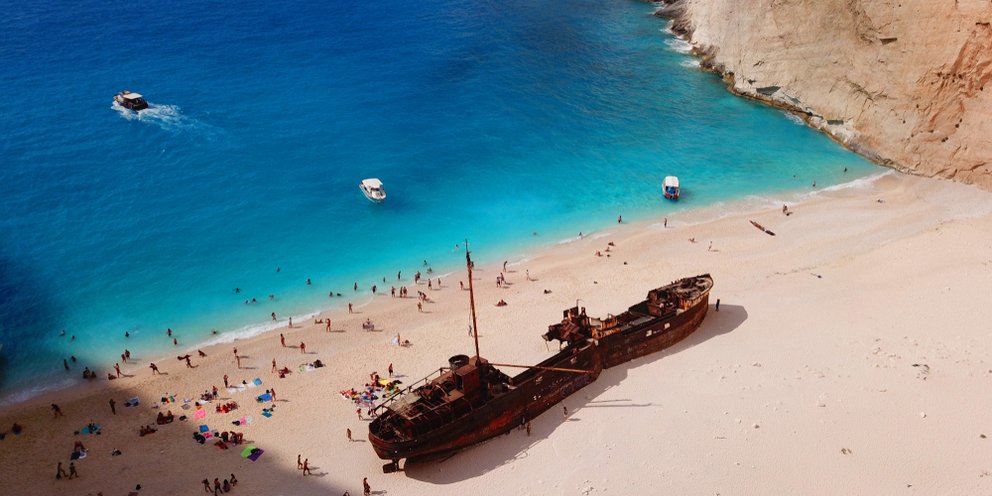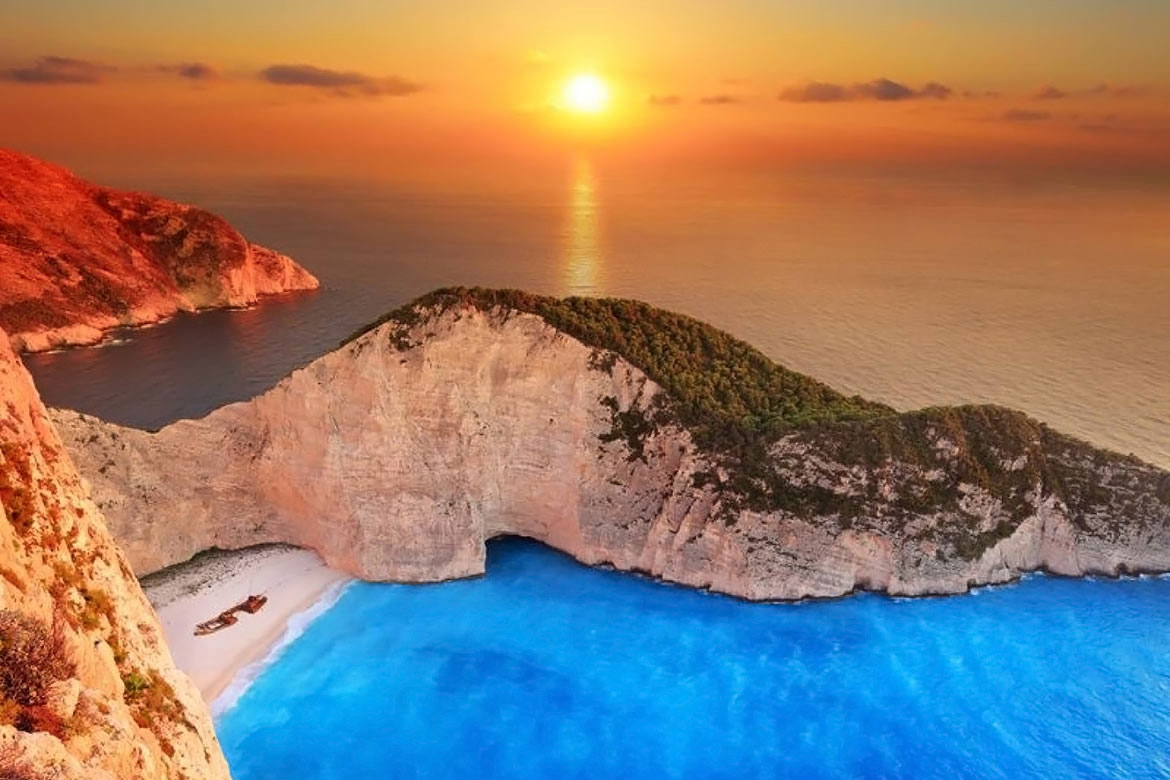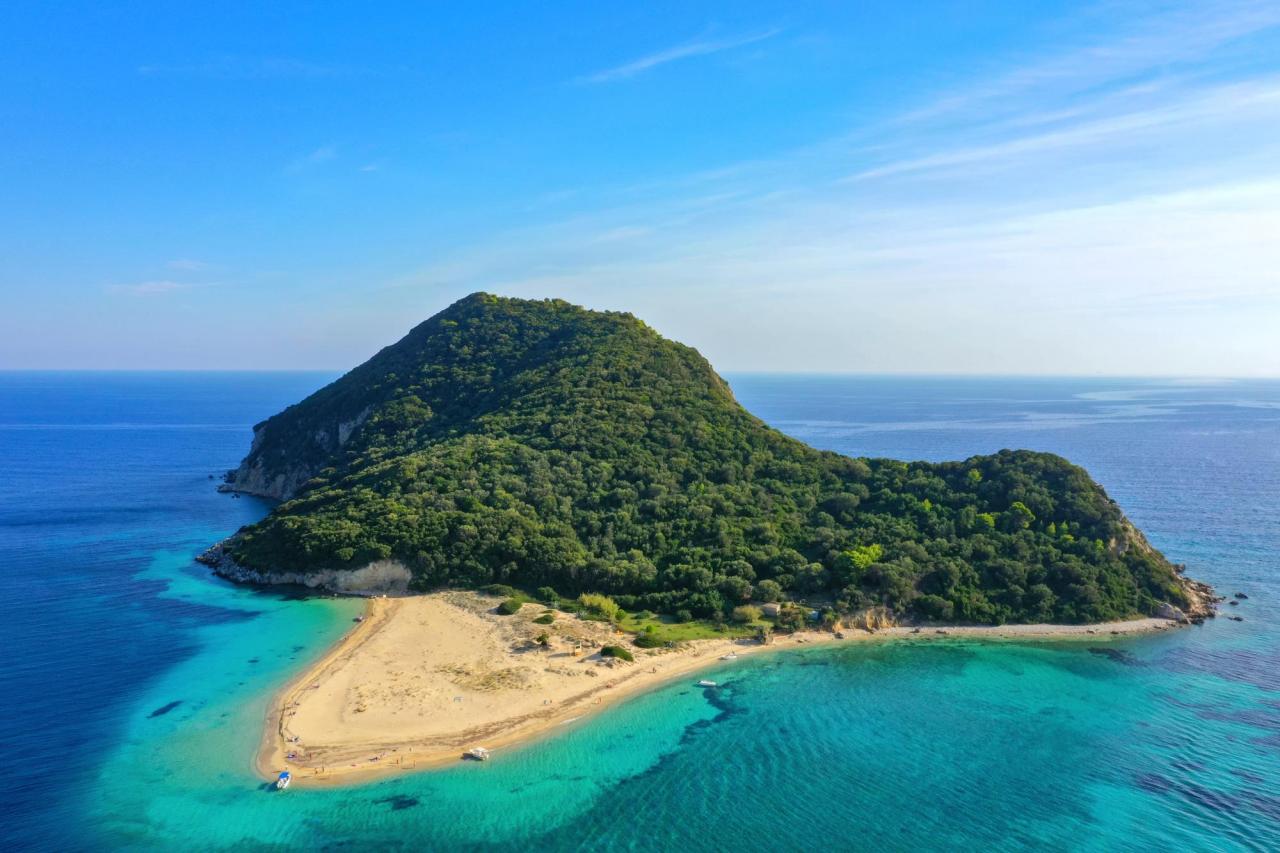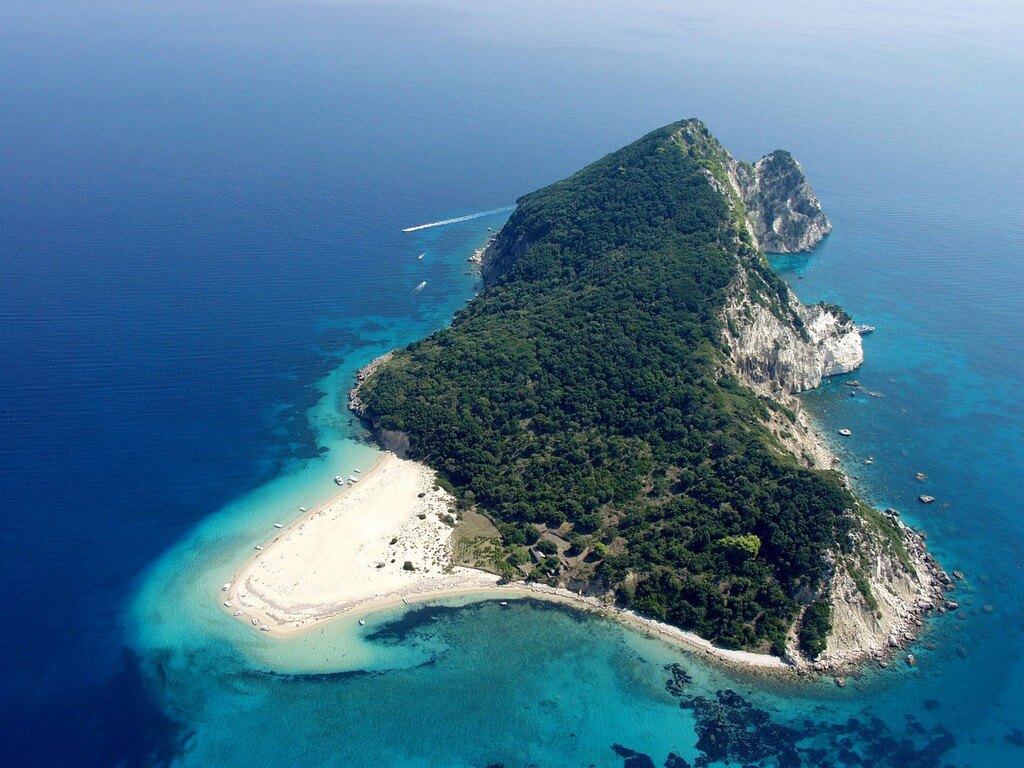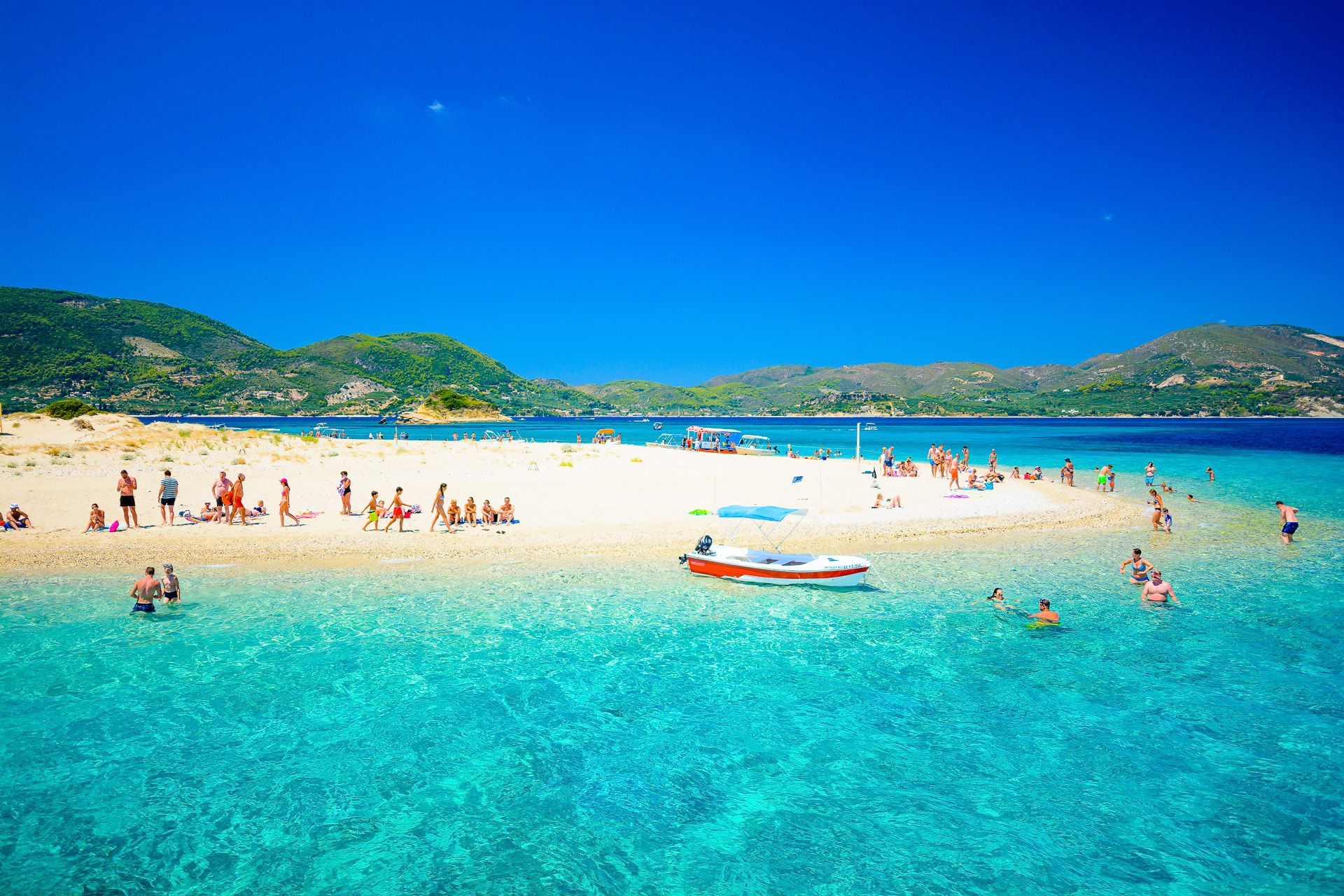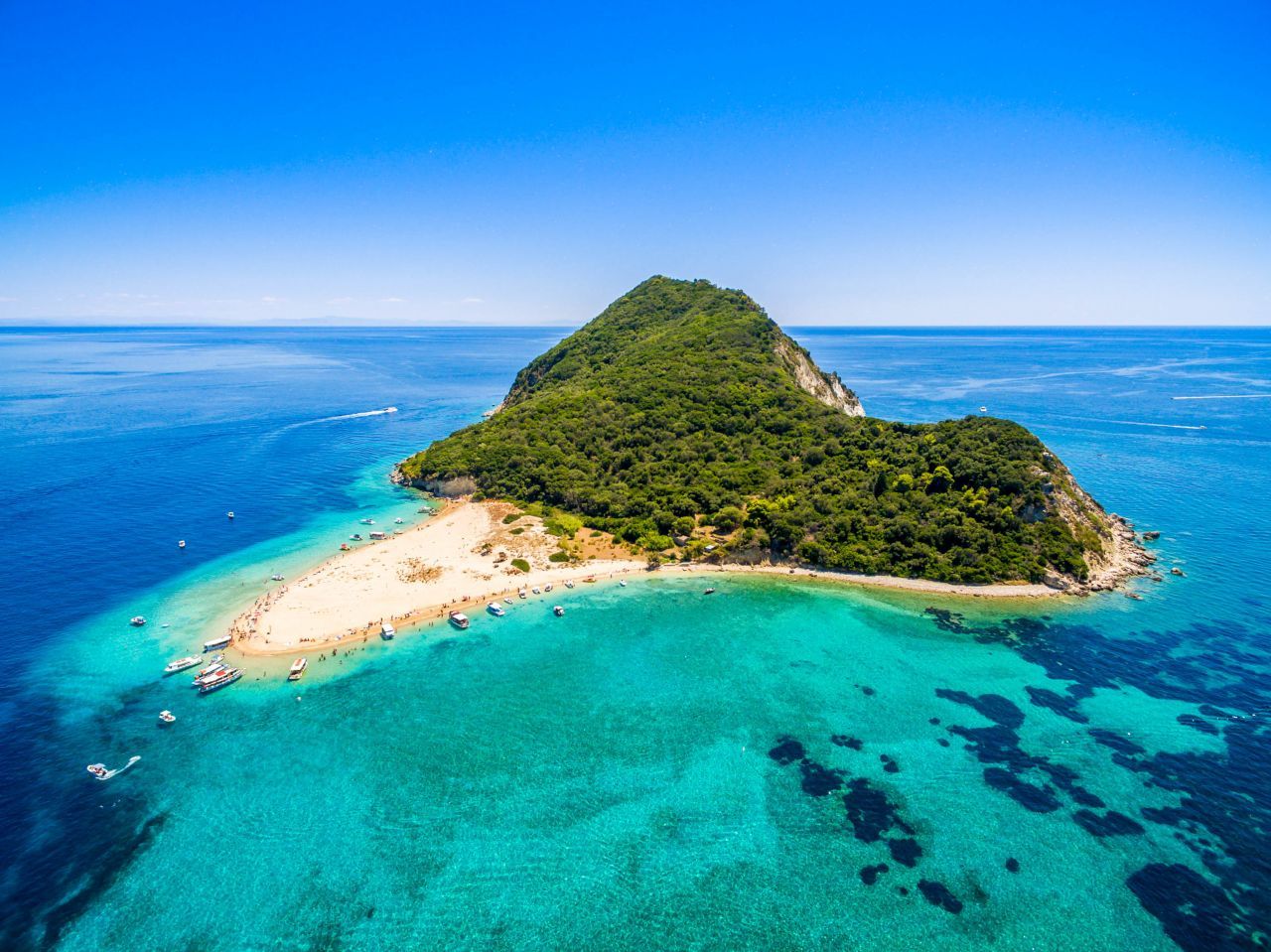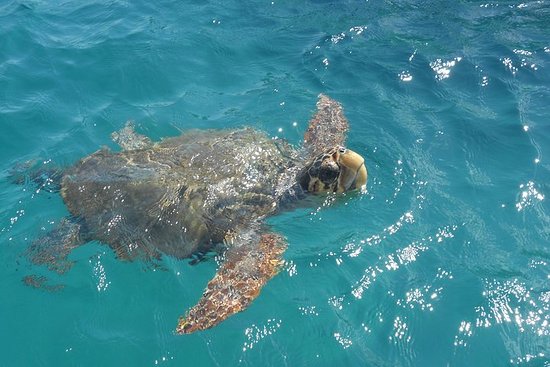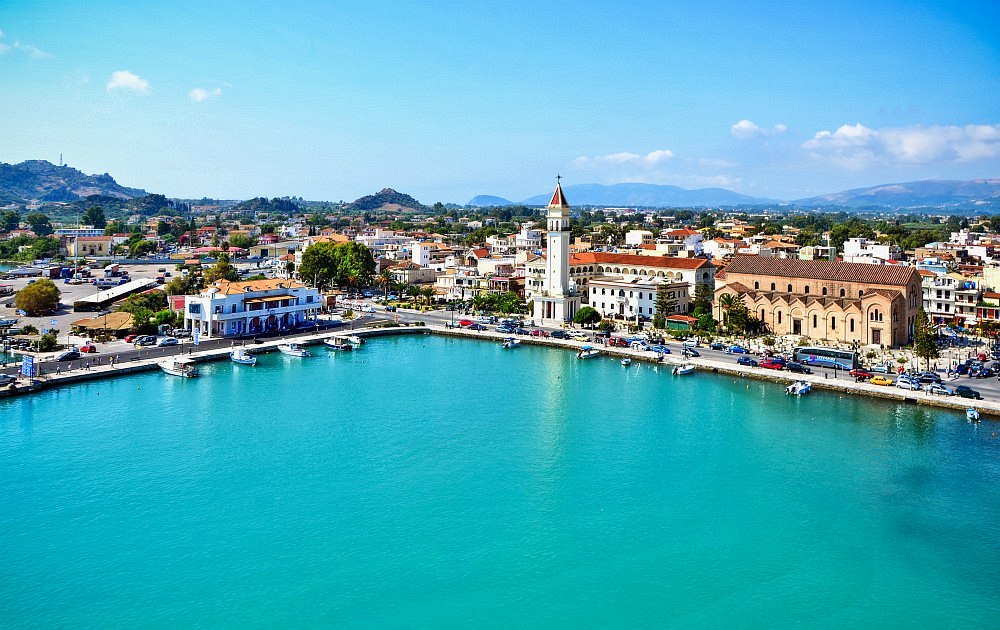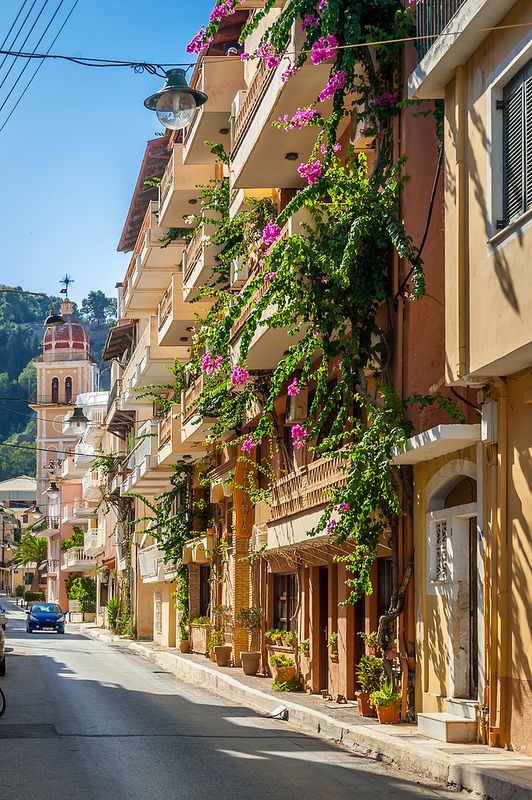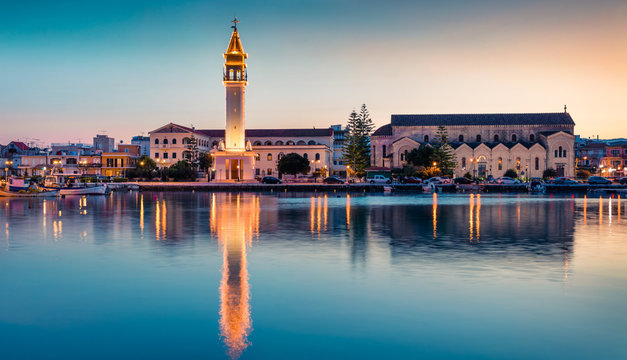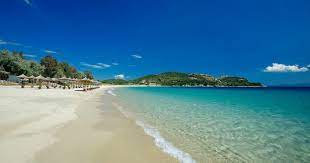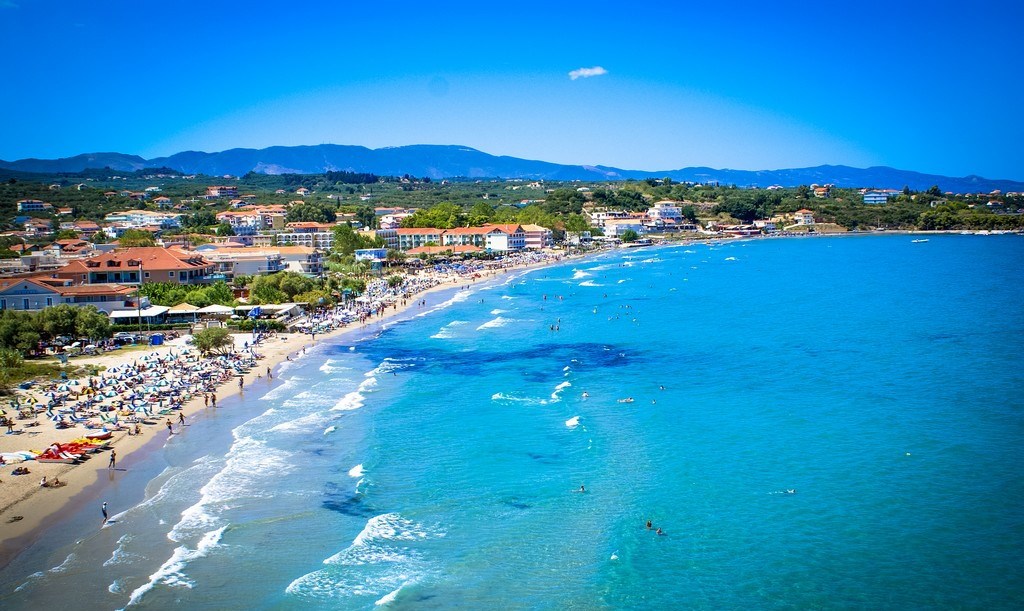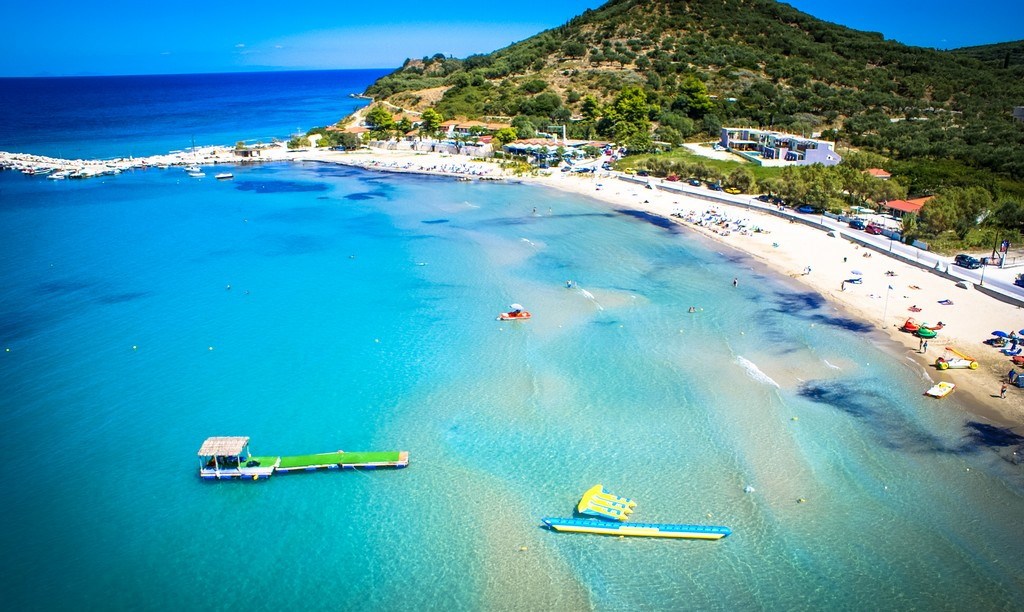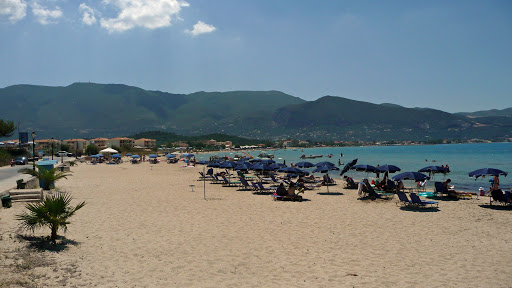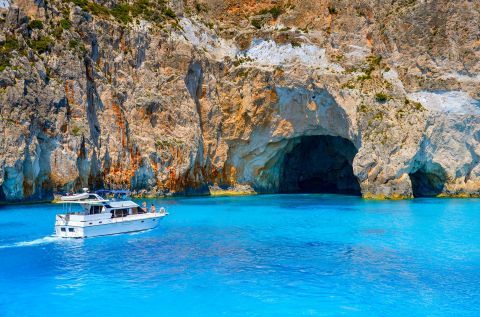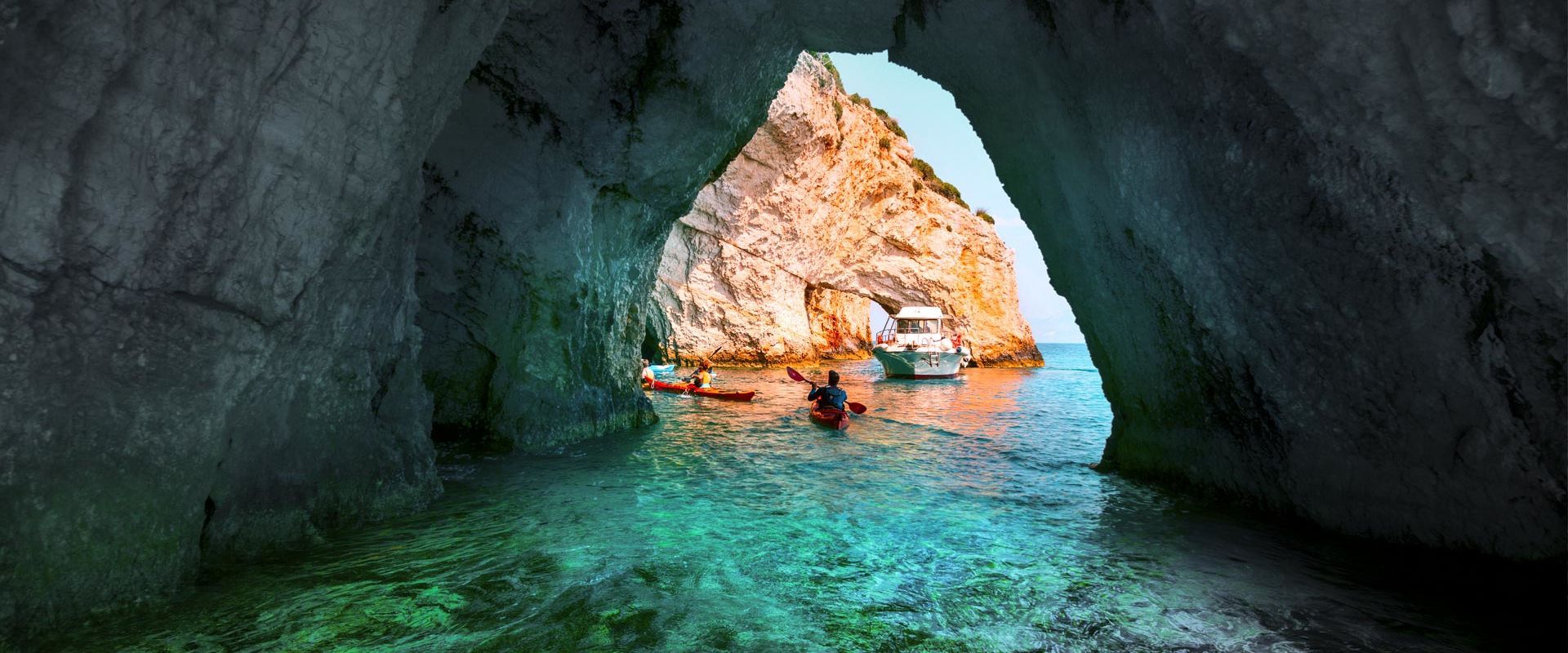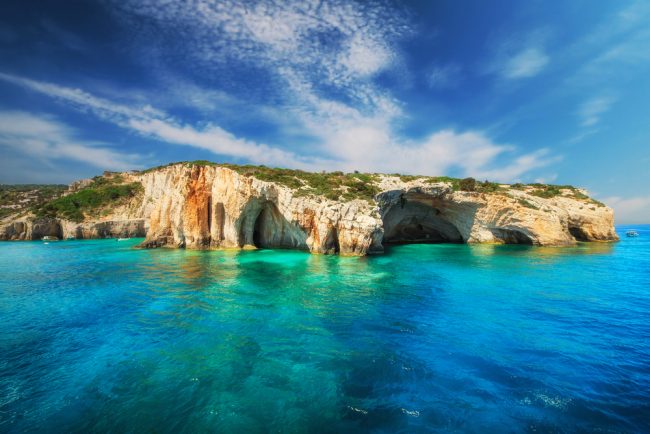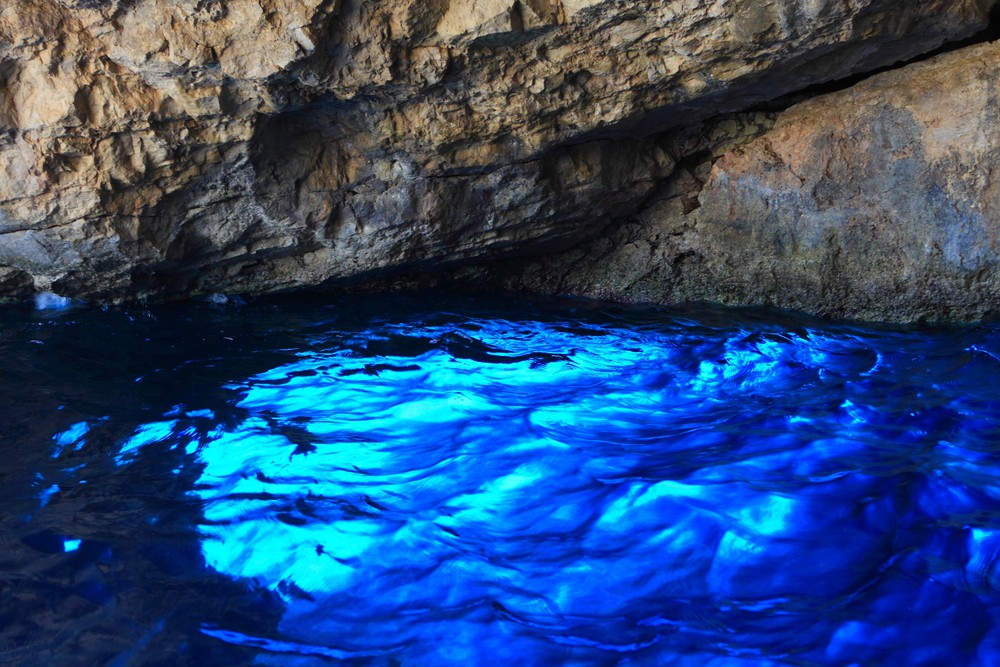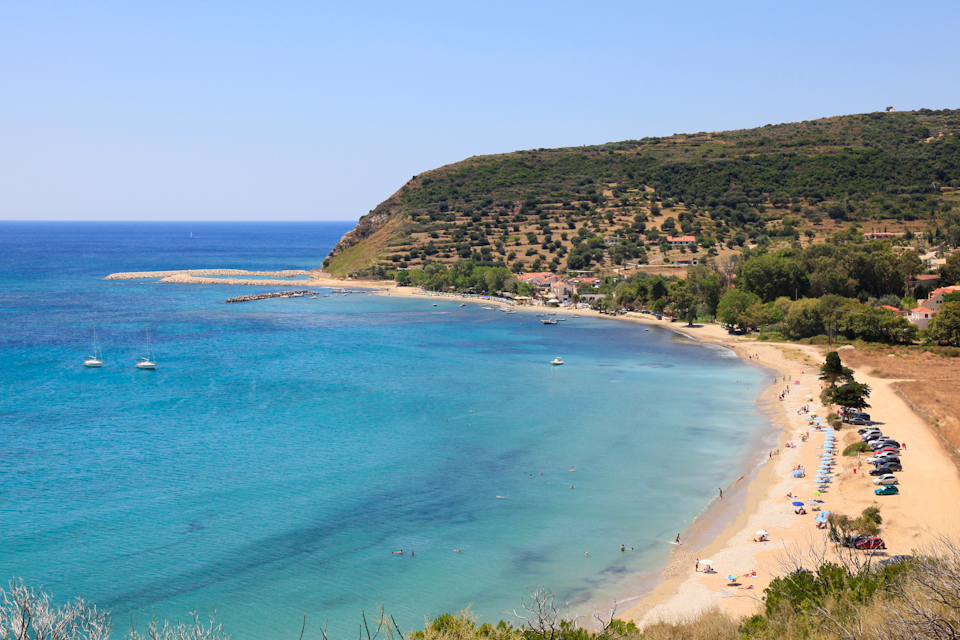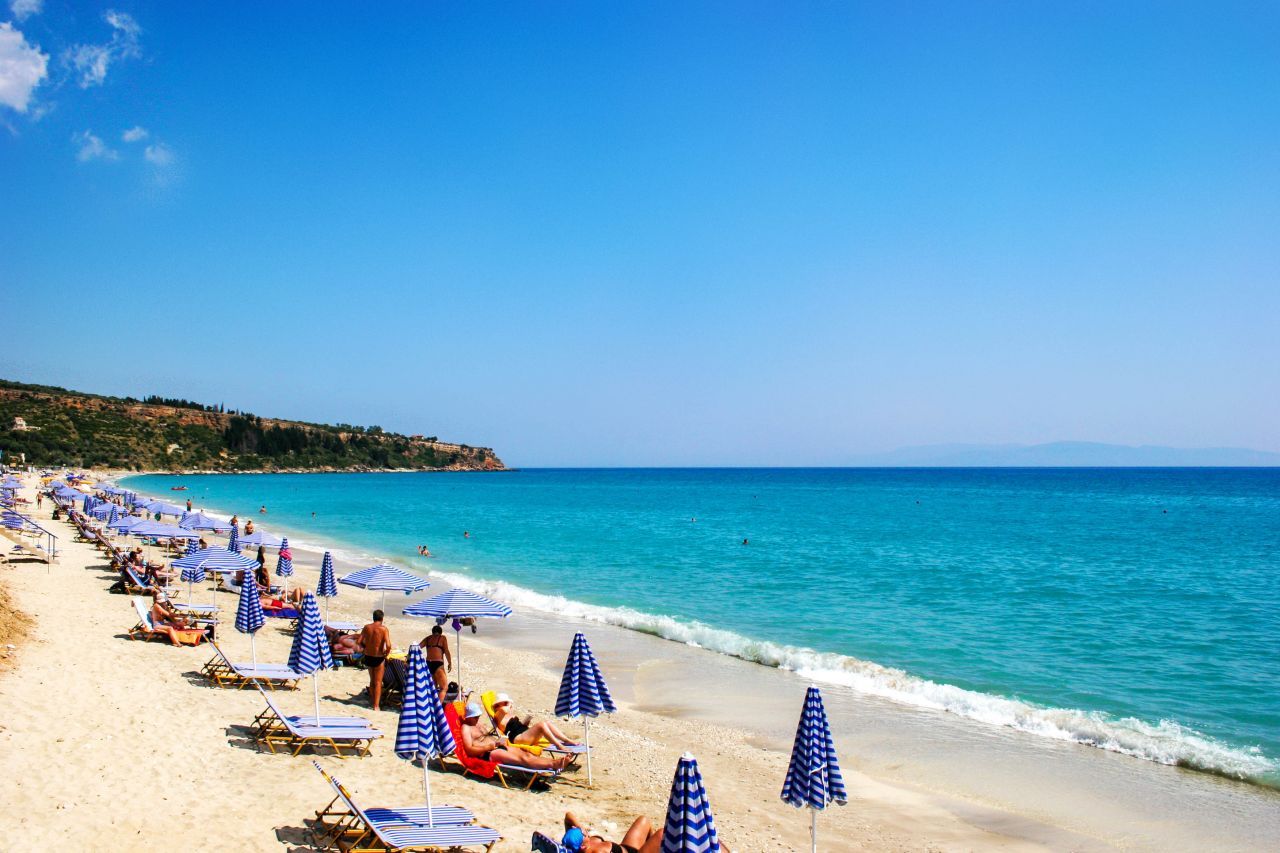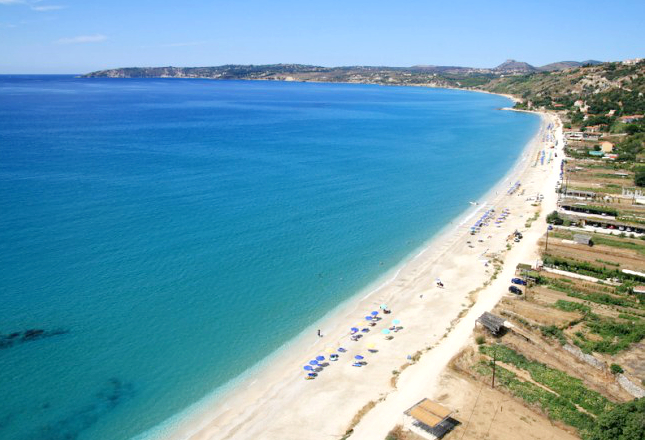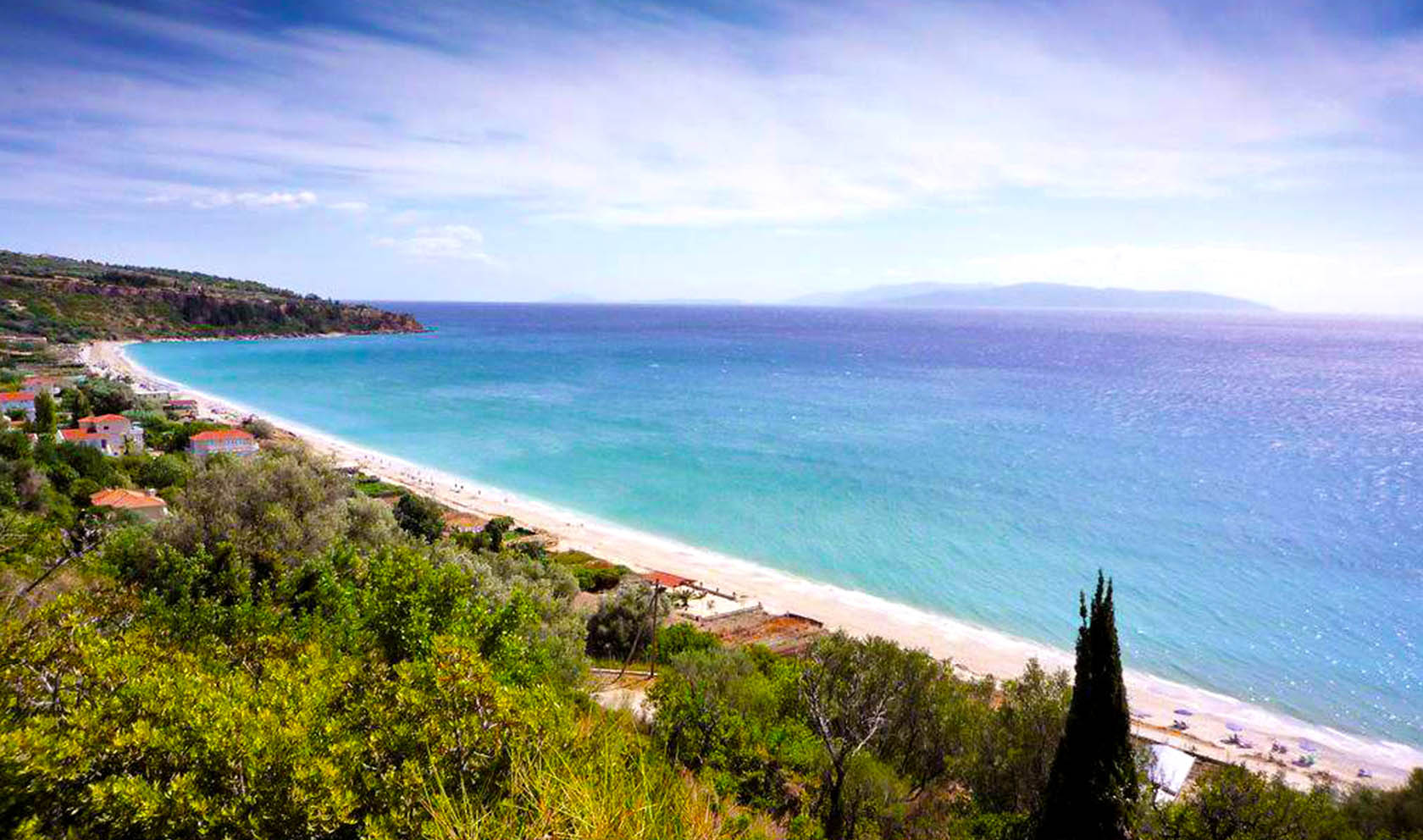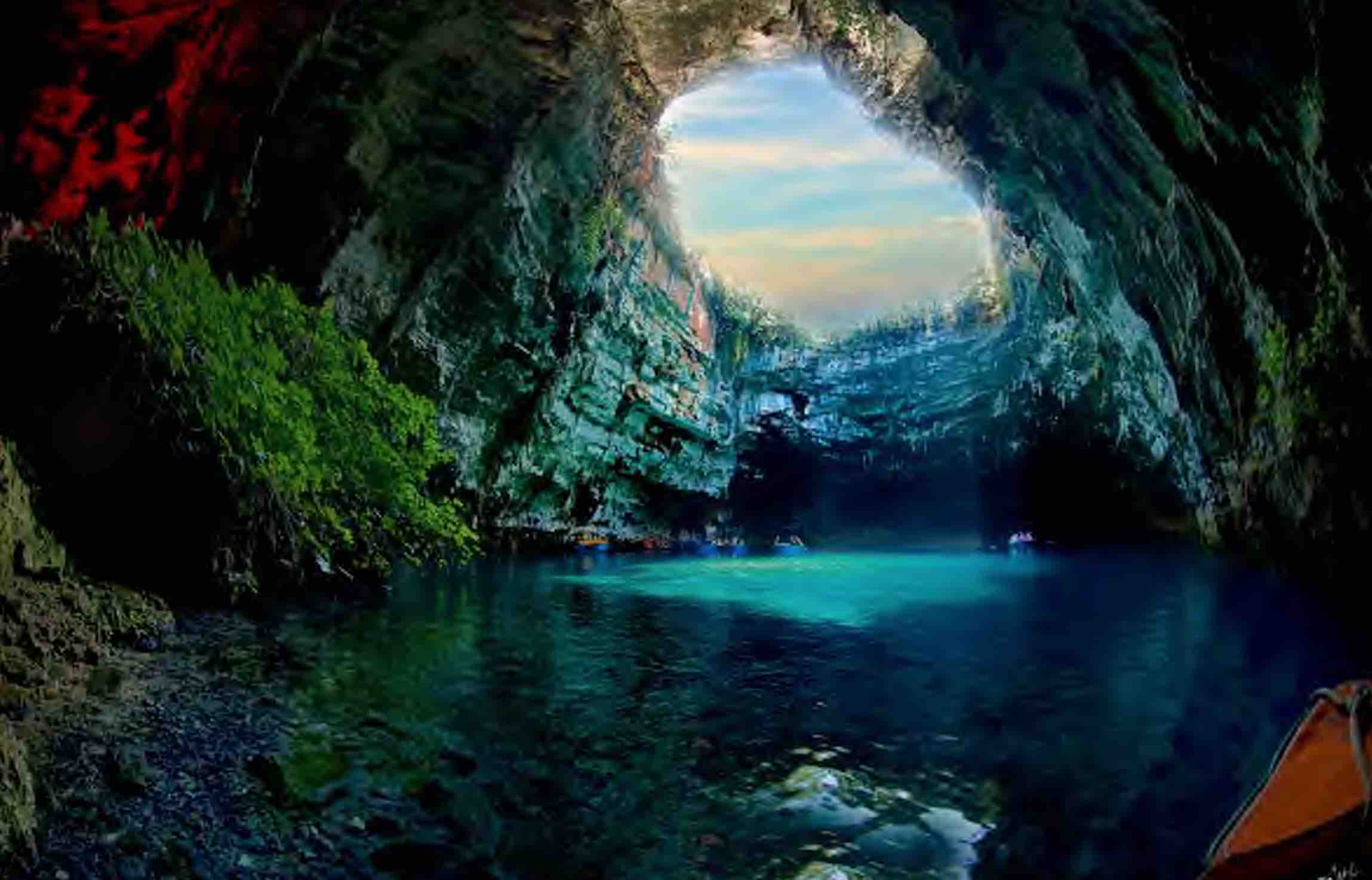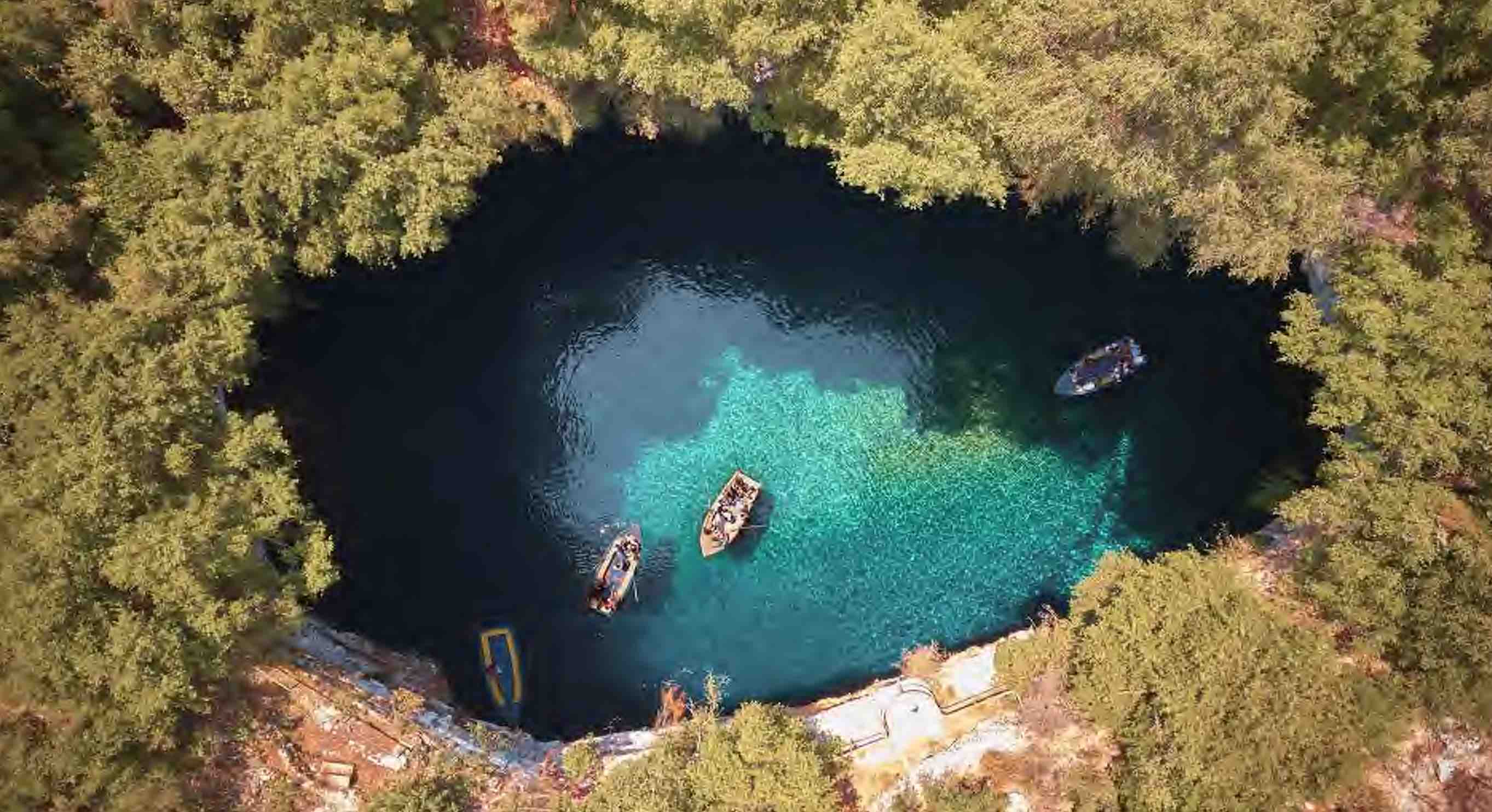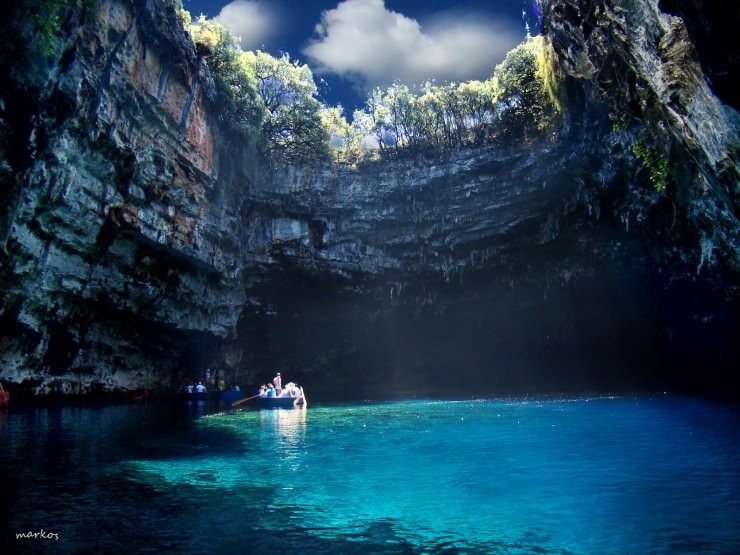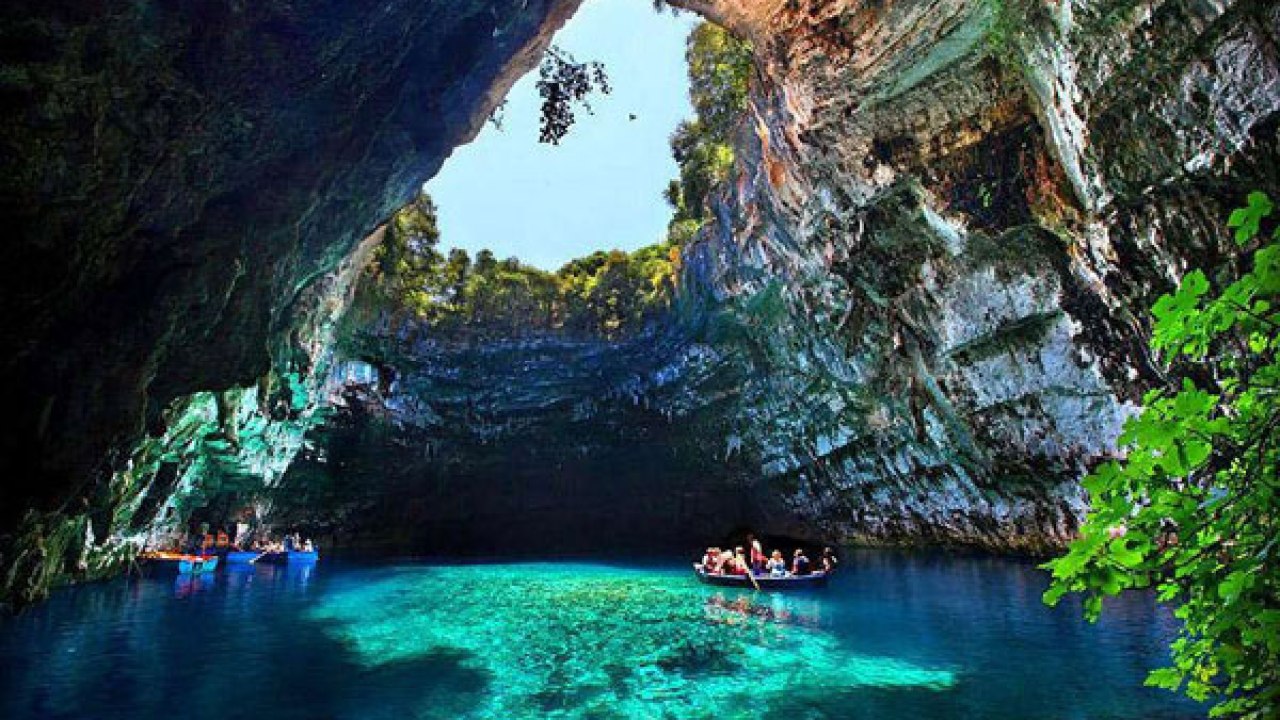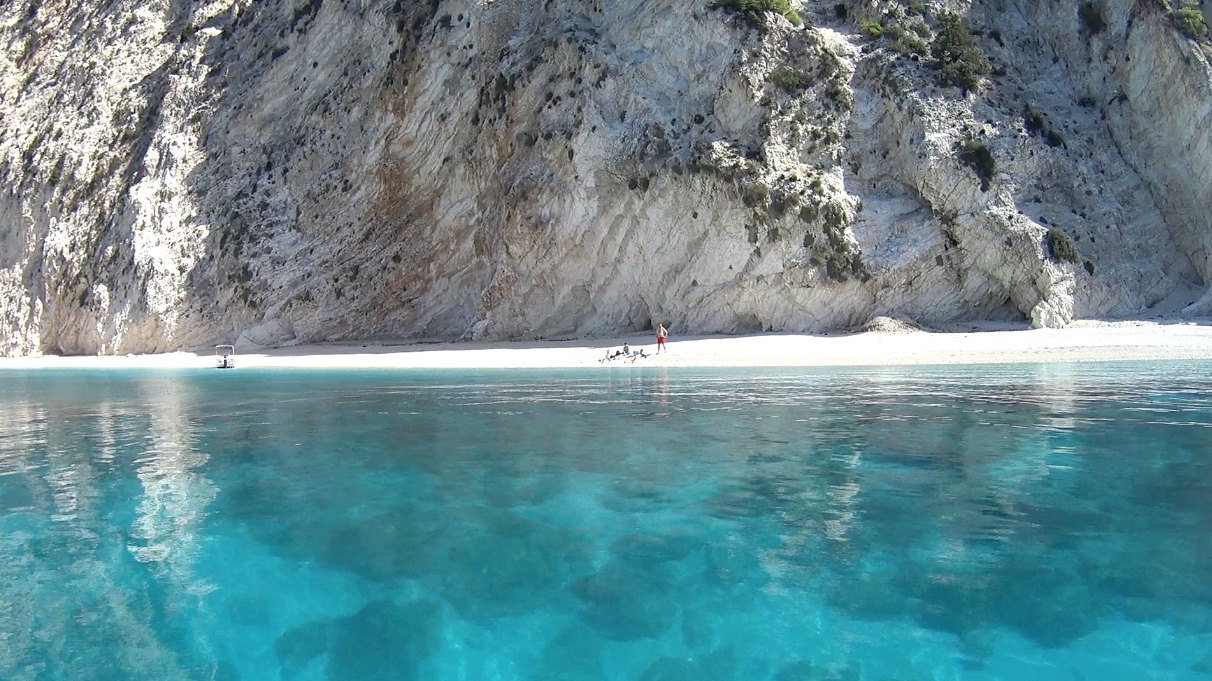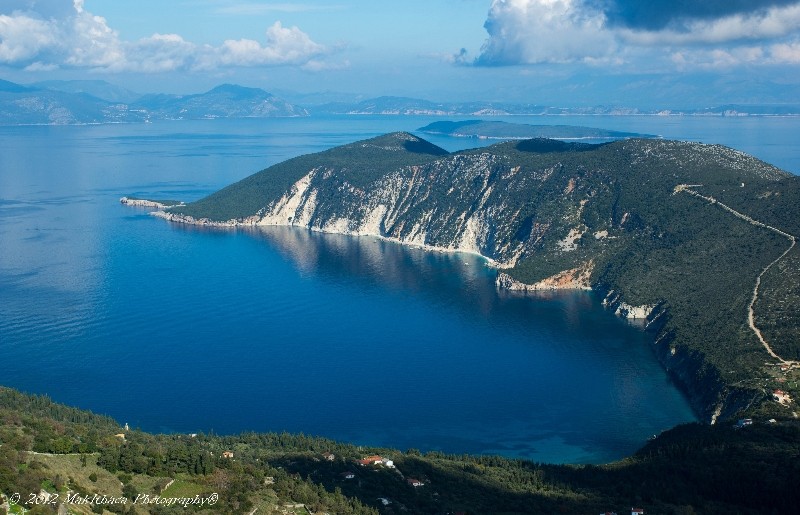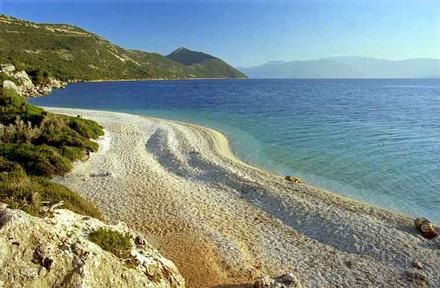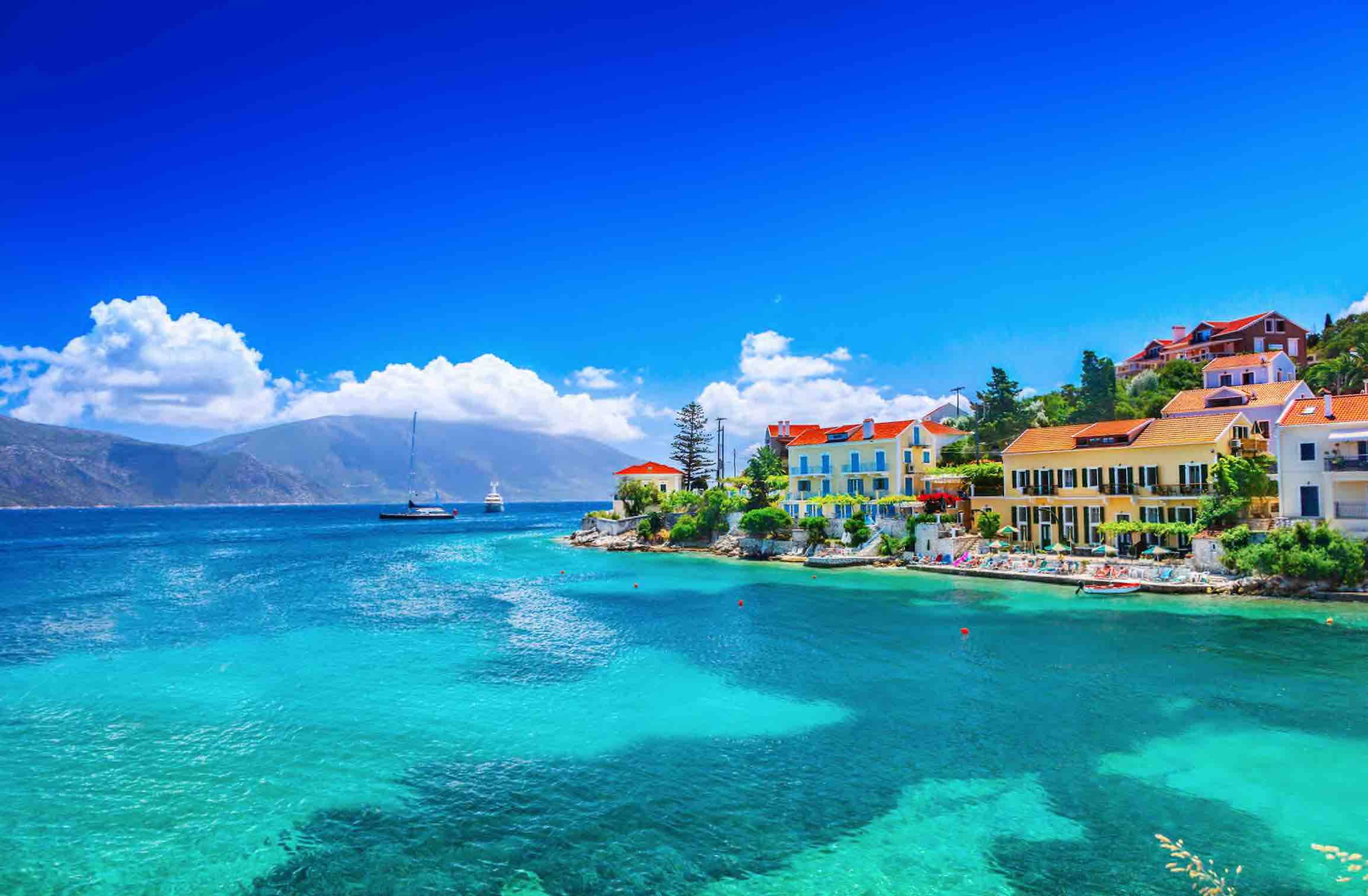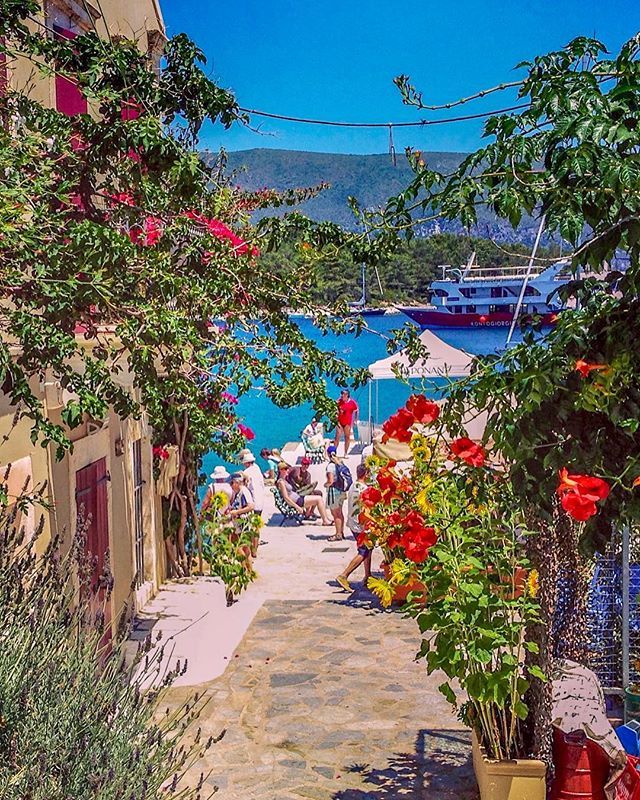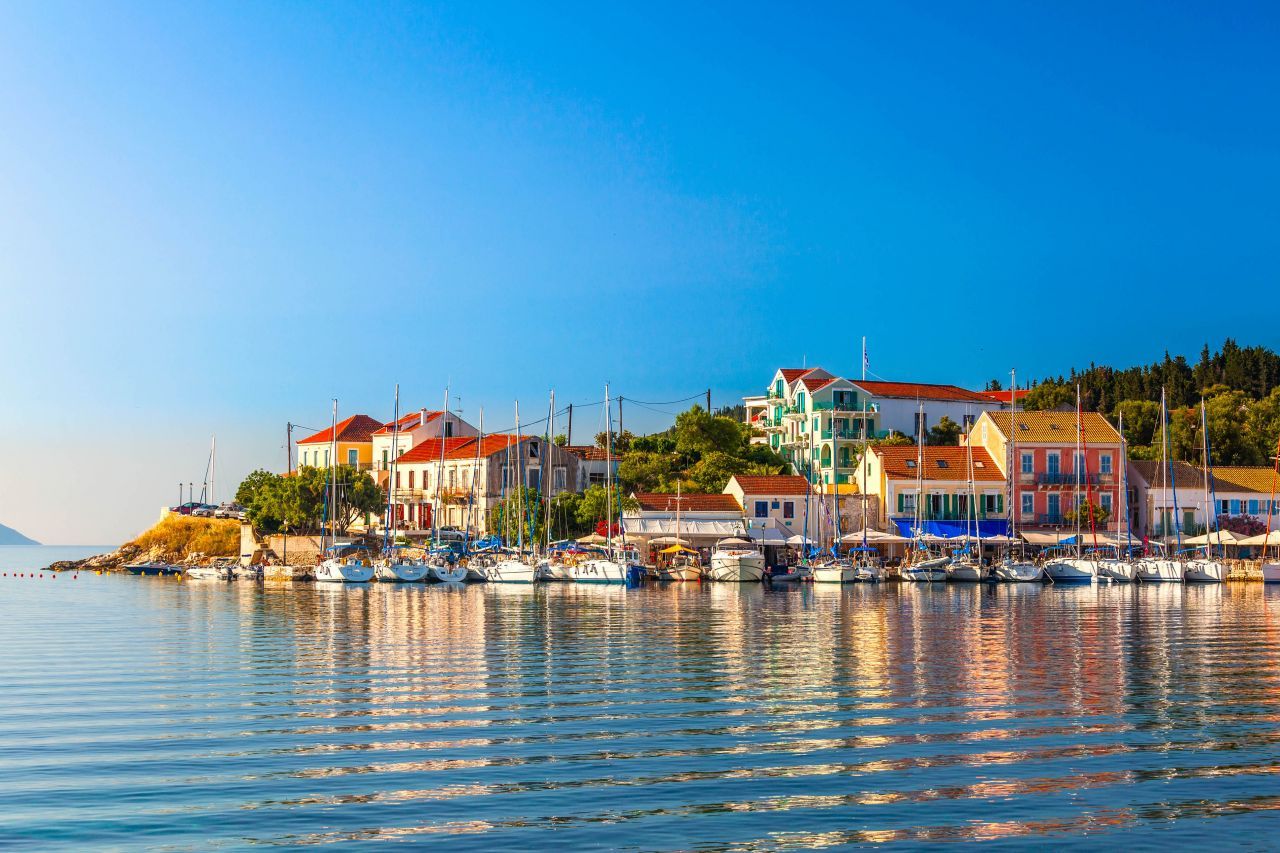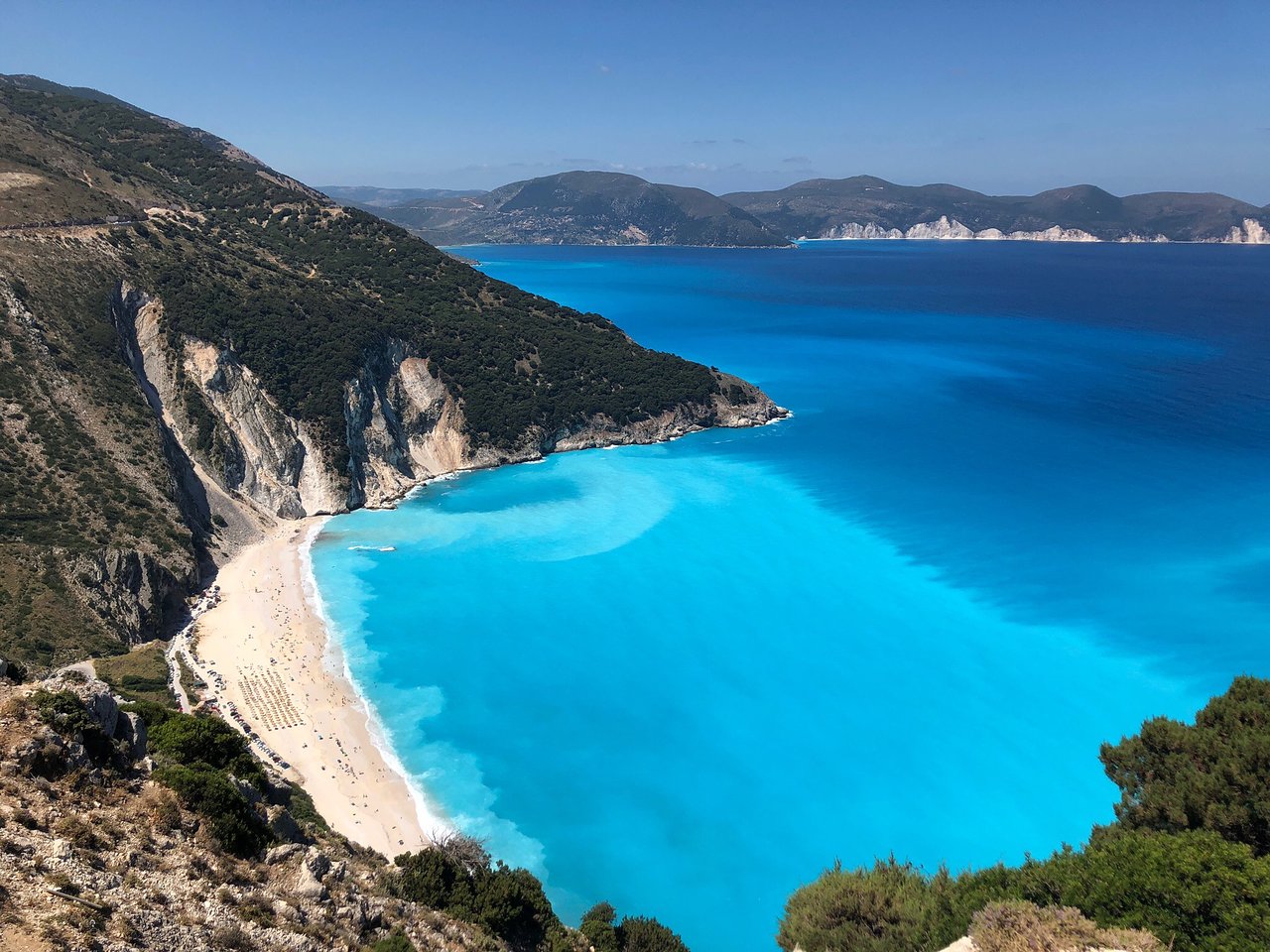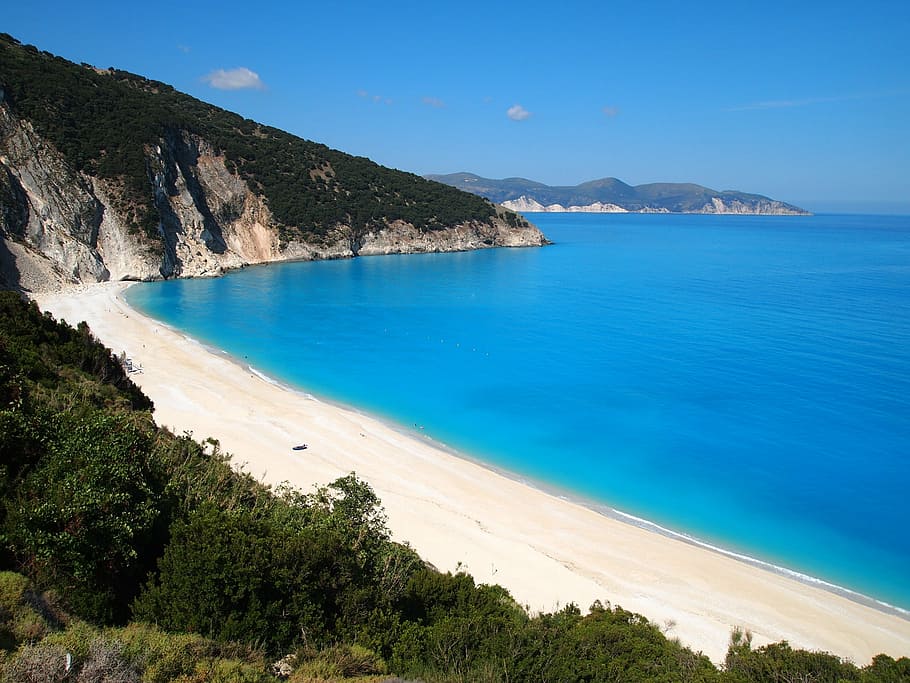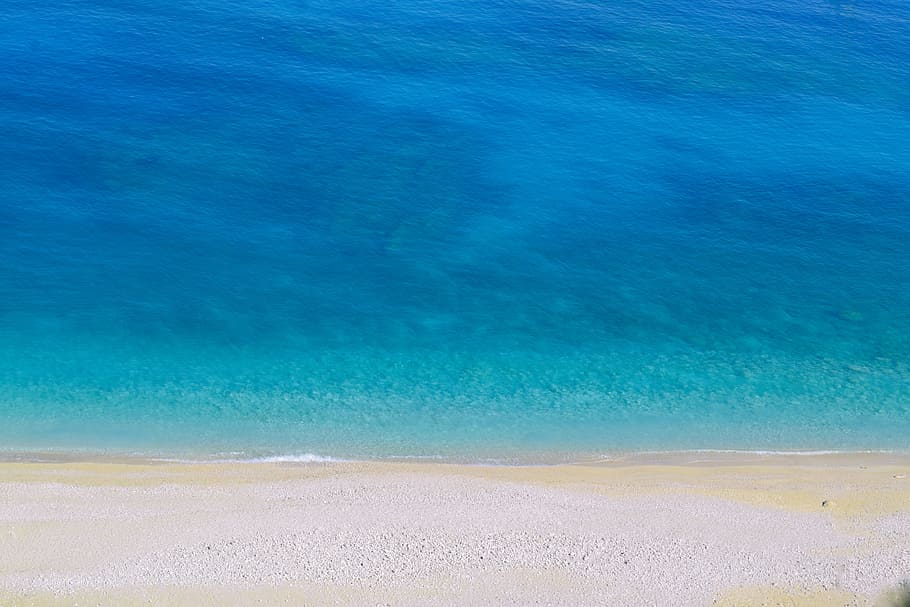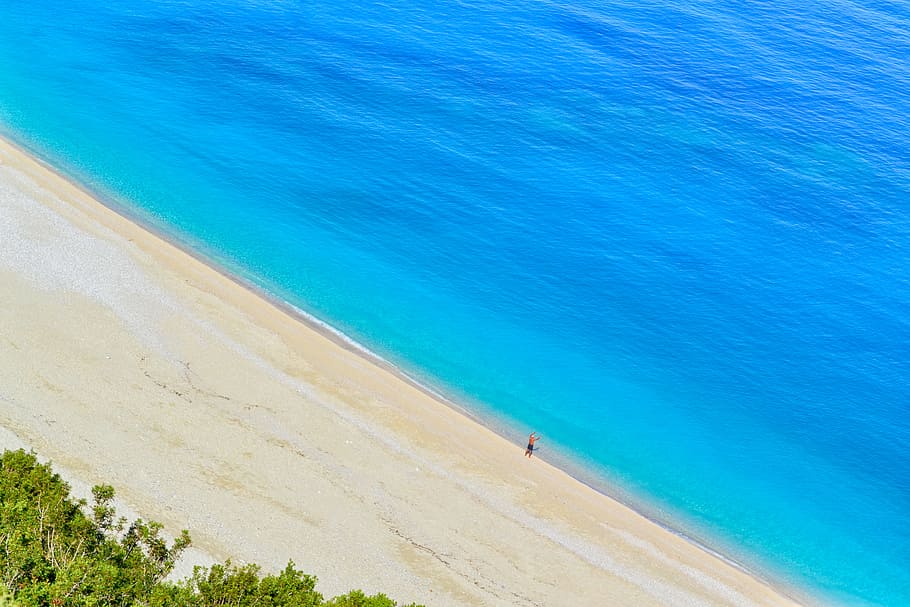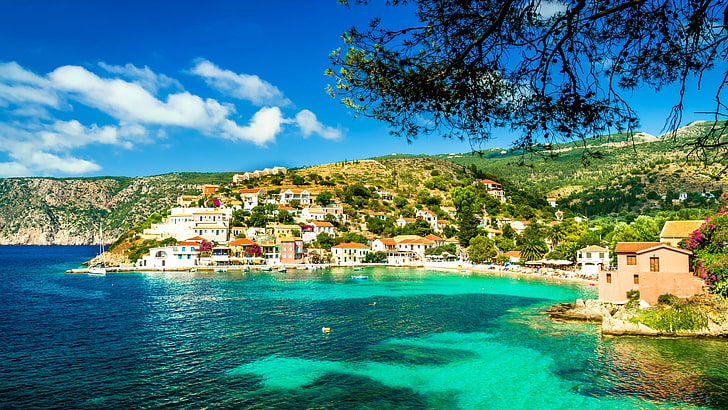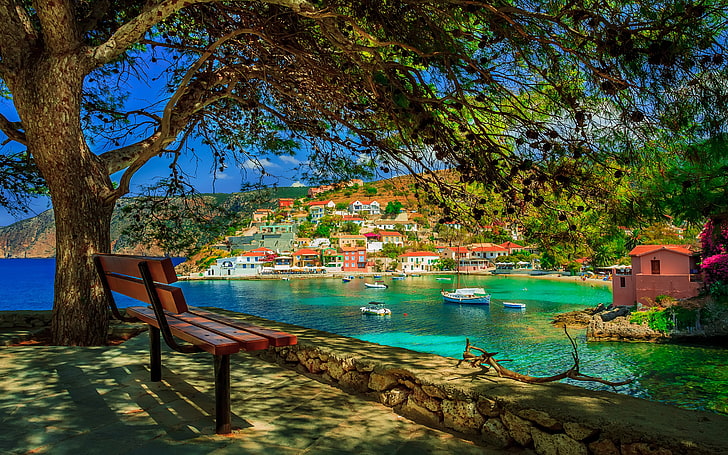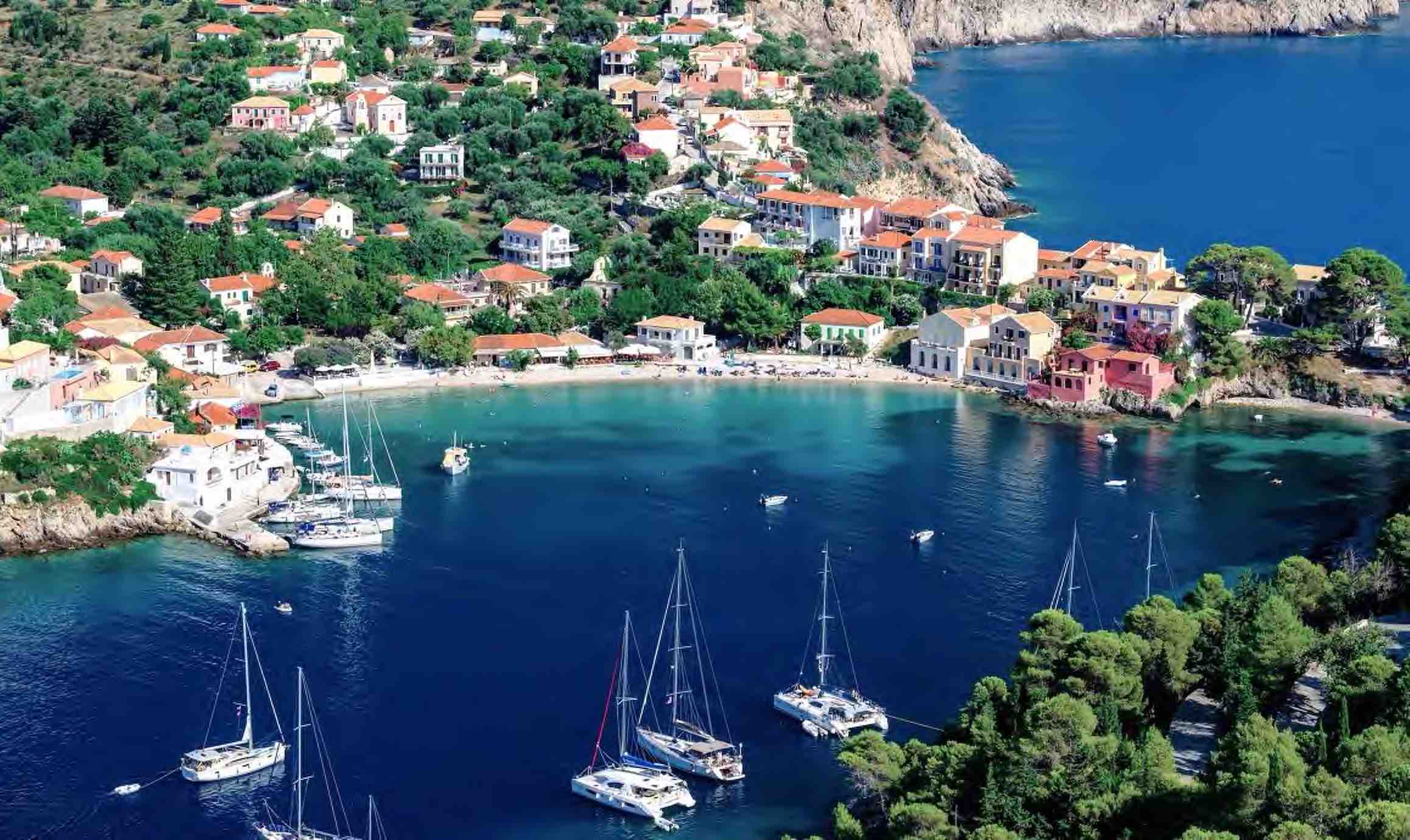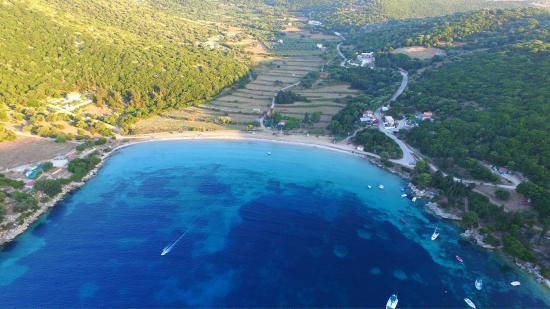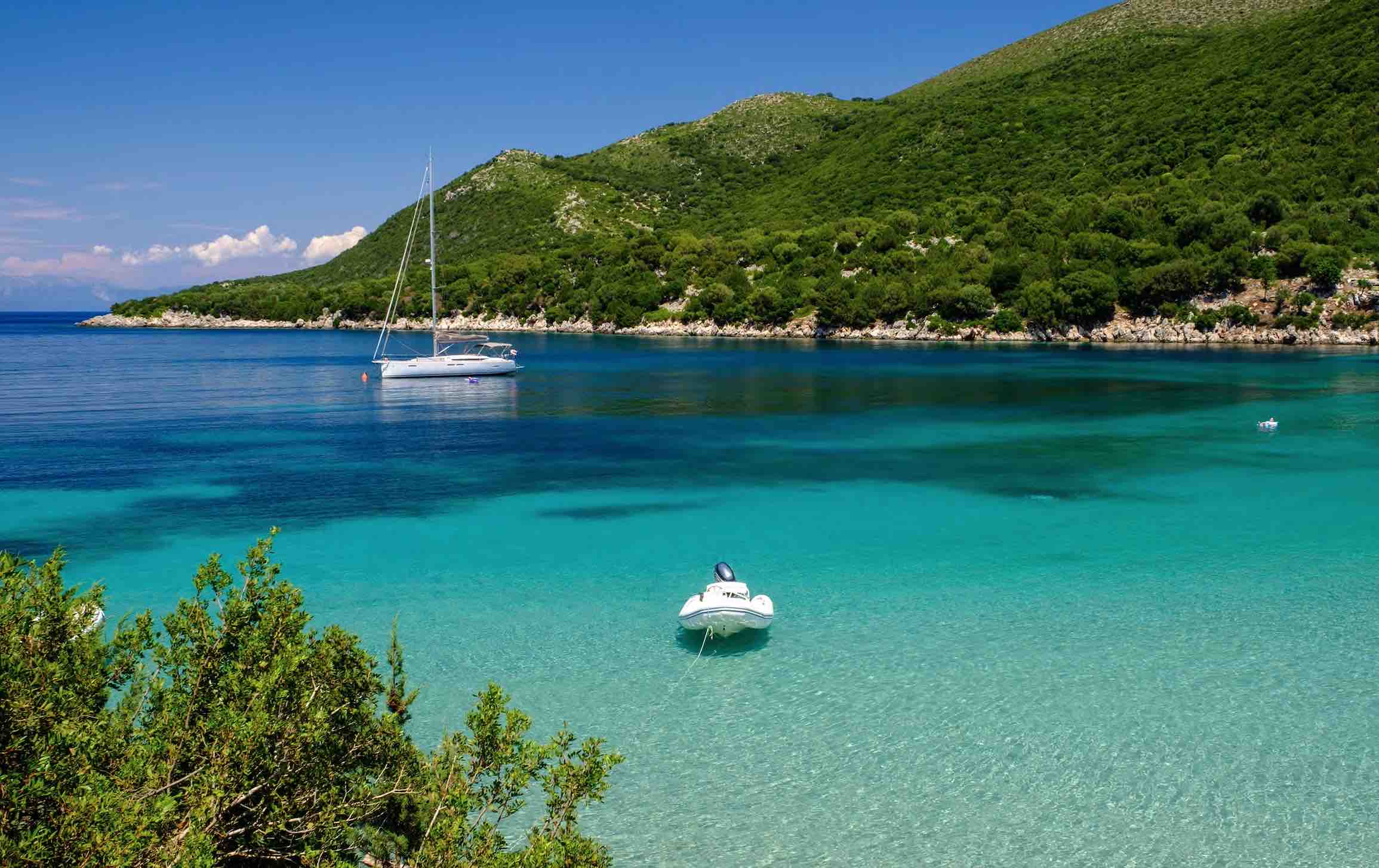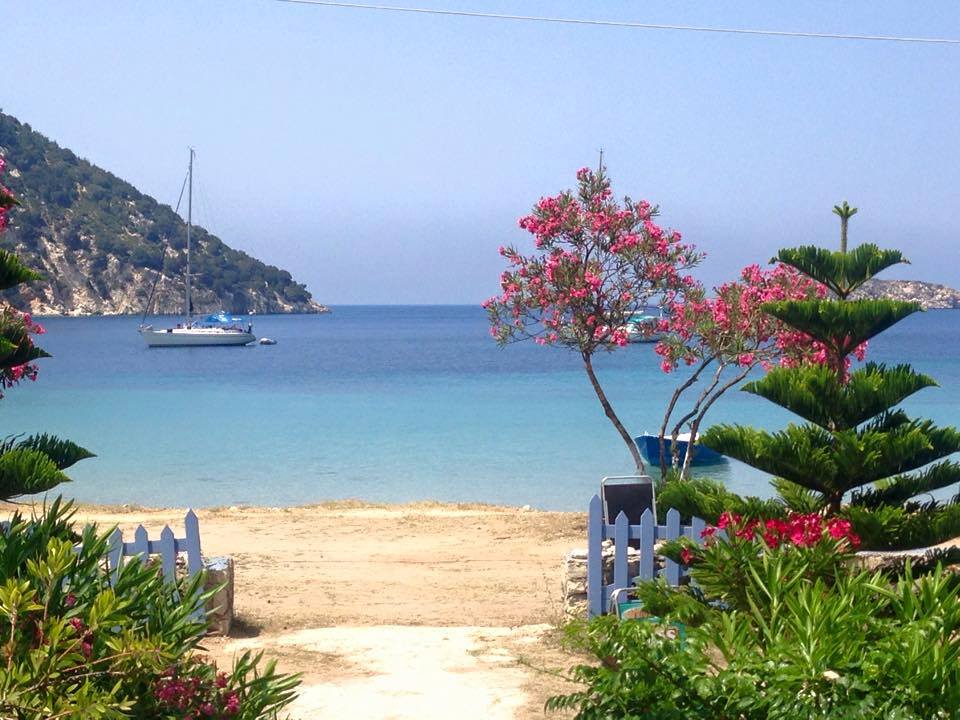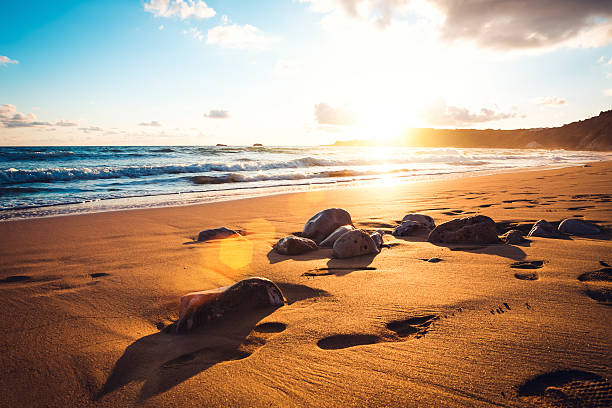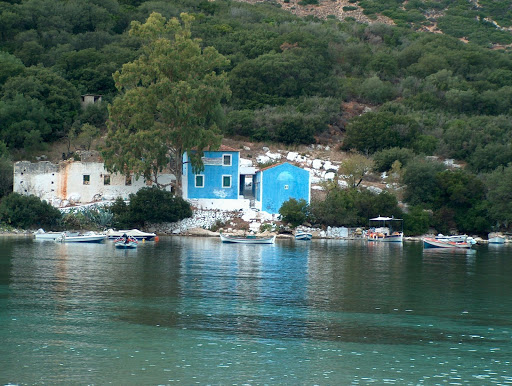A rare mosaic of pristine beaches with imposing mountains, picturesque villages with traditional character and medieval trails with archaeological sites of historical significance colored with rich cultural and spiritual heritage, Kefalonia is located in the heart of the Ionian Sea. The island has an undeniable personality with unique contrasts of mythical beauty and blessed with the true spirit of Greek philoxenia! Embraced with the emerald, sapphire and turquoise waters of the Ionian sea and painted with olive groves and vineyards, the island of Kefalonia emits scents that arouse all the senses, creating a fairy tale scenery whether you sail around or visit the mainland.
Bring your friends, family or lover to sail around the mythical Kefalonia, where according to Homer writings, the local wines (Robola, Muscat, Tsaousi, Vostilidi or Goustolidi and fragrant Moschatella) were known since ancient times for consisting the most appreciable gift, able to hold friendships, create new bounds, dispel misunderstandings and build strong alliances.
Argostoli
Argostoli is the capital of Kefalonia with a population of 14,000 inhabitants. Argostoli stands on the far end of the natural bay surrounded by mountains and verdant forests. Beautiful Venetian buildings used to adorn the town before they were destroyed along with the entire Argostoli and other villages of the island from the major earthquake of 1953. The town has been rebuilt since then. A stone bridge of 650 metres long called the Drapano Bridge stands at the entrance of the capital. At the center is a small pyramid dedicated from Charles de Bosset, who built the bridge, to the British Empire.
The modern and cosmopolitan town of Argostoli is quite busy during the summer season offering a plethora of interesting features and activities. The beautifully paved coastal road promenade is boarded by palm trees and colorful pebbles from the sea. The road ends at the small ferry quay where boats connect to the town of Lixouri every half an hour and fishing boats moor.
The central square of the town called Plateia Valianou (Vallianos Square) is a large and pleasant square lined by many restaurants, cafes and bars. During the evenings, the square gets really crowded with locals who are really warm and friendly. In Argostoli, one can notice the traditional way of life.
The pedestrian Lithostroto Street (Cobbled Street) is the main street of the capital filled with all kinds of shops. There one can admire the beautiful church of Saint Spyridon and the interesting clock tower of Campana Square. Around its outskirts are a range of restaurants that cover all tastes and budgets. Right above the square is one of the town's nicest sights, the lush Botanical Garden.
In Argostoli, one shall visit the Archaeological Museum of Kefalonia which houses interesting archaeological findings from the Mycenaean, Hellenistic and the Roman period. The rich collection contains coins, swords, sculptures and ceramics.
Another worth-visiting museum is the Korgialenios History and the Folklore Museum which is housed in the ground floor of the Korgialenian Library, a 19th century restored Kefalonian house. The museum exposes an interesting collection of photographs from the history of Kefalonia.
The library of Argostoli hosts 50,000 books and old manuscripts, among which are very rare. Nearby the library is the beautiful theatre of Kefalos, one of the best theaters of Greece. The Lighthouse of Saint Theodore is located a couple of km from Argostoli and was built by British Governor Napier. A small round building with white Doric columns locally known as Fanari. This beautiful lighthouse is one of the trademarks of Kefalonia.
Kefalonia in the summer has soft winds, which rise in the afternoon up to 4 Beauforts, usually from the North West, giving the opportunity for sailing for few hours. When sailing at the east of the island, waves are small. Hence sailing is not obstructed by the waves and the nights are usually safe, as the wind fades out in night hours. According to the winds The Nostos Sailing team suggests two different itineraries for smooth sailing but equal excitement.
If the wind is NW (usually starts around midday and ends in the afternoon) you can start your trip going SE.
Day 1: Argostoli – Avythos Beach - Platy Gialos - Lourda Beach - Kateleios Bay : 20 nm
Starting from Argostolia you can sail S, SE towards the small bay of Kateleios. On your way, you have a variety of pristine and exotic beaches where you can stop to enjoy swimming. These are, as you sail eastwards, the White Rocks at Platy Gialos beach, Avithos beach and Lourda beach. Along the beaches mentioned, you will find a big variety of restaurants and beach bars to enjoy your day. Later on, when you wish to rest, you can moor a bit eastwards in Kateleios small port or even outside according to weather conditions. The village nearby has coffee shops and taverns where you can eat local delicacies.
The Nostos Sailing team suggests: Kefalonia island is not all about the sea. The island offers a big variety of activities on land as well. You can go cycling, horse riding, hiking, climbing.
Day 2: Kateleios Bay – Xilomata Beach - Talaros Beach – Lygia Island : 24 nm
Starting from Kateleios you can sail E and N heading to Ithaca island. You can stop halfway to swim at Xilomata beach, south of Sami port before you cross opposite to Ithaca Island.
If you decide to sail straight to Ithaca Island you can visit Talaros beach on the southeast side, a secluded place that can be reached only by sea. Next to it, is the small island of Lygia. You can enjoy swimming and according to the wind conditions, you can moor either on the South or North side of Lygia.
Day 3: Talaros Beach – Sarakiniko Beach – Gidaki Beach – Filiatro Beach - Vathy : 9 nm
Starting from Talaros beach you can sail N heading to Vathy. On your way, you will meet some of Ithaca’s best beaches like Sarakiniko, Filiatro, Gidaki and Sxoinos. You could stop in any of these to enjoy your day at the sea before arriving at the capital of the island, which fans out like an amphitheater. Vathy is built in the inmost part of the gulf of the same name and dates back to 1500 AD. Vathy is an attractive settlement with a pronounced Venetian influence, pretty houses with tiled roofs, imposing mansions and picturesque stone-paved alleys. It has, since 1978, been classified by law as a ‘traditional’ settlement. Vathy has been inhabited continuously since the time of the Venetians. It nestles safely in the beautiful natural harbour that has been identified as the Homeric harbour of Phorcys. This is where the sea-god Phorcys had his temple and where the Phaeacians left the sleeping Odysseus.
The approach to Vathy by sea is truly an experience. The narrow neck of the harbour conceals the view of the gulf that suddenly reveals its true beauty. The entrance to this beautiful natural harbour is guarded by the remains of a small fort with two cannons. This stands just above the beach of Loutsa and was built in 1807, during the French occupation of the Ionian Islands. Purified and beautiful, the tiny isle of Lazaretto adorns the entrance to the harbour and is a point of reference for every Ithacan and visitor. Well-kept and well-lit, it hosts choice cultural events and many baptisms and weddings.
On approaching the quay, the first thing one sees is the Monument to the Sailor, a symbol of the seamanship of Ithaca from the times of the Homeric epics to the present. Through her nautical schools, her maritime trade, her contribution to the struggles of the nation for freedom and the two World Wars, the history of Ithaca is intimately and strongly connected to ships and widely-esteemed captains. Ithaca today honours and continues this significant legacy.
At the town square of Vathy, one is welcomed by the statue with two poses of Odysseus and the bust of Homer. The king of Ithaca, created by the Ithacan artist, Korina Kassianos, gives a certain tone and point of reference to the visitor from the outset. On the one hand, Odysseus the traveler gazes seaward and dreams of the world. On the other, Odysseus the lowly, the earthly, turned and looking towards the interior of the island, labours and struggles.
Every summer various celebrations, theatrical productions, concerts of Greek music, performances by local bands and groups are held. Towards the end of summer every year, seminars on Homeric Literature are organized. International conferences for the study of Homer are organized every three years. These are under the auspices of the Center for Odyssean Studies.
Day 4: Vathy - Kioni - Atokos Island - Frikes – Afales Beach - Fiskardo : 21 nm
Starting from Vathy you can sail N to picturesque Kioni village. On your way to Kioni, you will meet alongside quite a few secluded beaches to enjoy the sea. You could also sail a bit eastward and visit the small island of Atokos and swim at the south east side of it where you can find a few amazing beaches to moor for midday.
Without doubt, Kioni is one of Ithaca’s most beautiful villages and one of the most stunning destinations in the Ionian Sea. Its settlement dates from the 16th century, when access to the sea became imperative for the inhabitants of nearby, hillside settlements.
As you approach Kioni, you are greeted by the sight of its small, beautiful bay and by the traditional, well-maintained houses built amphitheatrically, rising from the sea and losing themselves in the woodlands of the surrounding hillsides. You can moor here at night to visit the village and have dinner.
The Nostos Sailing team suggests: You can stop for lunch and try some of the local dishes of Ithaca at one of our favorite taverns called “Kalypso”.
Sailing a bit northern you will meet Frikes, situated in the northwest of Ithaca. The village was first inhabited in the 16th century when the inhabitants of the surrounding hills began to use the natural harbour of Frikes as their fishing base but mainly to conduct commercial and trading activity with Lefkada and with mainland Greece. According to some academics, Frikes is the harbour referred to by Homer as Reithron.
During the summer, the bay of Frikes can be subject to quite breezy conditions. This local, northwest wind creates ideal conditions for sailing and for windsurfing.
Frikes is home to two particularly well-maintained windmills that look down on the harbour. At night they are illuminated for all to see, especially those visitors dining at one of the various seaside fish restaurants or enjoying a drink or sweet at one of the many cafes to be found here. Those visitors, lucky enough to be in Frikes on June 30th, can enjoy the celebratory festivities held to honour the Holy Apostles.
Sailing Westward you can visit the exotic Afales beaches on the NW side of Ithaka. If the weather allows you could moor here and swim, otherwise you can continue sailing to Kefalonia island westwards and moor to one of the beaches around Fiscardo, either on the North side of the island (Emplysi, Kimilia, Dafnoudi) or from the East side (Fwki, Xilokaravo). There are many secluded beaches in small bays/gulfs where you can find an easy place to moor and avoid the NW Maistros wind that usually blows around midday.
Fiscardo is the picturesque and beautiful Greek harbour village on the Northern tip of Kefalonia which is unique in that it is the only village on Kefalonia that has so many of the original Venetian buildings intact and still in use. Fiscardo is a working village and has a small permanent population. Therefore all necessary facilities are available. Additionally, to cater for the summer influx of visitors, the village has an impressive range of cafes, restaurants, shops and accommodation. The village is rich in history ranging from Roman remains to the well preserved Venetian buildings still in use today. Hours can be spent exploring the small streets, sitting by the harbourside, visiting the archeological sites and more. The village is compact so nothing is too far and most attractions can be reached on foot.
The Nostos Sailing team suggests: The combination of clear, safe water, a spectacular coastline and magnificent underwater topography, make Fiscardo an ideal place for SCUBA diving. Beginners will benefit from diving in the sheltered coves while experienced divers will enjoy some of the spectacular dive locations in the area.
There are two dive centers operating from the port. Both are Padi recognized – this means you can obtain a valid Padi qualification during your stay in Fiscardo. If you have never dived before, we suggest you try the ‘Discover Scuba’ activity. This is a short and safe and fun introduction to scuba diving. The lesson will last 4-5 hours and include an introduction to the equipment, a short lecture and a supervised dive. Here you will actually experience the exhilaration of breathing under water. Once you are hooked, you can continue and take a the first PADI qualification. The certificate you receive is internationally recognized and can be used at any PADI center worldwide. In addition to providing instruction up to the level of dive master, both centers offer equipment and dives for experienced divers.
Day 5: Fiskardo – Assos – Myrtos Beach - Porto Atheras : 23 nm
Leaving Fiscardo and sailing to the West side of Kefalonia, you will have the NW Maistros wind on your side and back making sailing even with Catamaran easy. You will be visiting the picturesque village of Assos, a heaven of tranquility. The village lies at the heart of the spectacular cliffs of the west coast of Kefalonia, and in Venetian times would have been a remote outpost accessible only by a steep mule trail winding up the hillside. The trail itself starts just behind the village and a few minutes’ walk reveals one of the most spectacular views in western Greece, and incredible sunsets! The defining feature of the area is the impressive Venetian castle built in 1570, located on a promontory above the village, where you can enjoy some of the most spectacular views on the island. Nothing in Assos is overstated; this is a traditional Ionian fishing village that has retained its charm.
Sailing further south, you will come across at probably the most photographed (and not photoshopped) beach in Greece Myrtos, which has been described as one of the most dramatic beaches in Greece, consisting of dazzling white pebbles. It has been voted for over 12 times as the best beach in Greece and is considered by many tourist magazines to be one of the 30 best in the world. The color of the sea embraces the changing hues as the light changes, ranging from light to dark to electric blue to turquoise. Enjoying a bracing swim here is definitely one of the best things to do in Kefalonia. You can enjoy the panoramic view of the beach along a 2 km steep, winding road from the village of Divarata.
The Nostos Sailing Team suggests: Handglide over Myrtos Beach for the ultimate panoramic view. If the winds allow it you could also enjoy one of the most beautiful sunsets around the world. The sun sets right in front of the beach into the sea and gifts the viewers with amazing colors and feelings.
Having enjoyed a full day at the most amazing beaches of Kefalonia you can sail westwards to Porto Atheras, a small, secluded bay where you can moor for the night and enjoy local traditional fish dishes in one of the two taverns that are built on the beach. From the beach of Porto Atheras there are many trails to walk in the area around. Make sure you enjoy the stars in your favorite hug.
Day 6: Porto Atheras – Petani Beach – Platia Ammos Beach -Xi Beach - Lixouri : 27 nm
Starting from Porto Atheras you sail on the west side of Kefalonia, heading southwards. On your way back to Lixouri you have a variety of beaches to stop according to your preferences. You can stop to Petani beach, which ranked among the 10 most beautiful beaches of Greece for swimming and lunch. Further south you will come across Platia Ammos beach and as you start sailing eastwards you will see Xi beach where you can try a lot of water sports like wind surfing, kite surfing etc.
Arriving at Argostoli port, we will be waiting to greet you and assist you with anything you may need upon your arrival.
Kindly keep in mind that The Nostos Sailing team is always at your disposal, either before arriving in Kefalonia or during your sailing trip, to help you arrange activities that you may wish to try.
If the wind is S you can start your trip going SW.
Day 1: Argostoli – Petani Beach - Porto Atheras : 27.5 nm
If the prevailing NW wind that usually blows during midday doesn’t appear on your sailing day, you can start your trip going SW and then N to make a stop for swimming and lunch at the Petani beach, which is ranked among the 10 best beaches of Greece. Later on, you can sail N to Porto Atheras, a small, secluded bay where you can moor for the night and enjoy local traditional fish dishes in one of the two taverns that are built on the beach. From the beach of Porto Atheras there are many trails to walk in the area around. Make sure you enjoy the stars in your favorite hug.
Day 2: Porto Atheras – Myrtos Beach – Assos - Fiscardo : 23 nm
Although you have many choices starting from Porto Atheras, for example sailing up N to Lefkas to swim at Porto Katsiki beach (18nm), Porto Egremni beach (22 nm) or the most windproof Vasiliki beach (22nm), The Nostos Sailing team would suggest that you continue exploring around the island of Kefalonia and Ithaca, avoiding the big sailing crowds that usually gather round the island of Lefkas, Meganisi, Kalamos and Kastos. Therefore, starting from Porto Atheras you can stop for swimming at probably the most photographed (and not photoshopped) beach in Greece, Myrtos beach, which has been described as one of the most dramatic beaches in Greece, consisting of dazzling white pebbles. It has been voted for over 12 times as the best beach in Greece and is considered by many tourist magazines to be one of the 30 best in the world. The color of the sea embraces the changing hues as the light changes, ranging from light to dark to electric blue to turquoise. Enjoying a bracing swim here is definitely one of the best things to do in Kefalonia. You can enjoy the panoramic view of the beach along a 2 km steep, winding road from the village of Divarata.
The Nostos Sailing Team suggests: Handglide over Myrtos Beach for the ultimate panoramic view. If the winds allow it you could also enjoy one of the most beautiful sunsets around the world. The sun sets right in front of the beach into the sea and gifts the viewers with amazing colors and feelings.
Continue your sailing to NE to Fiscardo where you can moor for the night. Fiscardo is the picturesque and beautiful Greek harbour village on the Northern tip of Kefalonia which is unique in that it is the only village on Kefalonia that has so many of the original Venetian buildings intact and still in use. Fiscardo is a working village and has a small permanent population. Therefore all necessary facilities are available. Additionally, to cater to the summer influx of visitors, the village has an impressive range of cafes, restaurants, shops and accommodation. The village is rich in history ranging from Roman remains to the well-preserved Venetian buildings still in use today. Hours can be spent exploring the small streets, sitting by the harbourside, visiting the archeological sites and more. The village is compact so nothing is too far and most attractions can be reached on foot.
The Nostos Sailing team suggests: The combination of clear, safe water, a spectacular coastline and magnificent underwater topography make Fiscardo an ideal place for SCUBA diving. Beginners will benefit from diving in the sheltered coves while experienced divers will enjoy some of the spectacular dive locations in the area.
There are two dive centers operating from the port. Both are Padi recognized – this means you can obtain a valid Padi qualification during your stay in Fiscardo. If you have never dived before, we suggest you try the ‘Discover Scuba’ activity. This is a short and safe and fun introduction to scuba diving. The lesson will last 4-5 hours and include an introduction to the equipment, a short lecture and a supervised dive. Here you will actually experience the exhilaration of breathing underwater. Once you are hooked, you can continue and take the first PADI qualification. The certificate you receive is internationally recognized and can be used at any PADI center worldwide. In addition to providing instruction up to the level of divemaster, both centers offer equipment and dives for experienced divers.
Day 3: Fiscardo – Afales Beach – Kioni – Vathy : 20 nm
Starting from Fiscardo you can sail eastwards towards the exotic Afales beach on the north side of Ithaca Island. You can continue to Kioni, which without doubt, is one of Ithaca’s most beautiful villages and one of the most stunning destinations in the Ionian Sea. Its settlement dates from the 16th century when access to the sea became imperative for the inhabitants of nearby, hillside settlements.
As you approach Kioni, you are greeted by the sight of its small, beautiful bay and by the traditional, well-maintained houses built amphitheatrically, rising from the sea and losing themselves in the woodlands of the surrounding hillsides. You can moor here at night to visit the village and have dinner.
The Nostos Sailing team suggests: You can stop for lunch and try some of the local dishes of Ithaca at one of our favorite taverns called “Kalypso”.
You could either moor to Kioni or you could sail a bit more S and moor in the capital of Ithaca, Vathy, which fans like an amphitheater. Vathy is built in the inmost part of the gulf of the same name and dates back to 1500 AD. Vathy is an attractive settlement with a pronounced Venetian influence, pretty houses with tiled roofs, imposing mansions and picturesque stone-paved alleys. It has, since 1978, been classified by law as a ‘traditional’ settlement. Vathy has been inhabited continuously since the time of the Venetians. It nestles safely in the beautiful natural harbour that has been identified as the Homeric harbour of Phorcys. This is where the sea-god Phorcys had his temple and where the Phaeacians left the sleeping Odysseus.
The approach to Vathy by sea is truly an experience. The narrow neck of the harbour conceals the view of the gulf that suddenly reveals its true beauty. The entrance to this beautiful natural harbour is guarded by the remains of a small fort with two cannons. This stands just above the beach of Loutsa and was built in 1807, during the French occupation of the Ionian Islands. Purified and beautiful, the tiny isle of Lazaretto adorns the entrance to the harbour and is a point of reference for every Ithacan and visitor. Well-kept and well-lit, it hosts choice cultural events and many baptisms and weddings.
On approaching the quay, the first thing one sees is the Monument to the Sailor, a symbol of the seamanship of Ithaca from the times of the Homeric epics to the present. Through her nautical schools, her maritime trade, her contribution to the struggles of the nation for freedom and the two World Wars, the history of Ithaca is intimately and strongly connected to ships and widely-esteemed captains. Ithaca today honours and continues this significant legacy.
At the town square of Vathy, one is welcomed by the statue with two poses of Odysseus and the bust of Homer. The king of Ithaca, created by the Ithacan artist, Korina Kassianos, gives a certain tone and point of reference to the visitor from the outset. On the one hand, Odysseus the traveler gazes seaward and dreams of the world. On the other, Odysseus the lowly, the earthly, turned and looking towards the interior of the island, labours and struggles.
Every summer various celebrations, theatrical productions, concerts of Greek music, performances by local bands and groups are held. Towards the end of summer every year, seminars on Homeric Literature are organized. International conferences for the study of Homer are organized every three years. These are under the auspices of the Center for Odyssean Studies.
Day 4: Vathy – Filiatro Beach – Gidaki Beach – Sarakiniko Beach – Talaros Beach – Sami : 19 nm
Sailing from Vathy towards Sami, Kefalonia, you will meet along your way going S many exotic beaches where you can choose accordingly to spend your day. Later on, you can sail W to moor at Sami.
Sami has a delightful waterfront, wide paved streets and Venetian buildings which offer the village a unique charm and reflect the rich heritage of the island. The main coastal road consists of modern amenities, shops and lovely cafes overlooking the busy port. A number of restaurants are found nearby as well. Sami is surrounded by a dream landscape of verdurous imposing hills and stunning coves. You can enjoy unique diving and swimming experience at the green waters of Kefalonia. The village is home to some of the most interesting monasteries and sights in Kefalonia like the monastery of Agrilia, as well as beautiful caves (like Karavomylos and Dragati), some stunning underground lakes like the one at Melissani and Antisamos beach.
During summer, the municipality of Sami organises some interesting cultural events and local festivities, concerts and theatrical performances.
Day 5: Sami – Melissani Cave - Poros – Kateleios bay - Lourda Beach : 31 nm
Before you leave Sami to sail towards Lourdas beach, we would suggest you visit the famous Melissani cave, which is located 2km north of Sami. The Cave of Melissani has a strange appeal. It is one of the most significant places for tourists to visit in Greece. Surprisingly, there is a lake inside the cave that has trees and forests surrounding it. The cave itself is B-shaped with two chambers or halls separated with land or an island in the center. The roof of one of the halls caved in centuries ago letting sunlight filter in. The depth of the lake is 20 to 30 meters. When the sun is right overhead at noon, the sunlight hitting the turquoise-blue waters creates a magical illusion and the whole Cave of Melissani suddenly feels lit with blue light. Slanting rays in the morning and evening have the magical quality of their own. One gets an ethereal feeling of boats hovering in the light! Myth has it that the cave was named after the nymph Melissanthi who committed suicide because her love for God Pan was not reciprocated.
The excavations carried out in 1951 and later in 1962 revealed many artifacts that were found dated to the 3rd and 4th century BC that were used during the post-classical and early Hellenistic periods. Figures of nymphs unearthed have given credence to this legend. Small boats ply on the lake inside the Cave of Melissani. The cave is 36m high, 40m wide and 3.5 m long. A balcony was built on top of the cave for tourists to get a spectacular view of the inside from the top.
The first chamber is sun-lit and the second chamber is dark and has many stalactites covered with algae and moss. Even though they are big in size, they are dwarfed by the huge dome. Surprisingly, many of the stalactites resemble dolphins, the companions and messengers of the nymphs as the legend goes. This chamber is lit with electric lights.
The water in the lake is a mixture of freshwater and seawater. It is about 500m away from the sea and the water is higher than the sea level by 1m. The brackish water enters the Cave of Melissani from one end and flows out from the other. Water is replenished by the springs gushing underneath the 30m in-depth water inside. The Cave of Melissani leaves a memorable and lasting impression on everyone who visits it.
Continue sailing southwards to Poros village. Poros is an attractive coastal settlement of about 1100 inhabitants. Built around a marvelous landscape of lush green forests, Poros is also home to a picturesque port. The combination of dense and verdant vegetation along with the crystal blue sea makes this village one of the most perfect summer destinations. Apart from its beautiful landscape and traditional layout, Poros has become a famous tourist resort in Kefalonia welcoming a great number of tourists and Greek travelers during the summer. Plenty of restaurants and traditional taverns line the waterfront and picturesque cafes.
Among the most important sightseeing that one should definitely see is the impressive Drakena Cave and the superb gorge of Vohyna.
Sailing from Poros S you reach the exotic, pristine beaches of Lourda and Avythos. You have a variety of places to moor for the midday swimming and a great range of taverns by the beach to choose from for your lunch. Later in the afternoon, you can either moor here or find a safer place at Kateleios bay which is nearby.
Day 6: Lourda Beach – Avythos Beach – White Rocks Platia Ammos Beach – Lixouri : 18 nm
On your last day, you have a variety of pristine and exotic beaches where you can stop to enjoy swimming. These are, as you sail westwards, Lourdas, Avythos, Pessada and the White Rocks at Platy Gialos beach. Along the beaches mentioned, you will find a big variety of restaurants and beach bars to enjoy your day.
The Nostos Sailing team suggests: Kefalonia island is not all about the sea. The island offers a big variety of activities on land as well. You can go cycling, horse riding, hiking, climbing.
Day 1: Argostoli - Shipwreck beach Nauagio (Zante) - Marathonisi Island : 45 nm
Starting from Argostoli, you can sail South to Zante island at the famous shipwreck (Nauagio) beach. You can swim there and enjoy the magnificent electric blue water as well as the panoramic view from the top. Later on, you can sail from the west side of the island all the way to the South side at Marathonisi Island for the night. On a good day without wind you can moor at the Nauagio beach. Due to the open sea, however, there is a good chance of strong swel even without wind.
At Marathonisi Island you can see the beautiful sea turtles Kareta-Kareta.
For dinner, we strongly advise one of the best taverns you will visit in the Ionian Islands, "Aperito" at Aghios Swstis.
Day 2: Marathonisi Island - Zante city: 15 nm
On the second day, you can spend some time at the beaches around the area you have moored and then head eastwards and northwards to visit the main city of Zante. Zante offers many interesting places to visit such as the church of San Dionisio, which keeps the relics of the saint, the numerous museums and the picturesque squares of D. Solomos and Saint Mark; this one dated back to the Venetian period and with the only one catholic church of the island.
Besides the seafront (marine road) and the small internal streets of the city, there is a very interesting borough around the ruins of the ancient Venetian castle located at the top of the hill of Strani at the back of the city.
Here the tiny and silent alleys, the old houses with the courtyard with flowers and the enchanting landscape dominating the bay of the city of Zakynthos will make your holiday unique and unforgettable.
Day 3: Tsilivi Beach - Psarou Beach - Ammoudi Beach - Alykanas Beach -Blue Caves - Aghios Nikolaos: 15 nm
On the 3rd day you can sail northwards, heading to Aghios Nikolaos. Along the way you will find numerous amazing beaches and exciting caves to see. You can choose the best one that fits your taste and moor to enjoy the sea.
You can spend the night at Aghios Nikolaos.
Day 4: Aghios Nikolaos-Poros-Sami : 28 nm
On the 4th day, you can sail from Aghios Nikolaos to Sami, Kefalonia Island. When you reach the south side of Kefalonia you can meet a lot of amazing beaches to swim such as Avythos, Platys Gialos, Lourda. However, you can also choose to head straight to Poros where you can also find beaches there to spend your day. Last, but still exciting, option would be to pass all and head to Sami in order to visit the spectacular Melissani Cave.
Day 5: Sami - Aghios Ioannis Beach (Ithaka) - Afales Beach (Ithaka) - Fiscardo : 19 nm
On the 5th day you can sail northwards to picturesque Fiscardo. Along the way you can visit Aghios Ioannis or Stauros Beach on Ithaka island, on your west side. You can choose also, to moor at Afales on the norht side of Ithaka island. Later in the afternoon you can sail to Fiscardo where you can spend the night there.
Fiscardo is the picturesque and beautiful Greek harbour village on the Northern tip of Kefalonia which is unique in that it is the only village on Kefalonia that has so many of the original Venetian buildings intact and still in use. Fiscardo is a working village and has a small permanent population. Therefore all necessary facilities are available. Additionally, to cater for the summer influx of visitors, the village has an impressive range of cafes, restaurants, shops and accommodation. The village is rich in history ranging from Roman remains to the well preserved Venetian buildings still in use today. Hours can be spent exploring the small streets, sitting by the harbourside, visiting the archeological sites and more. The village is compact so nothing is too far and most attractions can be reached on foot.
The Nostos Sailing team suggests: The combination of clear, safe water, a spectacular coastline and magnificent underwater topography, make Fiscardo an ideal place for SCUBA diving. Beginners will benefit from diving in the sheltered coves while experienced divers will enjoy some of the spectacular dive locations in the area.
There are two dive centers operating from the port. Both are Padi recognized – this means you can obtain a valid Padi qualification during your stay in Fiscardo. If you have never dived before, we suggest you try the ‘Discover Scuba’ activity. This is a short and safe and fun introduction to scuba diving. The lesson will last 4-5 hours and include an introduction to the equipment, a short lecture and a supervised dive. Here you will actually experience the exhilaration of breathing under water. Once you are hooked, you can continue and take a the first PADI qualification. The certificate you receive is internationally recognized and can be used at any PADI center worldwide. In addition to providing instruction up to the level of dive master, both centers offer equipment and dives for experienced divers.
Day 6: Fiscardo - Myrtos Beach - Argostoli : 40 nm
Let's do a little more sailing today! Leaving Fiscardo and sailing to the West side of Kefalonia, you will have the NW Maistros wind on your side and back making sailing even with Catamaran easy. You will be visiting the picturesque village of Assos, a heaven of tranquility. The village lies at the heart of the spectacular cliffs of the west coast of Kefalonia, and in Venetian times would have been a remote outpost accessible only by a steep mule trail winding up the hillside. The trail itself starts just behind the village and a few minutes’ walk reveals one of the most spectacular views in western Greece, and incredible sunsets! The defining feature of the area is the impressive Venetian castle built in 1570, located on a promontory above the village, where you can enjoy some of the most spectacular views on the island. Nothing in Assos is overstated; this is a traditional Ionian fishing village that has retained its charm.
Sailing further south, you will come across at probably the most photographed (and not photoshopped) beach in Greece Myrtos, which has been described as one of the most dramatic beaches in Greece, consisting of dazzling white pebbles. It has been voted for over 12 times as the best beach in Greece and is considered by many tourist magazines to be one of the 30 best in the world. The color of the sea embraces the changing hues as the light changes, ranging from light to dark to electric blue to turquoise. Enjoying a bracing swim here is definitely one of the best things to do in Kefalonia. You can enjoy the panoramic view of the beach along a 2 km steep, winding road from the village of Divarata.
The Nostos Sailing Team suggests: Handglide over Myrtos Beach for the ultimate panoramic view.
Having enjoyed a full day at the most amazing beaches of Kefalonia you can sail south to reach Argostoli for the night.


